The Unexplored North - Northern Peru Travel Itinerary
:max_bytes(150000):strip_icc():format(webp)/ayngelina-profile-small-56a413235f9b58b7d0d55abb.jpg)
Baconismagic.ca
This Peru travel itinerary features the best of what to see northern Peru in two weeks.
A region overshadowed by the jewel of the South - Machu Picchu , northern Peru has so much to offer and yet is often only visited by other South American tourists. And while it doesn't have the flash and luxury of Lima or Cusco the prices are bargain basement and many times you'll find you're the only tourist around.
Below is a great itinerary for 10-14 days if you're coming in from Ecuador. If you're coming in from Lima simply do the North-South itinerary in reverse!

Mancora 3-4 days
Mancora is most often visited by travelers coming from Ecuador or tourists who have just hiked Machu Picchu and want to relax on the beach. With a reputation of being a world class surfing site, it attracts a big surf crowd. If you're looking to surf all day and party all night then stay in town.
For those looking for a more relaxed holiday, take a cue from Peruvians and visit one of the quieter beaches just outside Mancora. The beach hotels are much less expensive, as are the restaurants and if you want to head into town taxis are only $1-2.
Chiclayo 2-3 days
This is not a pretty city but it is a great stopping point to see the Lord of Sipán collection, often called the King Tutankamon of the Americas because his tomb was found in impeccable condition.
The museum is new and rivals any modern museum in the world with only an admission price of $10 to see the exhaustive collection of gold, copper, and silver. You can take a day trip out to the tomb which is currently being excavated.
Cajamarca 3-4 days
My absolute favorite place in Peru and one that few tourists know about. I only discovered it on a bus ride when the woman next to me insisted that I go.
This small town, hidden in the mountains, is well known to Peruvians for its delicious cheese and chocolate. Many Peruvians travel to Cajamarca to visit its natural hot springs, pre-Colombian aqueduct and pre-Inca necropolis. As most tourists are Peruvian, day tours are very inexpensive at $5-8.
One final tip - do not leave without trying sudado , tomato-based fish stew.
Trujillo 2-3 days
A pretty colonial city, it is nice to simply walk around and enjoy the views. However, it is also a great home base for taking day trips to ancient ruins.
Most people come to Trujillo to see the famous Chan Chan, which are ruins are an ancient city built from mud but with tours ranging from $5-10 I highly recommend spending a few days to visit others such as the Moche Pyramids (photo above). Read more about Trujillo.
Piura 2 days
Spend a bit of time in northern Peru and you will inevitably hear locals discuss how Lima has stolen their cuisine and is passing it off as their own. In a typical, big city vs. rural country battle Northern Peruvians are very proud of their tradition for the best ceviche in the country and unhappy big city Lima is passing it off as its own.
Those in "the know" visit Pirua which is home to the best ceviche in the country and where chefs from Lima find their inspiration. Conchas negras or black conch ceviche is the crowning jewel and must be sampled.
If you aren't a seafood lover you may want to pass on Piura as it doesn't have much to offer outside culinary prowess and could be in the running for the ugliest city in Peru.
Travel Tip: Buses in northern Peru are very cheap, relatively safe and average about $2/hour. However, try to buy directly from the bus line as costs can double when travel agencies see foreigners walk through this door.
Is It Safe in Peru?
Tips for Picking a Machu Picchu Tour
Your Trip to Lima: The Complete Guide
20 Tips for Traveling in Peru on a Budget
The 12 Most Popular Cities in Peru
Top 10 Reasons You Should Visit Peru
How to Travel From Lima to Cusco, Peru, by Bus, Car, and Plane
Salaverry and Trujillo, Peru - South America Port of Call
Where to Go in 2021: 10 Future Trips You Can Start Planning Now
Quick Travel Options: Five Domestic Airlines in Peru
Trekking the Two-Day Inca Trail to Machu Picchu
Peru Route Planner: Classic Itinerary
The Best Winter Getaways for Families
The Best South American Ruins to Visit
13 Amazing Trips to Take Before You Turn 40
18 Inspiring Aerial Images of Peru
Introducing Northern Peru, home to the ‘new Machu Picchu’
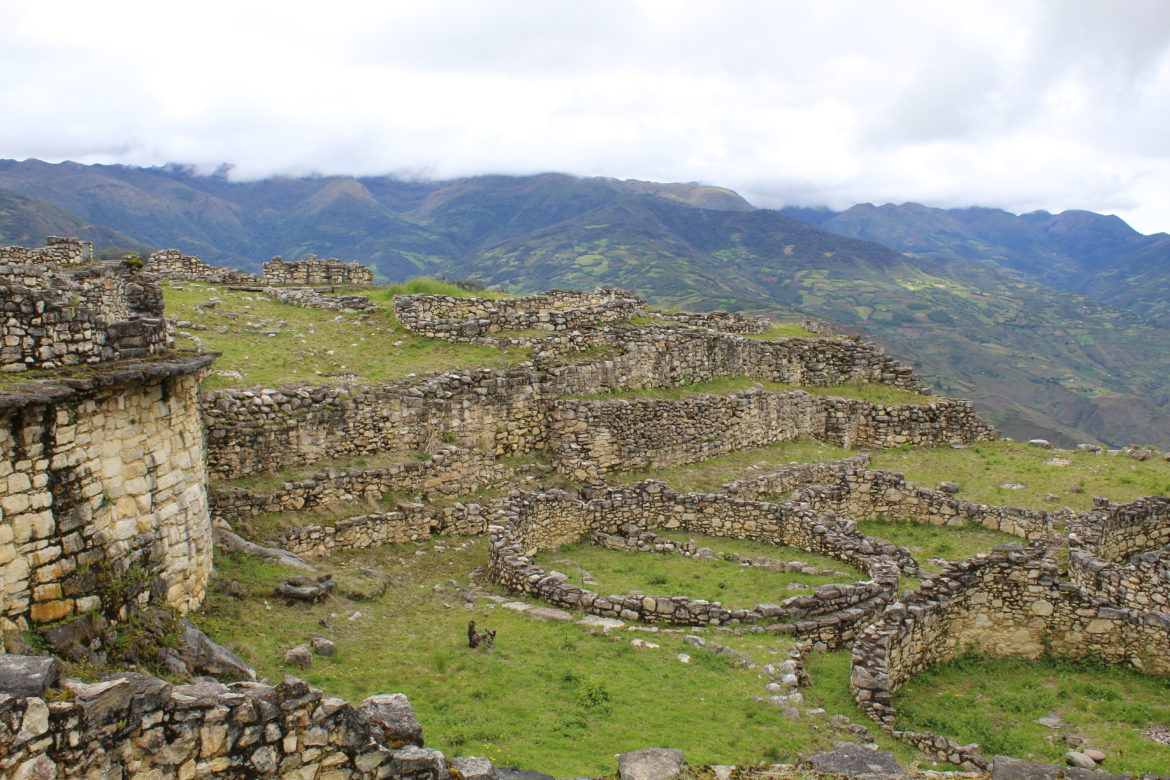
Imagine Machu Picchu. Spectacular, historic, utterly iconic. And then magnify the history and minus the tourists, and you’ve got a sense of Kuelap.
You’ve probably never heard of Kuelap’s pre-Incan ruins and how they pre-date Machu Picchu’s, but it’s time their wonders got some recognition. Because they’re only the tip of the iceberg when it comes to lesser-discovered Northern Peru, a region we’re so excited to be taking travellers to for the first time ever.
Why? Northern Peru just has a different feel to it. Compared to more visited regions and more standard routes, it shows a sleepy, scenic side of the country that very few see: tiny Andean towns, dramatically lush landscapes and all. Not only are there fewer crowds and a more laid-back atmosphere, the highlights really are unbelievable.
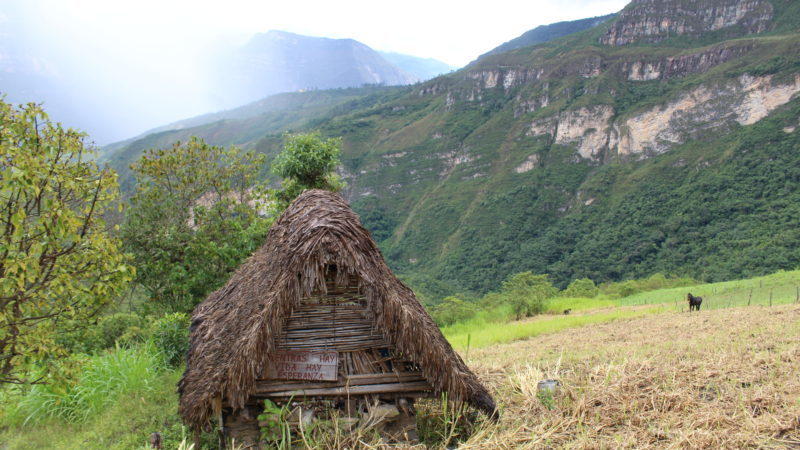
Hiking in Northern Peru
Coming up: a quick guide to this barely-visited region (hint: it includes ones of the world’s highest waterfalls), what you need to know about the ruins of Kuelap, and all the cool activities Intrepid’s 7-day trip has to offer:
The allure of Northern Peru: the must-see spots
A few of our favourite historic and scenic parts:
Kuelap – the ‘new Machu Picchu’
Now, don’t get us wrong – we absolutely love Machu Picchu . We will never tire of standing at its Sun Gate, watching the mist lift off the mountain, feeling oh so small. It really is once-in-a-lifetime, a symbol of South America. But heading to Kuelap is truly like heading back in time. Mostly because you’ll be surrounded by so few other visitors that you can really enjoy the views from the hilltop fortress. And because you can really get lost in your imagination of what this place was like when the Chachapoyas civilization were here.
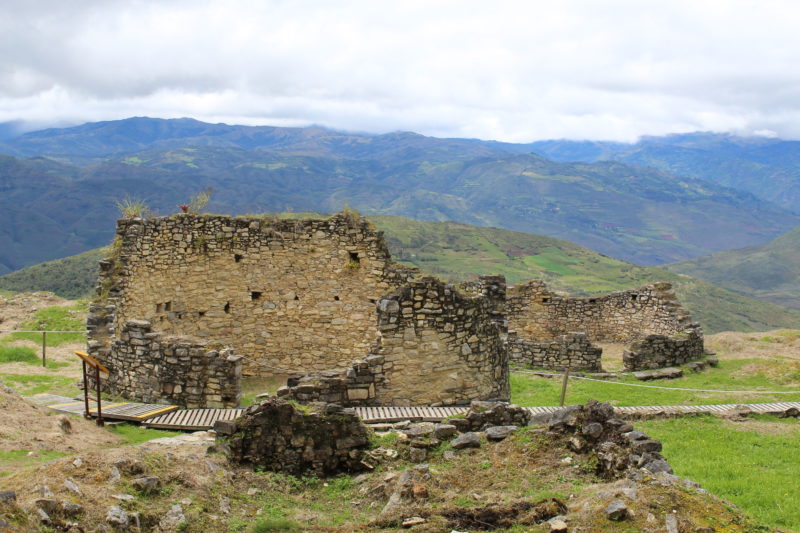
Yes, Kuelap is a pretty special place. It’s one of Peru’s most significant archaeological sites and it’s no longer difficult to get to thanks to the cable car that’s just been completed. Though it will get busier in time, visiting now is a perfect way of coming face-to-face with history. And of taking in Northern Peru’s jungle-clad, panoramic vistas.
READ MORE: 7 REASONS TO VISIT PERU (THAT AREN’T MACHU PICCHU)
The site itself is built on a mountain-top that sits in a cloud forest 3,000 metres above sea level. If that isn’t cool enough, it’s sheer age should be. It’s been estimated that construction on Kuelap began around the 6th-century, coinciding with the rising Chachapoyas culture. Its colossal walls and complex interior architecture reveal administrative, religious, ceremonial and other residences.
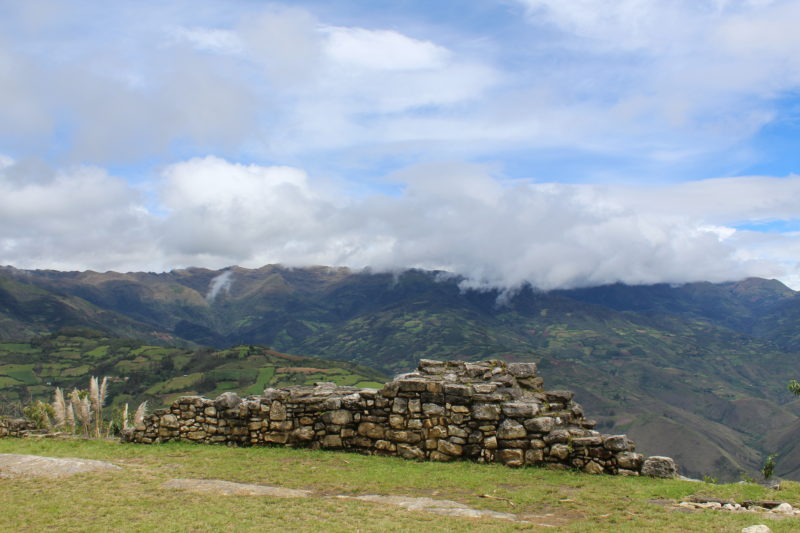
The view from Kuelap
STILL not impressed? Kuelap is considered the largest stone ruin site in the New World. It’s comprised of 10 times the number of stone blocks that were used for the Great Pyramid of Giza. There you have it. A site that’s more than worth a day or so of your time. And, as The Guardian put it, the ‘new Machu Picchu’.
Gocta Falls – a little-known beauty
You’ve probably heard of Iguazu Falls , you may have been to Niagara Falls, and you’ve likely dreamed of Iceland’s array of waterfalls . But, let us be the first to tell you that the Gocta Falls are as spectacular as they are unknown.
That’s no exaggeration – until 2005 the two-level waterfalls sat hidden in the Andes, known only to locals. It’s only been in the last decade or so that they’ve gained more recognition. They’re still incredibly under the radar.
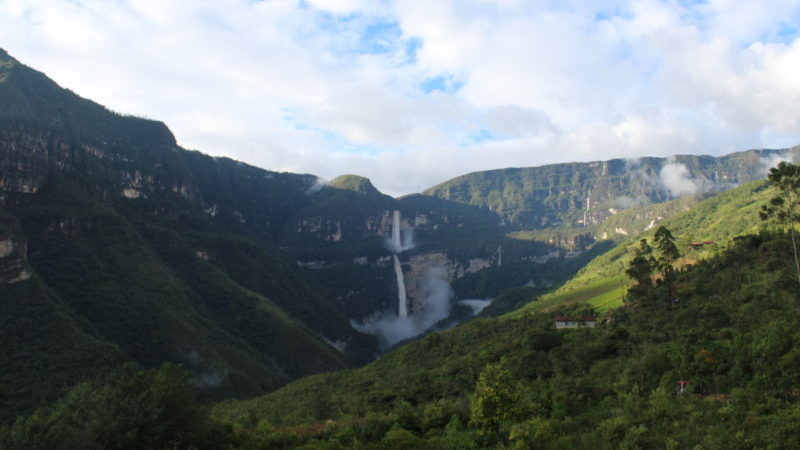
Gocta Falls from afar
There’s little point in us explaining just how magnificent Gocta is – the photos speak for themselves – but rest assured that this spot is a must-visit. Not least because, by some measures, it’s the third highest waterfall in the world. And the 771 meter (2,529 feet) gem is also home to some picturesque hikes and a ton of photo opportunities.
Insider tip on when to visit Kuelap and Gocta from Gary Cohen, Intrepid’s General Manager for South America:
It’s generally quite warm during the day, but can get chilly at night. The best time of year to come here is during the dry season from May to September. A bit of rain isn’t bad though, it gets the Gocta Falls pumping harder!
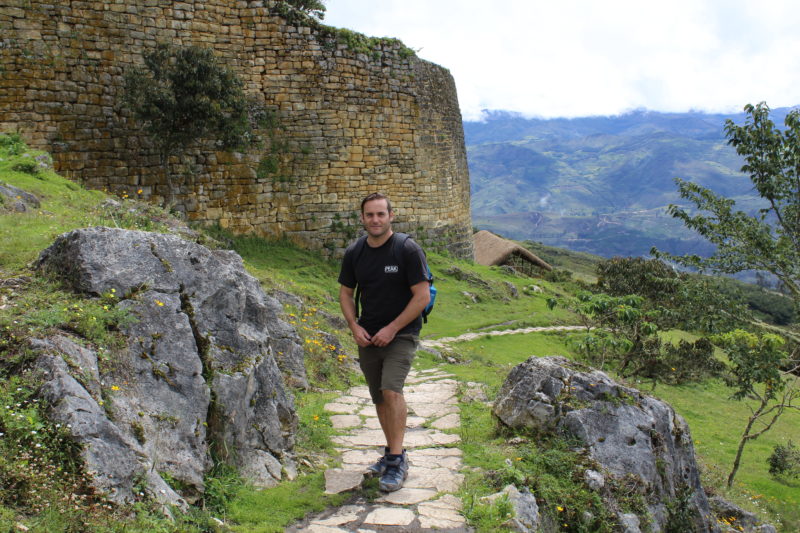
Gary exploring Kuelap
Yerbabuena, Mancora and much more
There’s so much more to Northern Peru. But because we can’t list every cultural, archaeological and natural delight, here are a few more gems:
The Sunday markets of Yerbabuena. The largest market in the entire region, Yerbabuena attracts buyers and sellers from all over to sell produce and animals. It hardly attracts any tourists, making for an authentic and memorable visit.
The historic town of Chachapoyas. Though this town is charming and filled with colonial buildings, it’s its location that really sets it apart. Not only is it the gateway to the walled city of Kuelap, it’s also close to two worthwhile attractions. The first, the Revash Mausoleums, serve as collective tombs for Chachapoya’s dead; the second, Leymebamba Museum, is home to many mummies uncovered at the Laguna de los Condores site.
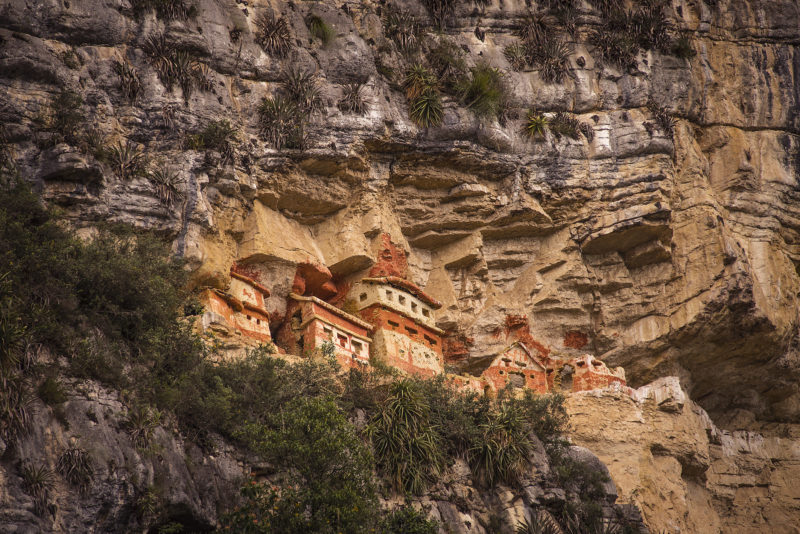
Revash Mausoleums
The surf village of Mancora. Home to some of Peru’s best beaches, sunny Manorca is one of the highlights of the country’s northwest. Its great surf attracts a mix of locals and tourists, but the hot springs, mud baths and lively nightlife are also reasons to visit.
4 benefits of visiting Northern Peru with Intrepid Travel
We know Peru – both north and south – like the back of our hands, but we thought it was worth clarifying exactly how we make our new Northern Peru trip just so unique and memorable:
The expertise of local leaders
The reason we felt so confident saying we know the country like the back of our hands is thanks to the expertise of our wonderful local leaders.
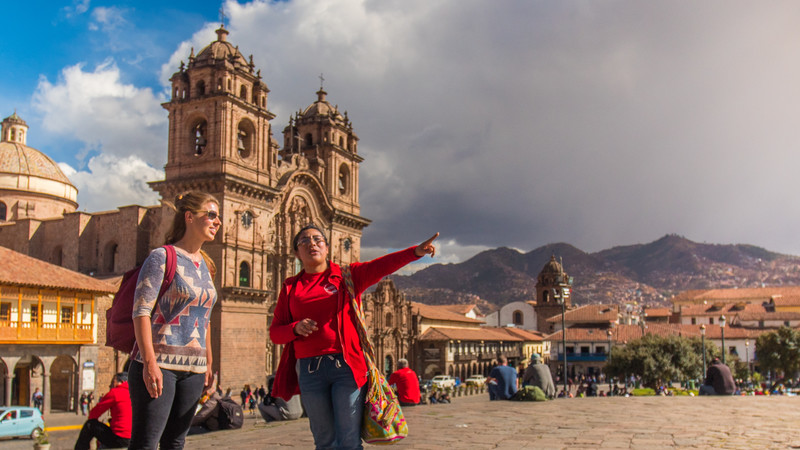
Intrepid leader expertise in Cusco
Our Intrepid tour guides in Peru (all 60 of them!) are all locals. And, more than that, they’re all passionate about showing off their country. So, whether you’re looking for an un-touristy bar in Cusco , a behind-the-scenes insight into Peruvian culture, or some extra encouragement to accomplish that hike, they’ve got your back.
For more info on our local leaders and trips to Peru check out these 10 facts you probably don’t know about Peru .
Insider tips for exploring Lima
As we’ve said, our leaders know all the cool local haunts. Nowhere is this more obvious than in Peru’s capital, Lima. It’s in this city where you begin our Northern Peru trip , and where their tips will prove invaluable upon landing.
To help you acclimatise, we offer an included leader-led orientation walk of Miraflores, a neighbourhood you’ll love. It’s by the sea and offers some of the best parks, shopping and restaurants in the city. Not a bad way to get to grips with the city.
For more incredible experiences in Lima, we recommend our sister company, Urban Adventures. Their day tours are also all led by locals and include coastal biking trips , dinner with a Peruvian family , and a street food and nightlife tour .
Otherworldly accommodation
We handpick all of our accommodation on all our trips, ensuring comfort, safety and an insight into the local culture. But this really is a special one. If you visit Northern Peru with our sister company, Peregrine (trip here ), you stay at a lodge built for the sole purpose of providing views of the awe-inspiring Gocta Falls.
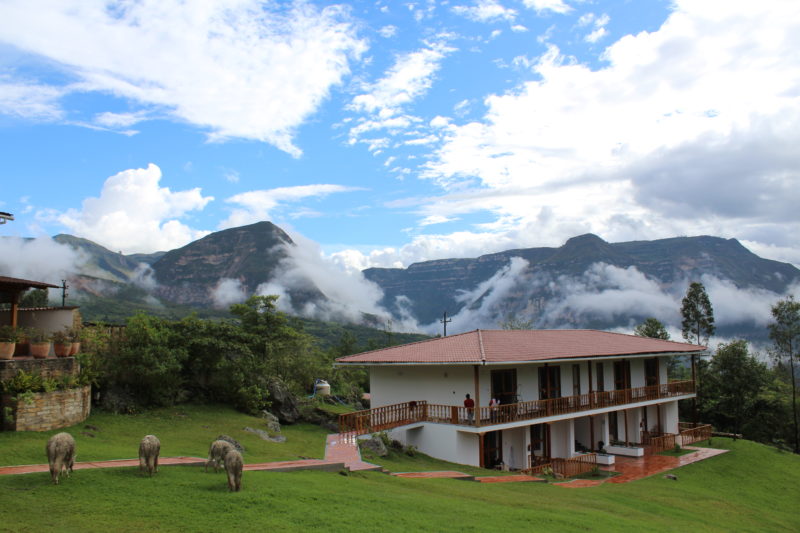
The lodge by Gocta Falls
In other words, it sits nestled in the Andes, oriented towards the waterfall and is surrounded by all the gardens, pools, terraces and llamas (!) you could wish for.
Its outdoor swimming pool isn’t too shabby either.
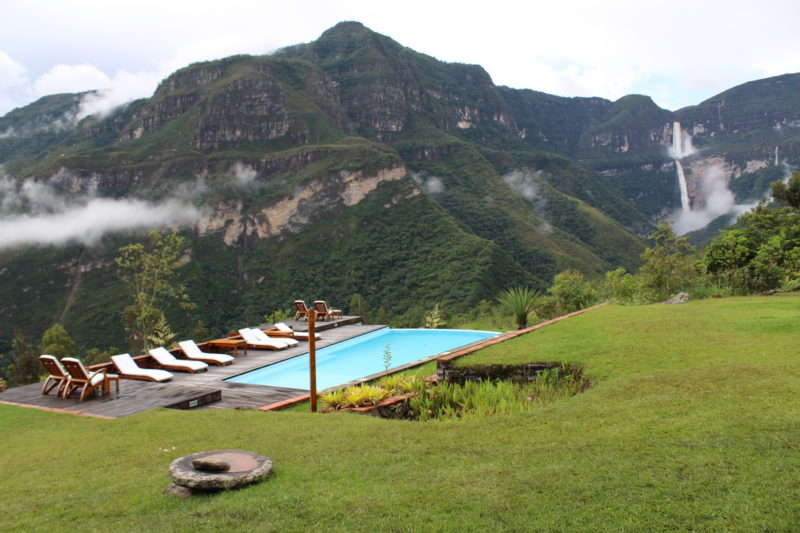
Full-day guided tour of Kuelap
If it wasn’t obvious already, we’re pretty excited about Kuelap. (There aren’t many of us in the fan club YET but Lonely Planet has dubbed it “one of the most significant and impressive pre-Columbian ruins in all of South America”.)
So, to ensure visitors do this wonder justice, we offer a full-day guided tour of the site. It’s pretty spectacular and the local knowledge you’ll receive when there makes it all the more so. Honestly, pay it a visit and you’ll wonder why it receives so few visitors.
The new Machu Picchu has so much to offer the Intrepid explorer.
Northern Peru – beautiful, undiscovered and ripe for adventuring – awaits. Discover it for yourself on our 7-day Northern Peru trip.
Images all c/o Gary Cohen and Intrepid Travel.
Feeling inspired?
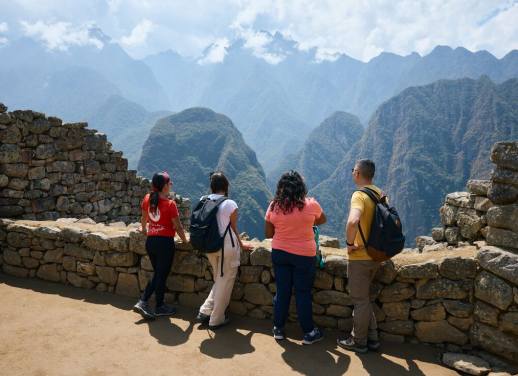
Bex Shapiro
Born in London and based in Toronto, Bex is happiest anywhere she can connect with interesting people over good food. She's passionate about sustainable travel and powerful storytelling, and her favourite cities are New York and Shanghai. She's also the Senior Editorial Manager at Intrepid. Follow her adventures on Twitter and Insta @BexShapiro.
You might also like
Galapagos or madagascar which unique destination should be..., travelling to chile here’s the best time to..., 10 reasons to visit samoa, the 10 antarctica questions you want answered, australia or new zealand where to go on..., 10 epic spots to stop at on your..., small group travel vs coach tours: which style..., costa rica or mexico: which country to check..., 7 of the best destinations for solo travellers..., machu picchu or chichen itza which historical site..., the people you meet: the art of connecting....
The Best Northern Peru Itinerary For Travelers
Everybody knows about the famous tours in the southern part of Peru heading from the coast towards Cusco, or even more popular, the treks to Machu Picchu . but what about exploring some of the lesser-known places in Northern Peru that offer so many wonderful off-the-beaten-track attractions of their own. This itinerary of North Peru is recommended for anyone who is planning to visit Peru with limited time but wanting to experience a new alternative touristic route. Don’t miss this journey through the major sights of Northern Peru!
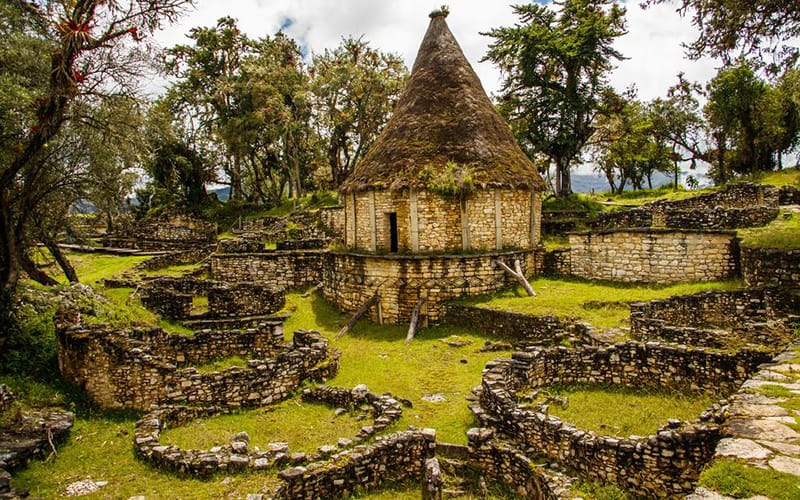
What to See in Northern Peru
What is so special about this alternative route through the North of Peru? Have a look at the sites that you will see:
- Lima: This is the typical starting point for travelers as they arrive in Peru. Despite common thought, the Peruvian capital definitely deserves a couple of days to see. Take some time to visit the hugely popular bars and clubs, and if that’s not your scene then Lima has some of Peru’s best museums, theaters, and art galleries. If you’re looking for fun, street art, and parties then visit the Bohemian neighborhood of Barranco, or if you just want a nice walk and a gorgeous view of the ocean then you can check out the popular Malecón (boardwalk) of Miraflores and explore the Parque del Amor, the Lighthouse and even discover a replica of the Nazca lines. Don’t miss the Plaza de Armas in the historical center, it is full of beautiful and important buildings. Once you’re ready, purchase your bus ticket towards Trujillo which should cost around s/70.
- Chiclayo: Well-known for its delicious food, make sure that you don’t miss your opportunity to sample some of the traditional North Peruvian cuisines like Arroz con Pato (rice with duck), Seco de Cabrito (local dish made of rice and goat) and ceviche made with freshly caught local fish. If what you’re looking for is an amazing day by the ocean, Pimentel Beach is the perfect place for you. Spend the day relaxing on the sand and swimming in the soft waves, head on to the pier and try your hand at fishing, or just stroll along the sands. Chiclayo is also home to some of the country’s most important archaeological sites. Often compared to the tomb of Tutankhamun, in Chiclayo you will find the tomb of the Lord of Sipán. After Chiclayo, it’s time to head to the highlands in Cajamarca .
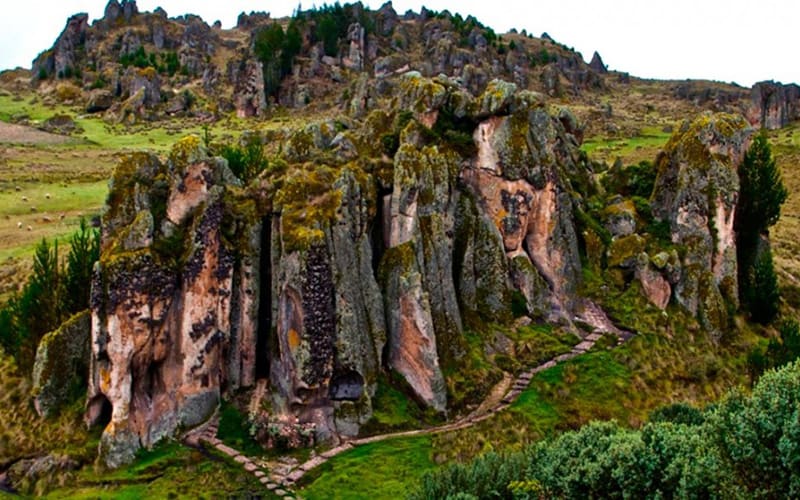
- Cajamarca: One of the most important cities in Northern Peru, Cajamarca is an excellent destination that is often overlooked by travelers. Cajamarca is a very historically important town, as it is where the last Inca was held and killed. The most popular time of the year to visit is during February for the city’s Carnaval festival. Other attractions to see in Cajamarca include the 6 Churches of Cajamarca, The Cumbemayo Stone Forest, Hot Springs in Baños del Inca, Ventanillas de Otuzco and Cuarto de Rescate (Ransom Room). Don’t forget to bring warm clothes as the weather can be very cold. The next stop will be the cloud forests of Chachapoyas.
- Chachapoyas: Named after a famous pre-Columbian civilization, Chachapoyas is a lovely historic town with wooden balconies, colonial style and safe streets. You will definitely enjoy its relaxed lifestyle, beautiful blue skies, and welcoming people. Make sure to visit Kuelap , a famous citadel of the Chachapoya people (often called the “Macchu Picchu of the North”). The Waterfall of Gocta, the Sarcophagi of Karajia and the Museum of Leymebamba are also must-see stops of Northern Peru. Finally, make sure to try the delicious artisanal bread and varieties of cheeses from this area. (check out our guide to the Amazon region for more info). From Chachapoyas, you will begin the descent into the jungle, heading to Moyobamba.
- Moyobamba: Heading into the Selva Alta , or high jungle, takes around 8 hours from Chachapoyas. You’ll arrive first in Moyobamba, known as the City of Orchids due to the wide variety of these flowers found there (see our guide to the San Martín region for more info). This jungle city deserves at least a couple of days, and it’s the perfect place to experience adventure, nature, and culture all in one place. Make sure to visit Aguas Termales de San Mateo (Hot Springs of San Mateo), natural pools with therapeutic properties. You can also go on jungle hikes to the Morro de Calzada or to visit numerous waterfalls. No list of things to do in Moyobamba would be complete without including the local food. Try the famous Avispa Juane (traditional jungle dish made of rice, ground beef, eggs, and chicken) or Inchicapy (green chicken soup with peanuts, cilantro, and yuca). Next, you can head further into the jungle to the city of Tarapoto.
- Tarapoto: Just 2 hours from Moyobamba, Tarapoto is one of the most popular destinations in Northern Peru. Well-known for its nightlife, year-round good weather and amazing attractions, you’ll fall in love with Tarapoto from the moment you step foot there. Visit Calle de las Piedras (Stones street) to have some fun and try exotic drinks or food. If you’re on the hunt for adventure sports, Ahuashiyacu Waterfalls is the perfect place for you. Laguna Sauce (or the Blue Lagoon) is your bucket list item to check off during your visit to Tarapoto. This huge blue lagoon has small boats available to rent and even tours available, so make sure to spend a full day in this hidden place. It’s recommended to spend at least two days in Tarapoto since there are many different places to visit. Next it’s time to head to the Selva Baja or lowland jungle in Iquitos .
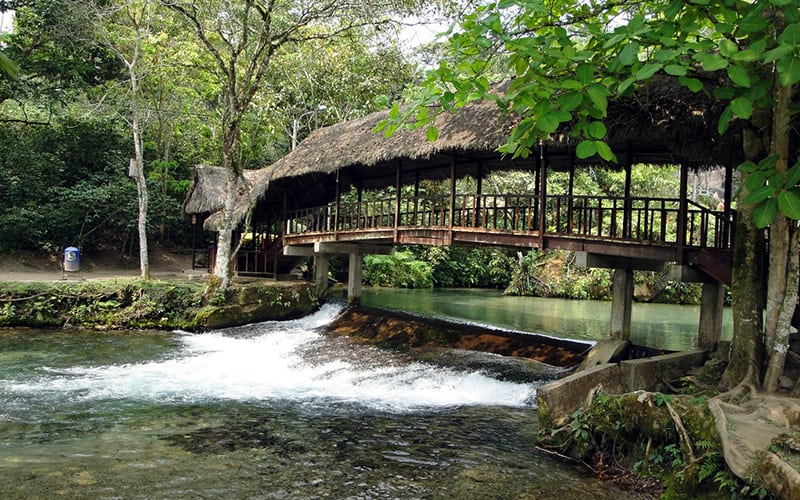
- Iquitos: This is one of the most famous places in Peru, and the largest city in the world that is not accessible by car. Because of this, the most common way to reach the city of Iquitos is by air, which takes just one hour. Alternatively, you can reach Iquitos by boat, sailing down the Amazon River and its major tributaries. To get to Iquitos by boat, you’ll need to get to the town of Yurimaguas which is accessible from Tarapoto by ground transport. From Yurimaguas, you’ll travel on the Marañon River before finally reaching the city of Iquitos. Here you’ll be able to experience some of the most amazing jungle scenery and wildlife in Peru, including butterflies, bats, jaguars, pink river dolphins, caimans, and monkeys. There are a number of excellent protected natural areas in the vicinity, including the pristine Pacaya-Samiria National Reserve. Ethno-tourists will relish in the chance to visit the indigenous settlement of Yaguas, a short boat ride from the town. If you’re seeking spiritual guidance, don’t miss the opportunity to try Ayahuasca.
The places mentioned above represent some of the best attractions in Northern Peru, with a large variety of different things to see and do. You will experience beautiful coastal beaches, misty cloud forests, the beautiful waterfalls of the high jungle, and the steamy lowland jungle all in one amazing trip.
Time Required for Northern Peru Itinerary
If you’re planning to do the complete tour, then three weeks is just about enough time to travel, as each city deserves at least two days to see the most important sights. On the other hand, if you choose to skip a couple of destinations or travel by air rather than bus, you can manage to see a lot of things in a week as well.
This Northern Peru itinerary is becoming more and more popular, for good reason! These cities are amazing tourist destinations, the route is easy to navigate and the tourist infrastructure is good. Keep in mind that as the tour goes ahead, you’ll experience the different kinds of Peruvian climate from frigid highlands to the sweltering jungle, so make sure to bring all the necessary appropriate clothing for the different types of weather.
What Are You Waiting For?
Follow this Northern Peru Itinerary to see some of the amazing sights of Northern Peru, from the coast to the highlands and jungle. You will soon discover for yourself why this alternative touristic route in Peru is getting more and more popular. What are you waiting for? Start planning your perfect dream trip to Northern Peru today!
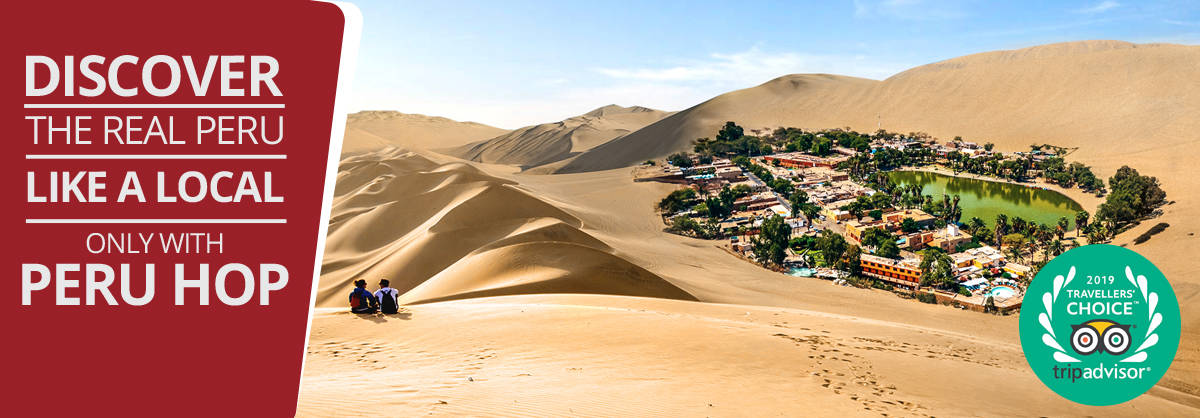
YOU MAY LIKE

Lima to Machu Picchu – Agencies DON’T want you to read this!

#1 Rated Day Trips From Lima To Unforgettable Destinations

Everything You Need to Know to Avoid the Typical Tourist Mistakes At Machu Picchu

What NOT To Do When Visiting Rainbow Mountain

Spend 50% less and see 100% more in Peru

Machu Picchu Tickets – All You Need To Know!

These Hidden Destinations Just Outside Of Lima Will Blow Your Mind!

Peru – How to Avoid Being a Typical Tourist

OFFICIAL: This Company Was Voted The Best Way To Get Around Peru

Peruvian Travel Secrets That Only The Locals Know
You must be logged in to post a comment.
- Search Please fill out this field.
- Manage Your Subscription
- Give a Gift Subscription
- Sweepstakes
- Destinations
- Central & South America
This Region of Peru Has Incredible Ancient Ruins — Without Machu Picchu's Crowds
With its centuries-old ruins and striking mountains, the Amazonas region of northern Peru has no shortage of thrills.
João Canziani
Over the past few decades, Peru has been trying to weightily designate a number of its archaeological sites as “the next Machu Picchu ,” after the famed Incan redoubt in the country’s Sacred Valley. These range from the relatively obscure — like Choquequirao, the “cradle of gold” celebrated as the site of the Incas’ last stand against the Spanish — to somewhat better-known places like Kuélap, a huge, walled mountaintop settlement once populated by the mysterious Chachapoya civilization, the fabled warriors of the cloud forest.
The effort to crown new successors stems as much from the desire to attract adventurous travelers as it does from the need to siphon visitors away from Machu Picchu itself, which, prior to the pandemic, was well on its way to becoming a poster child for overtourism . (The site has gone from fewer than 200,000 visitors a year in 1980 to more than 1.5 million in 2018; by contrast, Choquequirao gets about two days’ worth of Machu visitors over the course of an entire year.) Far more people visit Machu Picchu on an average day than ever lived there; one writer clocked a new #Machu post going up on Instagram every 48 seconds.
As someone who shies away from crowds, I reveled in the idea of visiting underappreciated archaeological masterworks in comparative solitude. So, a couple of years ago, I began cataloging on Google Earth the myriad Peruvian places I wanted to visit, the country’s riches unfolding at the mere drag of the finger. But when I called Marisol Mosquera, who heads the Lima-based luxury operator Aracari Travel , I got a reality check. There was nothing wrong with my fantasy itinerary, she noted — except that it would take months.
The opening scene of the 1981 film Raiders of the Lost Ark, in which the swashbuckling archaeologist played by Harrison Ford swaps a bag of sand for a gleaming gold fertility idol, is supposedly set in this part of Peru. The movie wasn’t actually filmed there, but there were moments when we would have been forgiven for thinking we were in the world of Indiana Jones.
In Peru, distances on a map may look short as the quetzal flies, but actually traversing them — often on narrow, vertiginous roads prone to washouts, rockslides, and a startling array of livestock — can be grindingly slow. A site I’d pegged as an easy day trip was, Mosquera told me, a 17-hour drive, one way. Accessing the sites often involves lengthy hikes, and there isn’t much in the way of anything beyond basic accommodations.
But Mosquera said she had grown increasingly keen on the northern region of Amazonas, particularly the area around Chachapoyas. The colonial mountain town was named for the fierce “lost” civilization that had inhabited the “eyebrow of the jungle” from around A.D. 500 to its eventual conquest, first by the Incas in the late 15th century, then by the Spanish in the mid 16th century.
There were a number of sites in Amazonas to visit, most prominently Kuélap, with its massive walls and hundreds of buildings — many still intact. The site was rediscovered in the 1850s but not given serious attention until the late 20th century. And there were two small, stylish inns Mosquera admired — both run by women, both occupying reforested land, and both within striking distance of significant sites.
The travel plan I hatched immediately encountered headwinds: first, COVID came along; then, I realized I’d forgotten to renew my passport. Finally, I fixed on a week in late April 2022. But dark portents kept appearing. A 7.5 magnitude earthquake struck Amazonas in late 2021, damaging a number of roads. Then, weeks before my departure date, Peru was gripped by political protests, including a strike by transport workers (the country’s episodic bouts of political instability make it worth checking the U.S. State Department website before planning a visit).
Related: I Went On My First Solo Hiking Trip In Peru — Here's How You Can Too
Just when I was days away from setting off, a section of restored wall at Kuélap collapsed, and the government closed the site. Rob Dover, an English-Peruvian dual national who runs Vilaya Tours in Chachapoyas and whom I’d been consulting on my itinerary, suggested I go anyway, for two reasons: first, to draw attention to what many view as the governmental negligence that caused the situation at Kuélap; second, because there were so many other things to see and do.
There was one final hurdle. On the eve of our trip, my brother-in-law Robert, who’d agreed to be my travel partner, revealed that he had a fear of heights. My mind flashed to roads twisting up to the 10,000-foot-high mountaintop pueblos we’d be visiting. “Think of it as exposure therapy,” I joked.
As I stepped out onto the broad deck of my cabin at the Gocta Natura Reserve , I suddenly had the sensation that I was inhabiting the white noise machine, with its settings of “waterfall,” “stream,” and “rainforest,” that for years helped me sleep amid the commotion of New York City. I stared at the massive Gocta waterfall — at 2,530 feet, one of the world’s tallest — coursing with days’ worth of rain. Its dull roar across the valley was joined by a cacophony of avian life; somewhere in the distance, the Gocta River burbled by.
Gocta Natura is located just outside the small town of Cocachimba, itself about an hour’s drive from Chachapoyas, the region’s biggest city — which almost everyone jauntily calls “Chacha.” A 90-minute flight leaves Lima three times a week for its tiny airport. An increasingly popular hub, Chachapoyas is itself worth an afternoon’s wandering. This pleasant mountain town has a university and cobblestoned streets lined with whitewashed buildings accented by Bavarian-looking dark wood details.
After a brief stop at Huancas, a tiny hilltop village with a transfixing view onto the magnificent Sonche Canyon, we headed to Gocta Natura. The six-cabin eco-lodge began life as a second home for Rocío Florez, who was working for the World Bank in Lima when she and her husband visited the area in the early 2000s. They were captivated, and bought a piece of farmland.
Related: Peru's Rainbow Mountain Is An Incredible Display of Color — Here's How to Visit
In 2002, a German engineer measured the falls, then mostly a local secret, and declared them the world’s third tallest. The claim has since been revised downward, but the falls, which descend in two stages, with the top split into two channels, are undeniably impressive — and thus a nascent tourism industry was born. A dirt road was built, and a few small guesthouses opened. Florez, envisioning a “productive retirement,” began building her cabins and planting trees. An expert in sustainable development, she worked from the beginning on statutes intended to lessen the negative effects of tourism. “Some of the younger generation has been returning to Cocachimba,” she said, lured by the burgeoning economy.
Cocachimba, thankfully, still seems quite sleepy. As Robert and I departed at 7 a.m. for the roughly eight-mile round-trip hike to the falls (some visitors go on horseback), a pair of young Danes were the only visitors we encountered. The path, sometimes manicured with paving stones, sometimes a muddy track, wound through thick cloud forests and was dotted with mosses, ferns, and bromeliads. A few small, shuttered huts advertised cold drinks. A little white dog joined us, bounding ahead to each bend and looking back expectantly. We named him Jefe.
Arriving at the base of the falls, we were suddenly in a glistening emerald wonderland. Because the waterfall is so high, it’s mostly mist by the time it reaches the bottom, but the sheer force of the vapor radiates outward in strong, cooling waves.
Arriving at the base of the falls, we were suddenly in a glistening emerald wonderland. Because the waterfall is so high, it’s mostly mist by the time it reaches the bottom, but the sheer force of the vapor radiates outward in strong, cooling waves. I’ve been at waterfalls a fraction of the size that were thronged with selfie-taking hordes; here, we were completely alone. There was no sign of the sirena — a sort of mermaid — that some locals believe inhabits it.
Returning, we began to encounter more people, mostly day-trippers from Chachapoyas. At Gocta, lunch awaited, one of three daily meals the lodge provides — part of an ambitious food program overseen by Florez’s son Matías Cillóniz, who also runs a bistro in Lima. Much of the food served, including Amazonas fruits like cherimoya and passion fruit, is grown on the property. Other menu standouts, like Andean black potatoes — one of Peru’s 4,000-plus endemic species of potato — are sourced from a group of women farmers in a nearby hilltop village.
Florez is trying to bring a new level of hospitality to Cocachimba. “I’ve just trained two ladies who’ve worked with me for years to do massages,” she told us. With excursions often requiring lengthy drives, she’s trying to make Gocta itself a more alluring destination. “The idea is, after a strenuous but beautiful activity, you come back and are pampered.”
One late afternoon, refreshed by a cooling chilcano de pisco cocktail, we walked to town to visit a hummingbird refuge recently opened by Elmer Yalta, the owner of a small hotel whose livelihood was derailed during COVID. Having inherited a chunk of land on the edge of town from his father, he stumbled upon the colibri cola de espátula, an endangered species of bird famed for its drooping, two-pronged tail. Yalta’s pandemic pivot was to convert the agricultural land into a forest stocked with hummingbird-friendly flora. Sitting in a shed, staring at a group of feeders, we watched as the bird suddenly appeared and probed its beak into the feeder, its beautiful, preposterous appendage hovering like some phantom twin. Yalta’s experience seemed emblematic of tourism itself: plant the right amenities, and people will come. But be sure to do it carefully, because ecosystems are fragile.
I had been virtually alone among the remnants of a thousand-year-old tomb built 3,000 feet above the village. It’s increasingly a rarity to come across such an unmediated, little-visited, remarkable place.
The opening scene of the 1981 film Raiders of the Lost Ark, in which the swashbuckling archaeologist played by Harrison Ford swaps a bag of sand for a gleaming gold fertility idol, is supposedly set in this part of Peru. The movie wasn’t actually filmed there, but there were moments when we would have been forgiven for thinking we were in the world of Indiana Jones. One day I took a nearly two-hour taxi ride to the small village of San Jerónimo to see Cerro el Tigre, a set of cliffside Chachapoyan sarcophagi discovered by a local shepherd in 2013. Robert, as if sensing what was coming, opted to stay at Natura, enjoying a book and the waterfall view. And good thing: even the road to the village was near-nosebleed territory.
As at many sites in Peru, access is gained via someone in the local community, in this case the cashier at a small grocery, who asked me to sign a guest book — the last visitors had been weeks before. She then took my money: 10 soles, a little less than $3, for the entrance fee and 50 soles, about $13, for the guide, a 16-year-old girl named Annali. Wearing a colorful sweater and a pair of Wellingtons, Annali nonchalantly led me and my driver, Elvis Hernández — who, having never seen the site, invited himself along — down a track to Cerro el Tigre.
We walked through a pasture, passing cows and dragon-fruit orchards, while a huge, sheer rock face loomed in the distance. After crossing a small waterfall, the butterfly-populated path twisted up a series of tight switchbacks into dense cloud forest. We scrambled up muddy sections and gingerly crossed handmade wooden bridges slick with moisture, finally emerging onto a high ledge marked by the remains of houses, bits of pottery, and, startlingly, a collection of human skulls arrayed on a rock.
More Trip Ideas: Visit Mayan Ruins, White-sand Beaches, and Lush Rain Forest in Mexico's Next Ecotourism Destination
I was still trying to figure out where the sarcophagi were when Annali gestured toward a bridge made of hand-hewn logs. At the end was a ladder — a set of planks, really — nailed to a large tree jutting out into space. I nervously ascended what felt like a homespun tree house from my 1970s suburban youth. Reaching the top, I slowly turned around.
What I saw struck me with some weird primal power: a row of small figures with rounded, earthen bodies, arrayed under an outcropping of rock like Kewpie dolls at a country fair. Their smooth, oval faces, with simple painted eyes cast in shadow by prominent sculpted foreheads, stared silently out, for all time, across the Peruvian altiplano. Closer inspection revealed holes in the sides of the sarcophagi where the human remains had been looted. I took all this in, then made the mistake of looking down. A sheer drop, only partially obscured by dense jungle.
Cerro el Tigre isn’t for everyone: the viewing platform isn’t built to any recognizable safety code, and just getting there is an endeavor. At one point, Elvis and I had to help a truck driver who had stopped ahead of us move several huge boulders out of the road. But the thrill of real, unadulterated adventure was undeniable. I had been virtually alone among the remnants of a thousand-year-old tomb built 3,000 feet above the village. It’s increasingly a rarity to come across such an unmediated, little-visited, remarkable place. And yet, the people of this region would no doubt benefit if Cerro el Tigre became better known, which would bring more visitors to spend money in local villages.
Moments like these kept cropping up. On another afternoon, Robert and I traveled to a new archaeological site near Chachapoyas, a mountaintop settlement known as Cambolín. We were greeted at the windswept summit — unusually, it was easily reachable by car — by Jeff Contreras Soto, an archaeologist, and Amado Lopez, a community member from San Juan de Sonche, the town that oversees visits to the site as well as a nearby zipline and waterfall. Lopez offered a plastic bag of coca leaves, a common remedy against hypoxia. Feeling the altitude , we indulged (placebo or not, it seemed to do the trick).
Thus steadied, we toured the complex with Contreras Soto as he pointed out the rare, still-intact mortar between the stones of the circular houses — a hallmark of Chachapoyan architecture — or pictographs with red target-like motifs. I had been told by Brown University archaeologist Parker Van Valkenburg that rather than a single culture, the Chachapoya were more likely a “mosaic of smaller polities that may have banded together” against Incan imperialism. The presence at Cambolín of square-shaped buildings — an Incan staple — revealed the seeming failure of that strategy.
Related: 25 Best Places to Visit In South America
Will Cambolín be the next Machu Picchu? No. But we were alone, with an archaeologist, for a two-hour visit at a significant, active site that is still being interpreted. Afterward we were taken, along with some students working on the site, to the small town below for a lunch in the community hall served by local women wearing traditional outfits, where we were plied with a further succession of regional elixirs.
“I’ve never seen a culture that has so many ways of burying their dead,” Adriana von Hagen told us over dinner at Kentitambo , the small inn she runs with her partner, Oscar Bravo, outside the town of Leymebamba. There were the aboveground tombs known as chullpas; the cliffside sarcophagi for VIPs; the cave burials. “The walls of Kuélap,” she noted, “are great big cemeteries,” with every nook and cranny used to stash human bones.
Von Hagen, who trained as an archaeologist and is the daughter of noted American explorer-author Victor von Hagen, is a cofounder of the Leymebamba Museum, located just across the road from the inn. It opened in 2000 on the heels of a momentous discovery of Chachapoyan mummies, near a site called Laguna de Los Cóndores — a grueling three-day horseback ride from Kentitambo.
“At first we thought we could do on-site conservation,” she said. But the risk of additional looting was too great. With private funding, a museum was built to house the collection. It’s a fascinating place that, like seemingly everything else, we’d had to ourselves when we visited earlier that day. We peered through glass to look at the conserved mummies, crouched in an almost fetal position, their faces looking frozen in anguish. (It was Edvard Munch’s viewing of Chachapoyan mummies at the 1899 Trocadero Exposition in Paris that inspired The Scream. ) Among other artifacts, the museum has an extensive collection of quipus, the knotted strings that the Incas used as a kind of number-crunching device.
We unpacked a picnic lunch and pored over the tombs and pictographs with binoculars, reveling again at our sense of being alone in the company of these haunting monuments.
Sitting at the table at Kentitambo is like being privy to some archaeological salon, with von Hagen offering tart opinions on overtourism in the Sacred Valley or the lack of attention paid by the government to Kuélap (“it’s been in scaffolding for years”). Bravo, meanwhile, chimes in with a joke and a hearty laugh. The inn is a favorite haunt not just for archaeologists but naturalists of all stripes. (A couple from Michigan, regular guests who are keen lepidopterists, were credited with finding a new butterfly species in the area.) It’s a bit more rustic than Gocta, the food more home-cooked. The climate is a bit wetter, a bit cooler. Befitting its sobriquet as the “hummingbird inn,” its grounds are packed with flora and fauna — I saw the spatula-tailed hummingbird, so rare in Cocachimba, right from my breakfast chair.
More Trip Ideas: How to Travel to Patagonia
Kentitambo is also close to a range of stunning archaeological sites. After our two-hour visit to the Leymebamba Museum, we were taken by Segundo “Viejo” Aguilar, a guide, to a site called La Petaca. We drove for an hour south, and disembarked at the beginning of a cattle trail. It had been raining, and walking was a delicate balance between trying not to lose a rubber boot in the sucking mud and trying not to fall down. We wound through a verdant pastoral landscape that could have been Scotland, then climbed a hill that briefly gave Robert pause — with urging from Viejo, he soldiered on — until we reached a plateau thick with bracken.
Viejo hacked a path with his machete, and we suddenly had a view of a towering rock face. We could see, with the naked eye, mausoleums carved into the cliff. Contemporary archaeologists have explored those spaces using modern climbing equipment to rappel down the sheer cliff face, making it even more astonishing that the Chachapoya were working in this environment a thousand years ago. We unpacked a picnic lunch and pored over the tombs and pictographs with binoculars, reveling again at our sense of being alone in the company of these haunting monuments.
Amazonas is not the easiest place to travel to. It takes a while to get places, and you may have to help your driver clear a path through a washed-out road. On a hike to a site, it’s always further than you think. Bravo, at Kentitambo, used the slang word allishito — meaning, in essence, just a little bit more over there. But when you get to wherever there is, you’ll be convinced that the journey was worth the effort.
Where to Stay
Gocta Natura Reserve : Onetime Lima resident Rocío Florez hosts visitors at six stylishly rustic cabins (ask for one with a view of the stunning Gocta waterfall, a half-day’s hike away) in the hamlet of Cocachimba, while her son Matías Cillóniz oversees a food program supplied by the on-site gardens.
Kentitambo : Run by archaeologist Adriana von Hagen, Kentitambo is a small inn set among verdant cloud-forest foliage and surrounded by hummingbirds, in the small town of Leymebamba. The namesake museum, just across the road, is home to a famous collection of mummies.
How to Book
Aracari Travel : Peru is a large country, and the logistics can be tricky. Marisol Mosquera ([email protected]) can arrange trips to any of the sites mentioned in this article (including the now partially reopened ruins of Kuélap).
Vilaya Tours : Rob Dover, an Englishman who has lived in Peru for decades, is an expert on the Chachapoyas region and offers a wide array of outings, including longer jungle treks and horseback journeys.
A version of this story first appeared in the December 2023/January 2024 issue of Travel + Leisure under the headline "The Height of Adventure ."
Trujillo and the north Travel Guide
Book your individual trip , stress-free with local travel experts
- roughguides.com
- South America
- trujillo-and-the-north
- Travel guide
- Itineraries
- Local Experts
- Travel Advice
- Accommodation
Northern Peru is packed with unique treasures – cultural, archeological and natural. Blessed with fewer tourists and better coastal weather than either Lima or the south (particularly in the high season – May to September), the area encompasses city oases along the coast, secluded villages in the Andes – where you may well be the first foreigner to pass through for years – and is brimming over with imposing and important pre-Inca sites, some of them only discovered in the last decade or two. For many, the biggest attraction will be the beautiful and trendy beaches. For others, it’s the scenery, archeology, and the opportunity to get off the beaten tourist trail.
Around Cajamarca
- Peru's Northern Desert
Trujillo is located on the seaward edge of the vast desert plain at the mouth of the Moche Valley. Its attraction lies mainly in its nearby ruins – notably Chan Chan and the huge, sacred pyramids of the Huaca del Sol and Huaca de la Luna – but also partly in the city itself, and some excellent, laidback outlying beach communities. Huanchaco , only 12km from Trujillo, is a good case in point, essentially a fishing village and a likeable resort within walking distance of sandy beaches and massive ancient ruins.
There are established bus touring routes through the Andean region above Trujillo, all of which present the option of winding through the beautifully situated mountain town of Cajamarca. It was here that Pizarro first encountered and captured the Inca Emperor Atahualpa, beginning the Spanish conquest of Peru. Cajamarca is also a springboard for visiting the smaller town of Chachapoyas and the ruined citadel complex of Kuelap, arguably the single most overwhelming pre-Columbian site in Peru. Beyond, there are possible routes down to Amazon headwaters and the jungle towns of Tarapoto and even Iquitos – long and arduous journeys.
The coastal strip north of Trujillo, up to Tumbes by the Ecuadorian border, is for the most part a seemingly endless desert plain, interrupted by isolated villages and new squatter settlements, but only two substantial towns, Chiclayo and Piura . Newly discovered archeological sites around Chiclayo possess some of the coast’s most important temple ruins, pyramids and nobles’ tombs, the latter containing a wealth of precious-metal ceremonial items, and there are some excellent regional museums such as the Museo de las Tumbas, based near Chiclayo. Northern Peru hosts a number of great beach resorts, such as Chicama and the warm seas of the hottest surf and beach scene in Peru at Máncora, located between Cabo Blanco and the border with Ecuador.
Tailor-made travel itineraries for Peru, created by local experts

8 days / from 2429 USD
Peru: into the Incan Empire
Who were the Incas? What did they do? What happened to them? Discover the answers, and much more, with this unique trip into the heart of the former Inca Empire.

8 days / from 2822 USD
Female Empowerment Tour
From meditations in Miraflores over visits to craftswomen in Chincheros to gratitude rituals in the Sacred Valley. This itinerary will allow you to reconnect with your feminine energy and learn more about women's lives in Peru.

19 days / from 3510 USD
Culture, Nature and Adventure in Peru
Get to know Peru through its locals and breathtaking trails- full of history. Hop aboard a motorboat to get to know the local way of life of the Uros people, before you start the great Inca trail, where beautiful landscapes, archaeological sites and fresh air are waiting for you.
_listing_1614463296559.jpeg)
8 days / from 1885 USD
The Inca Empire and the Nazca Culture
Peru has a rich history and culture, this itinerary will give you a taste of just how special it is. Take a flight over the mysterious Nasca lines, head to Cusco for some brilliant archaeological sites and discover the Inca cities. This trip will leave you wanting more!

12 days / from 6970 USD
Peru - the modern, the iconic, the wild
Spend 12 days in magnificent Peru - famous Machu Picchu, legendary Titicaca Lake and the wild Amazon await. This tour is great for foodies with amazing Peruvian delights, for history and culture lovers in the Sacred Valleys as well as wildlife enthusiasts in the Amazon. Something for everyone!

14 days / from 6565 USD
Best of Peru & Galapagos Islands
Split your South America trip into two fascinating countries: Peru with Machu Picchu and the Sacred Valley, as well as ocean-facing capital Lima. Afterwards, proceed to the Galapagos Islands. You will stay on 3 different islands and explore many more.

11 days / from 9192 USD
Best Machu Picchu and Galapagos Islands Tour Package
Explore a trio of UNESCO World Heritage Sites in this Machu Picchu and Galapagos tour package! Your journey begins in Quito, home to the Middle of the World. Afterward, fly on over to the Galapagos Islands the best biodiversity hotspot and following with the sublime Machu Picchu in Peru.

7 days / from 1640 USD
Peru Express
Soak up some Peruvian culture on a whirlwind tour of Peru. See the capital Lima, pretty Cusco and the Sacred Valley before you acclimatise to the high altitude of Machu Picchu, the greatest mountain city on earth and the gateway to the Incan Empire.

8 days / from 2445 USD
Culinary Peru
Discover the taste of Peru on this unique culinary trip. Starting in Lima, and then travelling on to the Sacred Valley of the Incas, Machu Picchu and later Cusco, this trip includes all the essential destinations, and adds a unique culinary dimension to each, giving a real flavour of the country.

13 days / from 2419 USD
Peruvian Inca Domains
Ideal for everyone wanting to explore the Inca history and combine it with today's culture and traditions. Fly over the mysterious Nasca lines, visit the penguins on Ballestas islands, sail the Titicaca Lake and discover the stunning Sacred Valley with Machu Picchu.

11 days / from 3050 USD
Peru for Nature Lovers
Peru is considered one of the most ecologically diverse countries on earth: 84 of the 103 ecosystems and almost 90% of the world’s recognised climates can be found within the country’s borders. Needless to say, Peru has a lot to offer nature lovers.

14 days / from 4697 USD
Essential Peru
Get to know the best of Peru with this 14-day trip. Explore the cultural and culinary parts of Lima, get to know more about the Andean textile industry, discover Machu Picchu and if that's not enough you will also travel along the most beautiful routes in the world aboard the Titicaca train.

7 days / from 1750 USD
Witness the Sun Ceremony Inti Raymi in 2024
Celebrate the spectacular Sun Ceremony in Peru in 2024. This trip starts on the 24th of June 2024 to be able to witness the ceremony. Extensions and pre-programs are readily available.

14 days / from 4396 USD
The Andes to the Amazon: Peru Explored
Peru has much to offer and excites the most intrepid of travellers, from vibrant cities brimming with history, art and culture to the lofty mountainous heights of Machu Picchu and the Andes. A foray into the steamy Amazonian jungle completes your Peruvian adventure.

8 days / from 2250 USD
The Enigmatic Sites of Peru
Explore the stunning sights of Peru. From the enigmatic Nazca Lines to the historical monuments of Cusco, this trip has it all. Visit the impressive Machu Picchu, a world heritage site, and hike up the magnificent Rainbow Mountain for breathtaking views.

11 days / from 2980 USD
Machu Picchu, Titicaca & Uyuni
The highlights of every Peru and Bolivia trip: the fascinating ruins of Machu Picchu and the Sacred Valley, followed by a trip to Lake Titicaca, the highest navigable lake in the world. Afterwards, continue via La Paz to the Salar de Uyuni, the incredible salt flats.

15 days / from 6380 USD
Exploring Southern Peru
Inca ruins and fascinating tribal customs make Peru a unique destination. Visit Machu Picchu, stay on the shores of Lake Titicaca and take in the beautiful scenery of the Peruvian Andes before you finish your journey on a cultural high note taking in Lima’s museums and colonial gems.

10 days / from 2437 USD
A hidden gem in Peru
Discover the wonders of Peru, with this less crowded route to the North of the country where you will enjoy rarely visited destinations. Archaeological remains will tell you more about its amazing history, and you will remain impressed with its vast nature and beautiful landscapes.

9 days / from 1995 USD
Coast, Mountain Ranges and the Amazon Rainforest
Discover Peru, it's history, nature and culture. You will start in the captivating city of Lima, from where you will make your way to the Sacred Valley and Machu Picchu only to end in the Peruvian jungle....where you can find lakes, nature trails and stunning views.

10 days / from 2287 USD
Wonders of Peru and Bolivia
Start your trip by exploring Lima before heading out to Cusco, the Sacred Valley and Machu Picchu. Spend a few days exploring these wonders before heading off to Lake Titicaca. Just a short hop across the border lies Bolivia with the de facto capital La Paz, ready to be explored.

16 days / from 4665 USD
Hiking Adventures in the Sacred Valley
A unique adventure including a challenging hike to the legendary Machu Picchu. Witness the mesmerizing Rainbow Mountain on a private tour, soar above the enigmatic Nazca Lines, and embrace the thrill of sandboarding amidst the dunes of Huacachina. Breathtaking landscapes and cultural treasures await

4 days / from 950 USD
Active Machu Picchu
An unforgettable adventure from Cusco to Machu Picchu. Sleep in community houses and local accommodations to immerse yourself in the rich culture. Feel the thrill as you mountain bike through rugged terrains, soar through the air on exhilarating ziplines, and hike amidst breathtaking landscapes.

5 days / from 995 USD
The "new" Machu Picchu - Chachapoyas
An incredible journey to Chachapoyas, Peru's hidden gem. Explore the ruins of Kuelap, an ancient fortress shrouded in mystery. Discover the breathtaking Gocta Waterfalls, one of the tallest in the world. Immerse yourself in Chachapoyas' rich culture, scenic landscapes, and archaeological wonders.
Within a short distance of Cajamarca are several attractions that can easily be visited on a day-trip from the city. The closest is the Cerro Santa Apolonia, with its pre-Inca carved rocks, though these are not nearly as spectacular as the impressive aqueduct at Cumbe Mayo, or the ancient temple at Kuntur Huasi. However, the most popular trip from Cajamarca is to the steaming-hot thermal baths of Baños del Inca, just 5km from the city centre. A four-kilometre walk from Cajamarca lies the small village of Aylambo, known for its ceramics workshops, where you can try your hand at making your own pots.
Peru's Northern Desert
The northern desert remains one of the least-visited areas of Peru, mainly because of its distance from Lima and Cusco, the traditional hubs of Peru’s tourist trail, but it is still an invaluable destination for its distinctive landscape, wildlife, archeology and history.
Northern Peru has some excellent museums, besides the breathtaking coastal beauty of its desert environment, which itself contains the largest dry forest in the Americas, almost entirely consisting of algarrobo (carob) trees. The main cities of Chiclayo and Piura (the first Spanish settlement in Peru) are lively commercial centres, serving not only the desert coast but large areas of the Andes as well. If, like a lot of travellers, you decide to bus straight through from Trujillo to the Ecuadorian border beyond Tumbes (or vice versa) in a single journey, you’ll be missing out on some unique attractions.
The coastal resorts, such as the very trendy Máncora and Punta Sal, but also Cabo Blanco and, further south La Pimentel, the beach serving Chiclayo’s population, are among the best reasons for stopping: though small, they usually have at least basic facilities for travellers, and, most importantly, the ocean is warmer here than anywhere else in the country. The real jewels of the region, however, are the archeological remains, particularly the Valley of the Pyramids at Túcume and the older pyramid complex of Batán Grande, two immense pre-Inca ceremonial centres within easy reach of Chiclayo. Equally alluring is the Temple of Sipán, where some of Peru’s finest gold and silver grave-goods were found within the last fifteen years.
Batán Grande
The site at BATÁN GRANDE, 57km northeast of Chiclayo, incorporates over twenty pre-Inca temple pyramids within one corner of what extends to the largest dry forest in the Americas, the Bosque de Pomac. There’s an interpretative centre at the main entrance, which has a small archeological museum with a scale model of the site.
Part of the beauty of this site comes from its sitting at the heart of an ancient forest, dominated by algarrobo trees, spreading out over some 13,400 hectares, a veritable oasis in the middle of the desert landscape. Over ninety percent of Peru’s ancient gold artefacts are estimated to have come from here – you’ll notice there are thousands of holes, dug over the centuries by treasure hunters. Batán Grande is also known to have developed its own copper-smelting works, which produced large quantities of flat copper plates – naipes – that were between 5 and 10cm long. These were believed to have been used and exported to Ecuador as a kind of monetary system.
Brief history
The Sicán culture arose to fill the void left by the demise of the Mochica culture around 700 AD, and were the driving force in the region from 800 to 1100 AD, based here at Batán Grande. Known to archeologists as the Initial Lambayeque Period, judging by the beauty and extent of the pyramids here, this era was clearly a flourishing one. Nevertheless, Batán Grande was abandoned in the twelfth century and the Sicán moved across the valley to Túcume, probably following a deluge of rains (El Niño) causing devastation, epidemics and a lack of faith in the power of the ruling elite. This fits neatly with the legend of the Sicán leader Naymlap’s descendants, who evidently brought this on themselves by sacrilegious behaviour. There is also some evidence that the pyramids were deliberately burnt, supporting the latter theory.
The main part of the site that you visit today was mostly built between 750 and 1250 AD, and comprises the Huaca del Oro, Huaca Rodillona, Huaca Corte and the Huaca Las Ventanas, where the famous Tumi de Oro was uncovered in 1936. The tomb of El Señor de Sicán (not to be confused with the tomb of El Señor de Sipán), on the north side of the Huaca El Loro, contained a noble with two women, two children and five golden crowns; these are exhibited in the excellent museum in nearby Ferreñafe. From the top of these pyramids you can just about make out the form of the ancient ceremonial plaza on the ground below.
Bosque de Pomac
The National Sanctuary of the Pomac Forest is the largest dry forest in western South America. A kilometre or so in from the interpretative centre you’ll find the oldest algarrobo tree in the forest, the árbol milenario; over a thousand years old, its spreading, gnarled mass is still the site for pagan rituals, judging from the offerings hanging from its twisted boughs, but it’s also the focus of the Fiesta de las Cruces on May 3. In the heart of the reserve lies the Bosque de Pomac, where over forty species of bird such as mockingbirds, cardinals, burrowing owls and hummingbirds have been identified, and most visitors at least see some iguanas and lizards scuttling into the undergrowth. Rarer, but still present, are wild foxes, deer and anteaters. There’s also a mirador (viewing platform) in the heart of the forest, from where it’s possible to make out many of the larger huacas. Although there is hostel accommodation at the interpretative centre, it’s rarely available or open: you’ll have to turn up and chance it; there is a camping area outside, however. The café here, selling basic snacks, is not always functioning, so bring a picnic.
The old colonial town of LAMBAYEQUE, 12km from Chiclayo city, must have been a grand place before it fell into decay last century; fortunately, it seems on the road to recovery, helped by its popular museums and vibrant Sunday markets. Buildings worth seeing here include the early eighteenth-century lglesia de San Pedro, parallel to the main square between de Mayo and 8 de Octubre, which is still holding up and is the most impressive edifice in the town, with two attractive front towers and fourteen balconies.
Museo de las Tumbas Reales de Sipán
The Museo de las Tumbas Reales de Sipán, or Museum of the Royal Tombs of Sipán, is an imposing concrete construction in the form of a semi-sunken or truncated pyramid, reflecting the form and style of the treasures it holds inside. This mix of modernity and indigenous pre-Columbian influence is a fantastic starting-point for exploring the archeology of the valley. You’ll need a good hour or two to see and experience all the exhibits, which include a large collection of gold, silver and copper objects from the tomb of El Señor de Sipán, including his main emblem, a staff known as El Cetro Cuchillo, found stuck to the bones of his right hand in his tomb. The tomb itself is also reproduced as one of the museum’s centrepieces down on the bottom of the three floors. The top floor mainly exhibits ceramics, while the second floor is dedicated to El Señor de Sipán’s ornaments and treasures. Background music accompanies you around the museum circuit using instruments and sounds associated with pre-Hispanic cultures of the region. A musical finale can usually be caught on the ground floor.
The Lambayeque Valley has long been renowned for turning up pre-Columbian metallurgy – particularly gold pieces from the neighbouring hill graveyard of Zacamé – and local treasure-hunters have sometimes gone so far as to use bulldozers to dig them out; but it’s the addition of the Sipán treasures that’s given the biggest boost to Lambayeque’s reputation, and the museum is now one of the finest in South America.
The Sicán culture
The Sicán culture, thought to descend from the Mochica, is associated with the Naymlap dynasty, based on a wide-reaching political confederacy emanating from the Lambayeque Valley between around 800 and 1300 AD. These people produced alloys of gold, silver and arsenic-copper in unprecedented scales in pre-Hispanic America. The name Sicán actually means “House of the Moon” in the Mochica language. Legend has it that a leader called Naymlap arrived by sea with a fleet of balsa boats, his own royal retinue and a green female stone idol. Naymlap set about building temples and palaces near the sea in the Lambayeque Valley. The region was then successfully governed by Naymlap’s twelve grandsons, until one of them was tempted by a witch to move the green stone idol. Legend has it that this provoked a month of heavy rains and flash floods, rather like the effects of El Niño today, bringing great disease and death in its wake. Indeed, glacial ice cores analyzed in the Andes above here have indicated the likelihood of a powerful El Niño current around 1100 AD.
The Sicán civilization, like the Mochica, depended on a high level of irrigation technology. The civilization also had its own copper money and sophisticated ceramics, many of which featured an image of the flying Lord of Sicán. The main thrust of the Lord of Sicán designs is a well-dressed man, possibly Naymlap himself, with small wings, a nose like a bird’s beak and, sometimes, talons rather than feet. The Sicán culture showed a marked change in its burial practices from that of the Mochica, almost certainly signifying a change in the prevalent belief in an afterlife. While the Mochica people were buried in a lying position – like the Mochica warrior in his splendid tomb at Sipán – the new Sicán style was to inter its dead in a sitting position. Excavations of Sicán sites in the last decade have also revealed such rare artefacts as 22 “tumis” (semicircular bladed ceremonial knives with an anthropomorphic figure stabbing where a handle should be).
The Sicán monetary system, the flying Lord of Sicán image and much of the culture’s religious and political infrastructures were all abandoned after the dramatic environmental disasters caused by El Niño in 1100 AD. Batán Grande, the culture’s largest and most impressive city, was partly washed away and a fabulous new centre, a massive city of over twenty adobe pyramids at Túcume, was constructed in the Leche Valley. This relatively short-lived culture was taken over by Chimu warriors from the south around 1370 AD, who absorbed the Lambayeque Valley, some of the Piura Valley area and about two-thirds of the Peruvian desert coast into their empire.
The site of TÚCUME, also known as the Valley of the Pyramids, contains 26 adobe pyramids, many clustered around the hill of El Purgatorio (197m), also known as Cerro La Raya (after a ray fish that lives within it, according to legend), and is located some 33km north from Chiclayo. Although the ticket office closes at 4.30pm and the museum shortly after this, the site is accessible after these hours (being part of the local landscape and dissected by small paths connecting villages and homesteads), with the main sectors clearly marked by good interpretative signs.
Túcume’s modern settlement, based alongside the old Panamerican Highway, lies just a couple of kilometres west of the Valley of the Pyramids, and doesn’t have much to offer visitors except a handful of accommodation and eating options.

Tucume © Shutterstock
Covering more than two hundred hectares, Túcume was occupied initially by the Sicán culture, which began building here around 1100 AD after abandoning Batán Grande. During this time, known as the Second Lambayeque Period, the focus of construction moved to Túcume where an elite controlled a complex administrative system and cleared large areas of algarrobo forest (as is still the case today in the immediate vicinity of the Valley of the Pyramids and Cerro El Purgatorio at Túcume). Reed seafaring vessels were also essential for the development of this new, powerful elite. The Sicán people were clearly expert seamen and traded along the coast as far as Ecuador, Colombia and quite probably Central America; to the east, they traded with the sierra and the jungle regions beyond. They were also expert metallurgists working with gold, silver, copper and precious stones, and their elaborate funerary masks are astonishingly vivid and beautiful.
At Túcume’s peak, in the thirteenth and early fourteenth centuries, it was probably a focus of annual pilgrimage for a large section of the coastal population, whose Sicán leaders were high priests with great agro-astrological understanding, adept administrators, a warrior elite, and expert artisans.
It wasn’t long, however, before things changed, and around 1375 AD the Chimu invaded from the south. Within another hundred years the Inca had arrived, though they took some twenty years to conquer the Chimu, during which time it appears that Túcume played an important role in the ensuing military, magical and diplomatic intrigues. Afterwards, the Inca transported many Chimu warriors to remote outposts in the Andes, in order to maximize the Incas’ political control and minimize the chances of rebellion. By the time the Spanish arrived, just over half a century later, Túcume’s time had already passed. When the Spanish chronicler, Pedro Cieza de León, stopped by here in 1547, it was already in ruins and abandoned.
Today, Túcume remains an extensive site with the labyrinthine ruins of walls and courtyards still quite visible, if slightly rain-washed by the impact of heavy El Niño weather cycles, and you can easily spend two or three hours exploring. The site has two clearly defined sectors: North is characterized by the large monumental structures; while the South has predominantly simpler structures and common graveyards. The adobe bricks utilized were loaf-shaped, each with their maker’s mark, indicating control and accounting for labour and tribute to the elite. Some of the pyramids have up to seven phases of construction, showing that building went on more or less continuously.
El Purgatorio hill
There’s a viewing point, reached by a twisting path that leads up El Purgatorio hill, from where you can get a good view of the whole city. This hill, circular and cone-shaped, at the very centre of the occupied area, was and still is considered by locals to be a sacred mountain. Access to it was restricted originally, though there is evidence of later Inca constructions, for example an altar site. It is still visited these days by the local curanderos, healing wizards who utilize shamanic techniques and the psychoactive San Pedro cactus in their weekly rituals, which researchers believe are similar to those of their ancestors and which could be one possible explanation for the name El Purgatorio (the place of the purge).
Museo di Sitio
The Museo de Sitio, at the entrance to the site, has exhibits relating to the work of Thor Heyerdahl, who found in Túcume the inspiration for his Kon Tiki expedition in 1946 when he sailed a raft built in the style of ancient Peruvian boats from Callao, near Lima, right across the Pacific Ocean to Polynesia, as he tried to prove a link between civilizations on either side of the Pacific. The museum also covers the work of archeologist Wendell Bennett, who in the late 1930s was the first person to scientifically excavate at the site. More esoterically, Túcume has a local reputation for magical power, and a section of the museum has been devoted to a display of local curanderismo. There’s also an attractive picnic area, and a ceramic workshop where they use 2500-year-old techniques. The museum was constructed to reflect the style – known as la ramada – of colonial chapels in this region, built by local indigenous craftsmen centuries ago and using much the same materials.
Túcume Viejo
Although there are no tourist facilities as such, the Túcume ruins in the village of Túcume Viejo, less than 2km from Lambayeque, make for an interesting walk. Although an ancient site, check out the crumbling colonial adobe walls and a once-painted adobe brick gateway as well as the church, all of which have an elegant and rather grandiose feel, suggesting perhaps that the early colonists were trying to compete for attention with the Valley of the Pyramids.
About 30km from the Ecuadorian border and 287km north of Piura, TUMBES is usually considered a mere pit-stop for overland travellers, offering decent restaurants and better money-changing options than at the Ecuadorian frontier. However, the city has a significant history and, unlike most border settlements, is a surprisingly warm and friendly place. On top of that, it’s close to many of Peru’s finest beaches and two very distinct and unique forests and protected areas: the Santuario Nacional los Manglares de Tumbes and the Zona Reservado de Tumbes. The settlement of Zorritos is strung out along the seafront and Panamerican Highway some 28km south of Tumbes; as well as a long beach, this town is the point of access to some ancient, still-working natural mud baths.
The area can get very hot and humid between December and March, while the rest of the year it offers a pleasant heat, compared with much of Peru’s southern coast. The sea is warm and while mosquitoes can be bothersome between September and January, they rarely make their presence felt on the beaches. Locals tend to be laidback and spontaneous, a trait reflected in the local traditions such as las cumananas, an expression in popular verse, often by song with a guitar. The verse is expected to be sparky, romantic, comical and even sad, but most importantly, spur of the moment and rap-like.
Pizarro didn’t actually set foot in Tumbes when it was first discovered by the Spanish in 1527. He preferred to cast his eyes along the Inca city’s adobe walls, its carefully irrigated fields and its shining temple, from the comfort and safety of his ship. However, with the help of translators he set about learning as much as he could about Peru and the Incas during this initial contact.
The Spaniards who did go ashore made reports of such grandeur that Pizarro at first refused to believe them, sending instead the more reliable Greek cavalier, Pedro de Candia. Dubious descriptions of the temple, lined with gold and silver sheets, were confirmed by Candia, who also gave the people of Tumbes their first taste of European technological might – firing his musket to smash a wooden board to pieces. Pizarro had all the evidence he needed; he returned to Spain to obtain royal consent and support for his projected conquest.
The Tumbes people hadn’t always been controlled by the Incas. The area was originally inhabited by the Tallanes, related to coastal tribes from Ecuador who are still known for their unusual lip and nose ornaments. In 1450 they were conquered for the first time – by the Chimu. Thirteen years later came the Incas, organized by Tupac Inca, who bulldozed the locals into religious, economic and even architectural conformity in order to create their most northerly coastal terminus. A fortress, temple and sun convent were built, and the town was colonized with loyal subjects from other regions – a typical Inca ploy, which they called the mitimaes system. The valley had an efficient irrigation programme, allowing them to grow, among other things, bananas, corn and squash.
Pizarro longed to add his name to the list of Tumbes’ conquerors, yet after landing on the coast of Ecuador in 1532 with a royal warrant to conquer and convert, and despite the previous friendly contact, some of the Spanish were killed by natives as they tried to beach. Moreover, when they reached the city it was completely deserted with many buildings destroyed, and, more painfully for Pizarro, no sign of gold. It seems likely that Tumbes’ destruction prior to Pizarro’s arrival was the result of inter-tribal warfare directly related to the Inca Civil War. This, a war of succession between Atahualpa and his half-brother, the legitimate heir, Huascar, was to make Pizarro’s role as conqueror a great deal easier, and he took the town of Tumbes without a struggle.
Discover more places in Peru
- Chachapoyas and around
The Rough Guides to Peru and related travel guides
In-depth, easy-to-use travel guides filled with expert advice.

Find even more inspiration here

Planning your own trip? Prepare for your trip
Use Rough Guides' trusted partners for great rates
written by Rough Guides Editors
updated 10.05.2021
Ready to travel and discover Peru?
Get support from our local experts for stress-free planning & worry-free travels.
- Where to stay
- Travel advice

Going Far Beyond The Beaten Trail: My Favourite Northern Peru Tours
By Author Steph Dyson
Posted on Last updated: 6th October 2023
Stood on top of the 1000-year-old Huaca las Ventanas (Temple of Windows), just 40km from Chiclayo in northern Peru, I feel quite the thrill. Aside from my guides, I am alone.
Every way I turn, views of other pyramids, weathered by the years, are visible from our vantage point in the middle of the Santuario Histórico Bosque de Pomac.
As I stand here, I wonder to myself: Where else in South America can you find yourself so tantalizingly alone when visiting truly ancient Pre-Colombian ruins?
Well, in northern Peru, lots of places actually.
Click to navigate this article:
Beyond-the-beaten-trail adventures in northern Peru
Regular readers will know that I’m not a fan of visiting destinations in high season. In fact, there are some significant places along the well-trodden South American “gringo trail” that I’ve avoided, mainly for the sheer volume of other tourists that I’ll know I’ll encounter. I’ve not yet made it to Machu Picchu , after all.
For as long as I’ve been writing Worldly Adventurer, my whole philosophy has been to approach well-known destinations with a new perspective and give my readers the tools to encounter the lesser-known ones by themselves.
At the heart of this lies a commitment to responsible travel and a desire to promote deeper and more meaningful travel experiences.
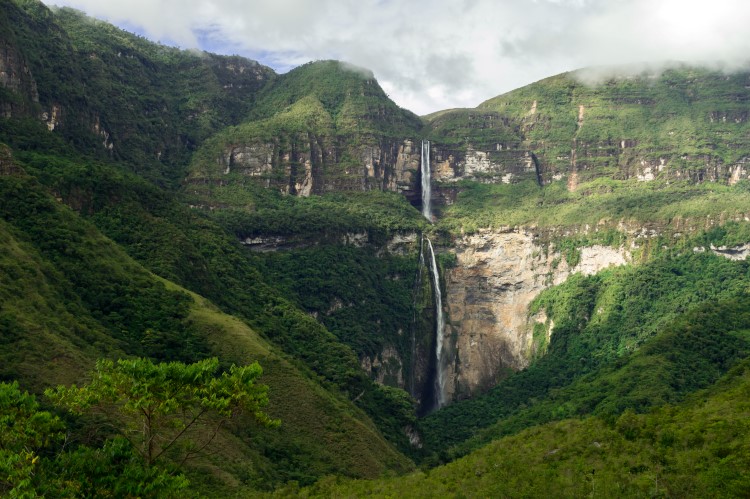
So, when Better Places Travel , a Dutch travel agency specialising in English-speaking, tailor-made tours that allow travellers to experience authentic, community-run tourism, got in contact, I knew that travelling with them on one of their northern Peru tours could only help me to see the country in a new light.
Unlike southern Peru and the cities of Cusco and Arequipa , the north feels genuinely undiscovered. Sure, there are parts that are starting to gain global recognition: the ancient stone ruins of the Kuélap fortress near Chachapoyas is an example of just one.
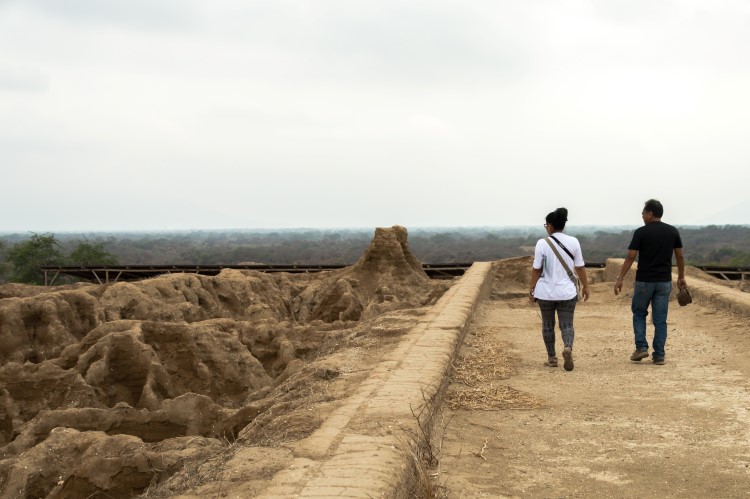
But outside these tiny pockets, there are many off-the-beaten-path destinations that promise an insight into a Peru that I’ve always felt has been hidden or completely transformed by the effects of tourism further south.
Planning Your Trip to Peru?
Save time, stress & money with a customized travel itinerary planned for you by a Peru expert
What previous clients have said:
Going to a new and exciting place is an adventure AND has its challenges. Being able to carve out an in-depth plan with someone that has been there and whom you can trust was extremely helpful. We felt comfortable embarking on a six-week backpacking trip with kids ages 8 and 11 with Steph on our team. Her expertise and ability to hear what we wanted gave us a great jumping point for planning. Her advice and wide array of options also allowed us to be flexible. It also gave us peace of mind knowing that we had someone we could call if our plans went awry. Every one of Steph’s recommendations panned out to be incredible pieces of our trips and we would highly recommend her!
Community-led tourism and ancient ruins in Northern Peru
On the northern Peru tours that I took with Better Places Travel, I encountered a wealth of local people engaged in truly fascinating and successful projects.
Many were focused on ecotourism and combining community development, environmental protection and tourism in an impressive show of what can be achieved through sensitive and responsible projects.
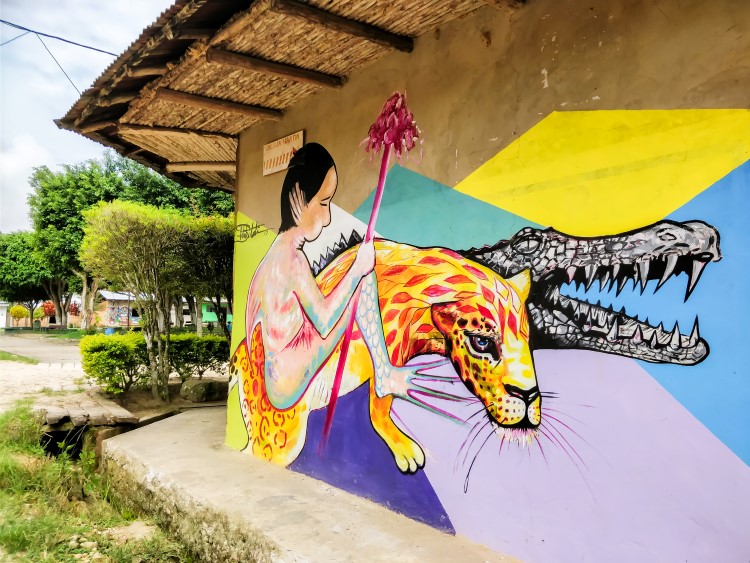
I also explored ruins of cultures that far pre-date the Inca and about whom most tourists know little. These included the mountain-top citadel of the “Cloud Warrior” people, aka the Chachapoyas and the striking ruins of the Sicán, whose huge adobe-brick pyramids are still being excavated by archaeologists today.
And then there was the beauty of landscapes practically untouched by civilizations; vast waterfalls that rank among the highest on the planet and where there’s no need to elbow other tourists out of your selfies. It was a rare treat to find myself blissfully alone.
Responsible Northern Peru tours not to miss
Thanks to Better Places Travel and my research for the 2018 Rough Guide to Peru and the Rough Guide to South America , I came away from Peru with a radically new perspective on a country that I had often dismissed as one of my least favourite places in South America .
Now, I’m on a mission to prove that there’s far more to Peru than just the Inca Trail and Machu Picchu and that travelling to northern Peru guarantees a world of incomparable treasures.
Taking my latest adventures, join me as I show you my five favourite northern Peru tours that shouldn’t be missed off your itinerary for Peru .
1. Exploring adobe brick pyramids in the Santuario Histórico Bosque de Pomac
Just one-hours’ drive from Chiclayo in the Ferreñafe province of Peru, the Santuario Histórico Bosque de Pómac was the site of my first northern Peru tour with Better Places Travel.
A protected area home to the country’s most important forest of the endangered algarrobo (white carob), it’s striking in its unconventional beauty.
We hiked through the forest along some of the trails, stopping as one of the park rangers a glimpse of one of the 70 different species of birds found in the park and a remarkable type of tree whose creeper-like vines cover the rest of the forest, turning its canopy a scorched brown in summer.
I was also delighted by the number of wild cherry tomatoes you can find in the forest; much smaller than those you find in the supermarket equally delicious and available to be plucked straight from the tree.
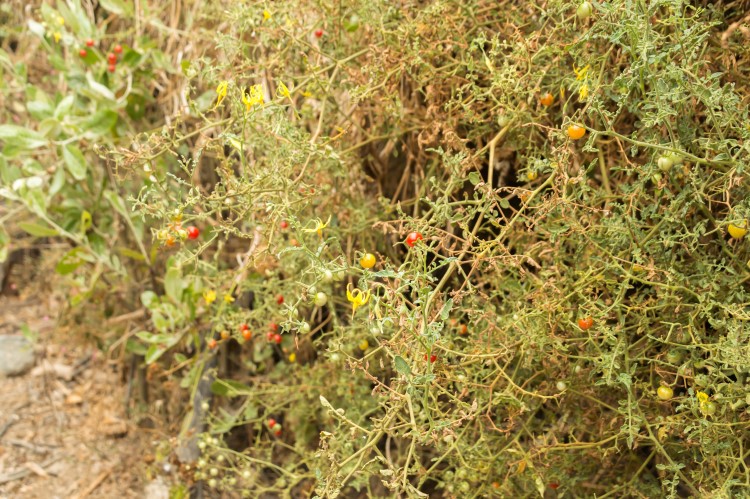
Deeper into the forest, we came to the edge of Batán Grande, the former capital of the Lambayeque or Sicán culture, who built this mammoth city of adobe mud pyramids sometime between the eight and twelfth centuries.
Unfortunately, these structures haven’t withstood the challenges of the ages very well; made from a mix of soil, straw and sometimes sand, the adobe bricks are susceptible to the weather and indeed many of the temples look more like lumps of melted chocolate ice cream than the grand structures that they must once have been.
2. Learning about the female ruler of Túcume and the Valle de los Pirámides
Just 14 kilometres from the Bosque de Pómac, the Valle de los Pirámides (Valley of the Pyramids) is a similarly impressive set of pre-Colombian ruins.
Excavation only started here as recently as 1992, but continues to this day, as the team of archeologists patiently work to uncover the secrets of the 26 pyramids located here.
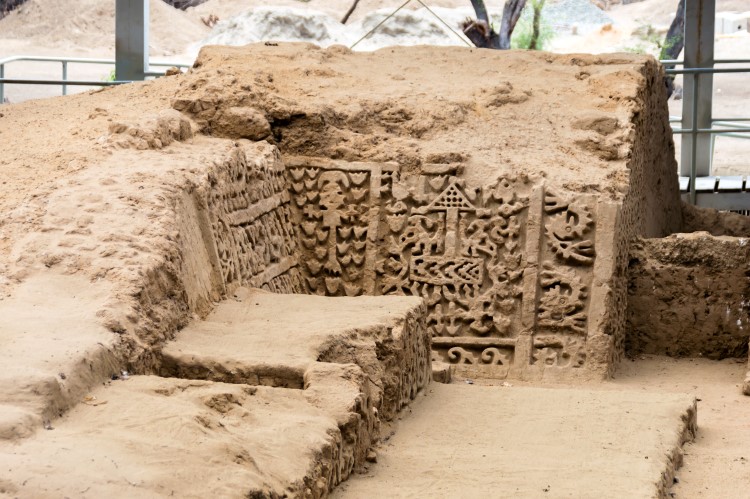
Although most visitors’ attention has been historically directed towards the vast Huaca Larga (the literally named Long Temple), the largest adobe structure in South America as it covers a space the size of seven football fields, it was interesting to learn about others within the complex.
Resident archaeologist Manuel showed me around the Huaca de las Balsas, where excavation work has unearthed a surprising finding.
In this pyramid, only female remains – except for the body of one decapitated male believed to have been a sacrifice – have been dug up, leading to the hypothesis that, unlike all the others here that have yet been excavated, this pyramid was led by a female ruler.
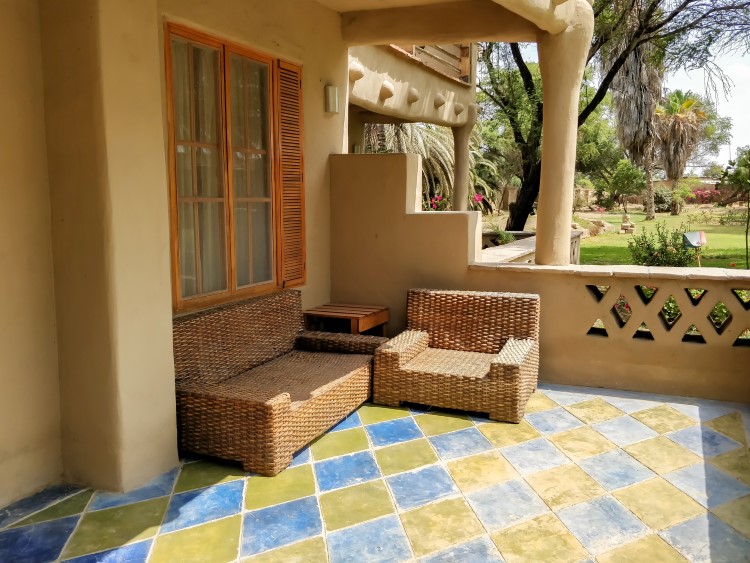
After a day of admiring ancient temples, I enjoyed spending the night in Los Horcones de Tucume , a nearby boutique hotel built entirely from adobe brick.
It was utterly magical in its combination of slick, modern design despite being built using the most traditional of all materials and echoing the grand but yet still humble structures of the nearby pyramids.
3. Exploring stone citadels and private conservation areas
Kuélap was the archeological complex I had most been looking forward to visiting during my travels in northern Peru.
Sat astride a mountain overlooking the Utcabamba Valley, Kuélap is a fortress built by the Chachapoyas (or, as they’re known in many articles published about them, the “Cloud Warriors”).
Until last year, you could only get there by a 90-minute nauseating bus journey from the bottom of the mountain or a gruelling four-hour hike.
Now, it’s a breezy 20-minute cable car journey up to the ticket office and then a ten-minute walk (or horse ride if you’re feeling lazy).
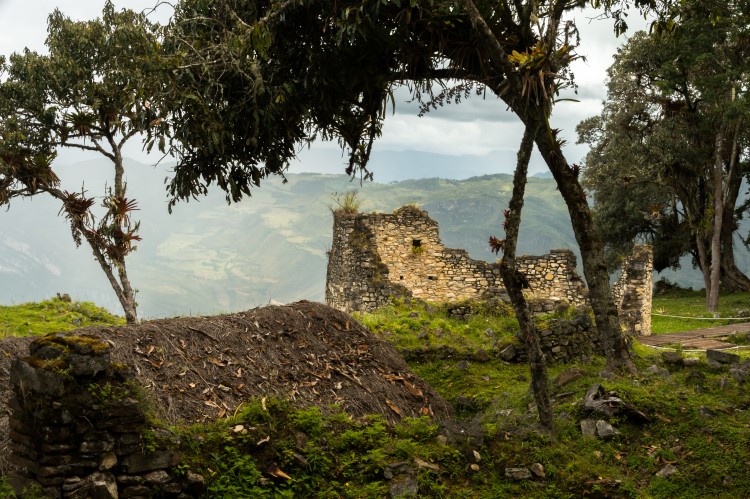
I’ll admit to having been slightly disappointed by the number of people who were wandering the ruins; at two hundred or so people, it was more than I’d anticipated. I was told that, in fact, this was nothing: in June and July, visitor numbers reach up to 1800 people.
But it’s still a truly magical place and while the ruins are being steadily restored (an unfortunate feature of Peruvian archeological protection that is very visible at Machu Picchu), it still feels very authentic and abandoned. I was also delighted to hear about the holes built beneath the floors of the circular stone dwellings where people stored the mummies of their ancestors!
After visiting these striking ruins, I spent a morning at Milpuj, a nearby private conservation area run by the energetic Lola and son Perico.
The perfect hosts, they showed me around their guest rooms and along the short series of trails that they’ve carved into the forest, and where it’s possible to see everything from the native species of cat, the colocolo , that was used in the iconography of the Chachapoyas, to bromeliads filled with previously undiscovered species of frogs.
4. Hiking without the crowds to Gocta and Yumbilla Falls
Like my experiences in the Bosque de Pomac, Yumbilla Falls, an hour’s drive from Chachapoyas to the trailhead and then an hour’s hike, was blissfully free of other tourists.
As I wandered the trail, accompanied by my guide from the local tourism association, we passed perhaps five other tourists and at the base of what is considered one of the highest falls in the world (although there’s admittedly much debate on this matter ), there was no one else.
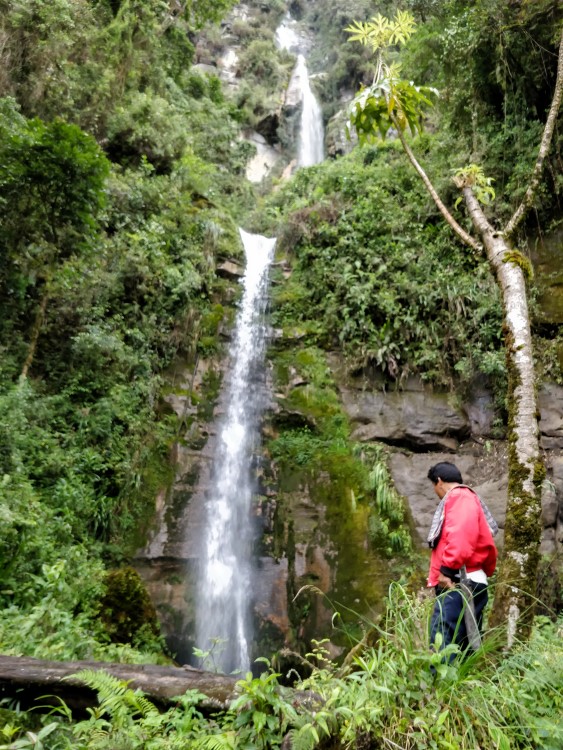
It’s a slightly different story in Cocachimba, the village closest to the base of Gocta Falls.
From the main road that cuts through the valley from Chachapoyas, you turn off up a steep gravel road that winds up, up and up, surrounded on all angles by cloud forest before suddenly you arrive at the village and you finally catch sight of Gocta: a jagged slice of water that has carved its way through the dense green of the trees before emerging in a swift gush.
I’ll admit I didn’t get a chance to hike to its base (a two-hour walk through the forest); instead, I visited Gocta Natura , a truly stunning boutique hotel with quite astounding views of the falls from the terraces of each cabin and the balcony of the main house.
All are tucked away into the forest that owners Rocio and Augusto have been replanting as part of their environmental work with the local community.
5. Making pottery in the jungle-fringe city of Tarapoto
The final of my northern Peru tours with Better Places Travel took me to Tarapoto, a city eight hours by bus east of Chachapoyas and clinging defiantly to the edges of the Amazon.
It felt very similar to the jungle towns I’d visited in Bolivia; motor taxis were practically the only traffic that squealed through the sticky streets and it was hard work walking during the day because of the fierce heat of the sun and the sweltering humidity.
I was picked up by a motor taxi and whisked thirty minutes away to Chirapa Manta, a cosy yoga lodge located on the outskirts of tiny San Roque de Cumbaza. At night, separated from the outside by an insect screen, I could hear the roar of the river close by and the chattering of the insects beyond.
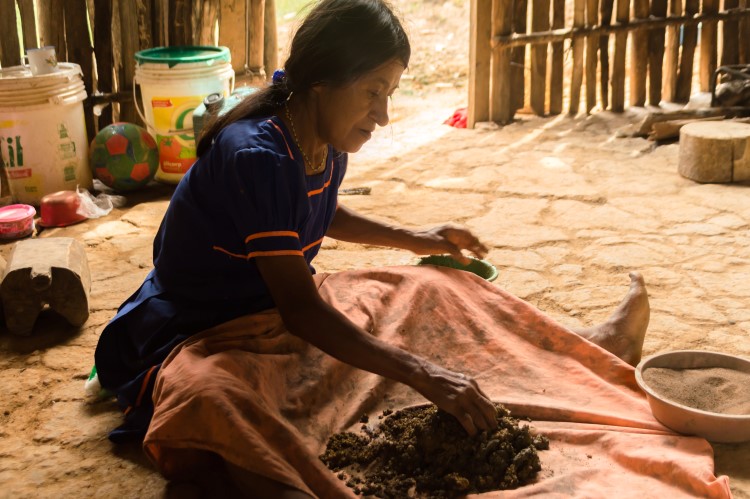
The next day, I visited the home of Doña Petrona. An indigenous woman and Quechua native speaker, she now opens up her home to visitors for pottery lessons.
My class involved learning about the type of clay you need to use (apparently there’s a particular spot close to the river where you find the best kind) and how it needs stamping thoroughly underfoot to combine the clay and the shaño (the gritty dust of old, ground pottery that helps give the clay extra strength).
As we worked, she talked about her life and how she’s the final woman in the village who knows how to make pottery using this traditional method; without tourists coming to visit, the art would most likely already have died.
I was a guest of Better Places Travel and – as ever – my opinions of the northern Peru tours that I took are my own.
Found this article about responsible northern Peru tours useful? Pin it to share it with other responsible travellers!
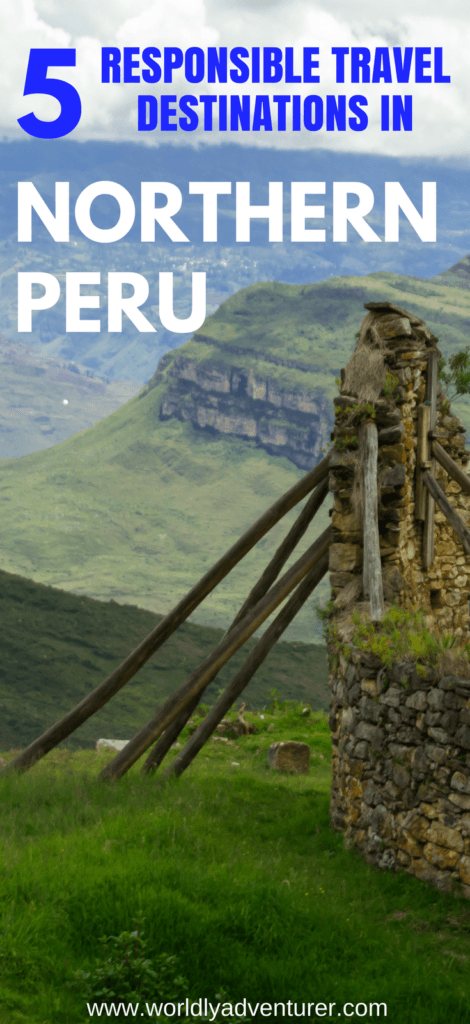

5 Wonderful Things to Do and See in Northern Peru
An article about the Best Things to Do and See in Northern Peru including the best archeological sites and mountains of Trujillo.
Tired of visiting the super visited and cliched touristy spots in Peru? If off the beaten adventure is what you seek, look no further than Northern Peru my wonder friends.
Archeological ruins in a desert setting, new cultures, beaches, mountains, glacier lakes and more await you here.
Are you ready to read about the best things to do and see in Northern Peru my friends?
5 Wonderful Things to Do and See in Northern Peru #01: Peruvian Archeology at Trujillo
Trujillo is the most important city of Northern Peru and from there, you can easily access the many archeological zones, museums, beaches, and horse ranches of Northern Peru, making it the ideal base of operations for exploring the area.
It is located some eight hours north of Lima so it’s perfect for an overnight journey. In my opinion, a visit to Northern Peru is definitely recommended if you have the extra time after exploring the rest of the regions of this wonderful country.
The historical center of Trujillo is very pretty by day and even more pretty by night, although most people will find it quite dull and boring after a while.
Public transportation to the archeological areas is not that good so I ended up taking a cheap 10 USD one-day tour to visit some of the most important ones of the Moche culture of Northern Peru: Huaca (a word meaning sacred site) of the Moon, Chan-Chan Archeological Site and the Tomb of the Lady of Cao.

5 Wonderful Things to Do and See in Northern Peru #02: Huaca of the Moon and the Monsters
The Moche Culture of Northern Peru was not that different from the Incas that inhabit the Eastern region of the country (check out how to get from Lima to Cuzco here ), the main difference was that the Moches lived in arid zones and were based very close to the ocean. Local legend has it that one of the first God-Kings of their culture came by boat from far-away lands.
Of course, this probably means that the first rulers of Northern Peru came from one of the Polynesian Islands but it could also mean that they came from Mexico, thus, fortifying my royal claims to the iron stone throne.
Unlike the Incas, the Moches built their temples and palaces using adobe and were big fans of colorful drawings, in fact, the main attractions that you will find in Northern Peru are the intricate and detailed carvings that they did as well as the metallic decorations of their rulers.
The most emblematic mural of the Moche culture of Northern Peru is located in the Huaca of the Moon and symbolizes a red monster that was feared as a God according to their local traditions. His name? Ai Apaec the beheader. No wonder they were scared of him!

5 Wonderful Things to Do and See in Northern Peru #03: Museums and the Tomb of the Lady of Cao
A few km away from Trujillo itself, you will find the ongoing (at the time) excavation of the Tomb of the Lady of Cao, the Tattooed Sorcerer Queen of the Moches as well as some very interesting museums depicting the way the ancient rulers of Northern Peru were buried and the strange positions they adopted.
I would definitely suggest you visit The Tomb of the Lady of Cao today since I’m sure it has dramatically changed ever since I visited Northern Peru last year.
One of the best things to do and see in Northern Peru for sure!

5 Wonderful Things to Do and See in Northern Peru #04: Chan-Chan Palace, one of The Best Things to Do and See in Northern Peru
Last but certainly not least, I visited the immense palace of Chan-Chan, center of the Moche culture. In this place, there were once highly detailed statues of guardians, of which only fragments of the original remain, in their place you can see some interesting full-scale replicas of them.
It is quite shocking that the media focuses a lot on the archeology of the Inca culture while completely ignoring the general awesomeness of the cultures of Northern Peru such as the Moche one.

As soon as I arrived to the Chan-Chan Palace, I sensed that something strange was going on as our guide disappeared and in his place, an ancient Moche warrior of Northern Peru appeared to guide us through his palace.
Suddenly, the Moche warrior placed his eyes on me, the only non-Peruvian in the group. As we both exchanged glances, he knew I was there for a reason so he bent his knee and asked me: “Would you take the throne, my lord?”.
Of course, later that day I learned that he was actually an actor and that this coronation wasn’t official at all but hey, who cares? I got an awesome picture and the privilege of being an Emperor for a day!

5 Wonderful Things to Do and See in Northern Peru #05: Take a Detour into the Huaraz Mountains
While still considered as part of Northern Peru, Huaraz is located actually South-East of Trujillo but still North of Lima. Here you will find the Cordillera Blanca (White Range), an extension of the Andes Mountain range where you can embark on many epic hikes of wonders.
Glaciers, snow and llamas all await you in Huaraz and the surrounding areas. Stay tuned for a future article on Journey Wonders in which I’ll show you the many day trip and day hikes you can take from Huaraz.
They are truly out of this world!

I hope you have enjoyed this article about the best things to do and see in Northern Peru. Don’t forget to subscribe in order to get more awesome updates and tips straight to your e-mail.
Have you ever been to Northern Peru? Would you like to? What were some of your favorite things to do and see in Northern Peru? Share your thoughts and let me know what you think.
Until next time!

Dos Manos Peru Travel
Dos Manos Peru Travel Blog
Exploring peru, plan a trip to northern peru.

While most travelers head straight for Cusco, Arequipa, Lake Titicaca, and Machu Picchu in southern Peru, northern Peru is still a hidden gem for travelers to venture off the beaten path . In Northern Peru, you will find amazing ruins with hardly any other people around, discover unique landscapes, and learn about ancient pre-Inca cultures in Peru. “El norte” is a multicultural and colorful destination full of contrasts with a fascinating, diverse culture, history, geography, biodiversity, and gastronomy, from the coastal lands of the capital city to Lima up to Trujillo, crossing the Andes Mountain Range by Cajamarca up to the Peruvian Amazon. Northern Peru offers a wide range of things to do and see . Let’s plan a trip to Northern Peru!

Most likely, you will arrive in the capital city of Lima y plane (or cross the borders when traveling overland to Peru from Ecuador. From Lima, you can take a flight to Trujillo or Cajamarca (a flight of approximately one hour and a half) and start your trip in Northern Peru!
Here is a brief overview of some of the top things to see and do in this beautiful area to Plan a trip to Northern Peru:
What to do in Northern Peru
- Visit the ruins of Chavín de Huantar , an ancient ceremonial center and UNESCO World Heritage site that dates back to 900 BC.
- Take a tour of the Tucume Pyramids , a group of 26 adobe pyramids built by the Lambayeque culture.
- Explore the beautiful coastal city of Trujillo , known for its colonial architecture and beaches. Some of the top sights to see here include the Plaza de Armas, the Cathedral of Trujillo, and the Chan Chan Archaeological Zone , another UNESCO World Heritage site. Read more below.
- Head to the city of Cajamarca in the Andes mountains, the place of the Inca emperor Atahualpa’s capture by the Spanish conquistadors in the 16th century. Cajamarca is also home to several colonial-era buildings and hot springs. Read more below.
- Take a day trip to the Kuelap ruins , a pre-Inca fortress in the Chachapoyas region . The fort is known for its circular stone walls and many underground tombs. Read more below.

- Visit the Gocta Waterfall , the third-highest waterfall in the world, located in the Amazon rainforest near the town of Chachapoyas .
- Take a boat trip on the Maranon river , which is one of the main tributaries of the Amazon, to see the diverse range of wildlife in the area.
When planning your trip to Northern Peru , remember that northern Peru can be pretty hot during the day, especially in the coastal regions, so it’s best to plan your activities for the early morning or late afternoon.
Additionally, some sites and activities, such as the Kuelap and Gocta Waterfall , are located in remote and mountainous areas, so be prepared for rugged terrain and possible altitude sickness or soroche . If you have been to cities like Cusco , Arequipa, or Machu Picchu before traveling to the north, you should still be acclimatized.

How to visit Kuélap in Peru
Kuélap is a pre-Inca fortress located in the Chachapoyas region of northern Peru. The fort is known for its circular stone walls and many underground tombs. To visit Kuélap, here are some tips:
- Getting there : To reach Kuélap, you’ll first need to fly to the city of Chiclayo , Cajamarca, or Tarapoto, all of which have airports that receive flights from Lima. From there, you can take a bus or private car to the town of Chachapoyas, the closest city to Kuélap. Finally, you can take a bus or taxi from Chachapoyas to the village of Tingo, where the fortress is located.
- Best time to visit : The best time to visit Kuélap is during the dry season, which runs from April to November. During the rainy season, which runs from November to April, the road to the fortress can be more challenging to navigate, and the fort may be closed.
- Entrance fee : Entrance fee for Kuélap is US$12 for foreign adults and US$6 for students
- Guided tours : It is recommended to take a guided tour of Kuélap as the guide will provide you with information about the site’s history and architecture and take you to the most exciting parts of the fortress not allowed to access without a guide. You can arrange the tour in Chachapoyas or book a Kuélap Tour with a tour agency or travel agent in advance
- Altitude and Physical condition : Keep in mind that Kuélap is located at an altitude of about 3,000 meters (9,800 feet) above sea level, so you may experience some symptoms of altitude sickness such as headache, shortness of breath, and fatigue. Make sure to take it easy, rest often, and drink plenty of water to stay hydrated. And also, keep in mind that Kuélap is an ancient site built on the mountain; it may need some physical effort to climb and visit the site.
- Safety : As Kuélap is located in a remote area, take the necessary precautions to ensure your safety. Let someone know your itinerary, and bring a fully charged cell phone and emergency contact information. It’s also a good idea to wear comfortable shoes and appropriate clothing for the weather.
Visiting Kuélap is a unique and worthwhile experience of your trip to Peru you will enjoy a lot.

What to see in Cajamarca
Cajamarca is a charming city located in the Andes mountains of northern Peru. It is known for its rich history and beautiful colonial architecture.
Here are some of the top sights to see while visiting Cajamarca:
- Plaza de Armas: This is the main square in the city and a great place to start your visit. The square is surrounded by beautiful colonial-era buildings, including the Cathedral of Cajamarca and the Palacio de la Real Audiencia.
- Ransom Room (Cuarto del Rescate): This is where the Inca emperor Atahualpa was held captive by the Spanish conquistadors in the 16th century. Inside the room, you can see the famous “Ransom Room,” where the legendary Inca gold and silver were kept to get the Atahualpa release.
- Baños del Inca: This ancient Inca bath complex is still in use today. The hot springs here are believed to have healing properties, and you can take a dip in the pools while enjoying the beautiful surroundings.
- Cajamarca’s archaeological sites: There are a few Inca and pre-Inca ruins around the city, like the Ventanillas de Otuzco and the Cerro Santa Apolonia.
- Belen Church: This beautiful church is located in the city’s heart and is a great place to see some of Cajamarca’s colonial architecture. The church is also known for its intricate wood carvings.
- The handicrafts market: Cajamarca is known for its traditional textiles, ceramics, and handicrafts; you can find some of the best examples of these at the local markets, like the famous handicraft market on Calle Real.
- Surrounding area: The city of Cajamarca is surrounded by beautiful Andean landscapes, and there are many opportunities to explore the area with one-day excursions, visiting the Porcon Lake, hot springs, and many more.
Cajamarca is a great place to visit and offers a variety of cultural and historical experiences. It is known for its charming colonial architecture, rich history, and beautiful scenery. There are also many great restaurants and cafes in the city where you can try some of the local cuisine.
What to do in Trujillo and surroundings
Trujillo is a beautiful coastal city in northern Peru with a rich history and culture. Plan a trip to Northern Peru and check out some of the top things to see and do in Trujillo and its surroundings:
- Plaza de Armas: This is the main square in Trujillo and a great place to start your visit. The square is surrounded by beautiful colonial-era buildings, including the Cathedral of Trujillo and the Palacio de la Merced.
- Chan Chan Archaeological Zone : This is the largest pre-Columbian city in South America and a UNESCO World Heritage site located about 20 kilometers west of Trujillo. The town was built by the Chimu culture and is known for its intricate adobe structures and carvings.
- Huaca del Sol y la Luna: These are two ancient Moche pyramids outside Trujillo. The Huaca del Sol is the most extensive adobe construction in the Americas. The Huaca de la Luna is known for its intricate murals.
- The Royal Tombs of Sipan: This is an archaeological site located about 60 kilometers northwest of Trujillo, where the tombs of the Moche elite have been uncovered, it is considered one of the most important archaeological discoveries of South America, and it is a must-see for history and archaeology enthusiasts.
- El Brujo Archaeological Complex: This site is located about 70 kilometers northwest of Trujillo and was built by the Moche culture. It contains several pyramids, plazas, and murals. It is also famous for its Lady of Cao, a Moche mummy found here, which is now part of the National Museum of Anthropology collection in Lima.
- Peruvian Beaches : Trujillo is known for its beautiful beaches, like Huanchaco , the famous surfing spot, and the nearby beaches like El Estero, where you can go for a relaxing day in the sun.

- The Historical Centre of Trujillo: Declared a World Heritage Site by UNESCO, is a rich and beautiful place where you can see a lot of colonial architecture and take a walk around, visiting the traditional houses and churches of the city.
- Local Peruvian Food: Trujillo is known for its seafood and ceviche, especially the famous “ceviche de conchas negras” (black shells ceviche) and other traditional dishes like “arroz con pato” (rice with duck) and “chanchito al horno” (oven-roasted pork).
Trujillo offers a great variety of things to do and see, from ancient ruins and colonial-era architecture to beautiful beaches and delicious local cuisine. The city and its surroundings are rich in history and culture, and there’s plenty to explore for history, archaeology, and culture enthusiasts.
Overall, northern Peru offers a wide variety of cultural and natural experiences, from ancient ruins and colonial-era architecture to beautiful beaches, hot springs, and waterfalls.
Do you need help planning your trip to Northern Peru? We’d love to help you Plan a trip to Northern Peru!
Feel free to contact Dos Manos Peru Travel .
Wil je dit artikel ook in het Nederlands lezen? Plan een reis naar Noord-Peru
Leave a Comment Cancel Reply
Your email address will not be published. Required fields are marked *
Save my name, email, and website in this browser for the next time I comment.

- Adventures in Peru
10 Highlights Of Northern Peru
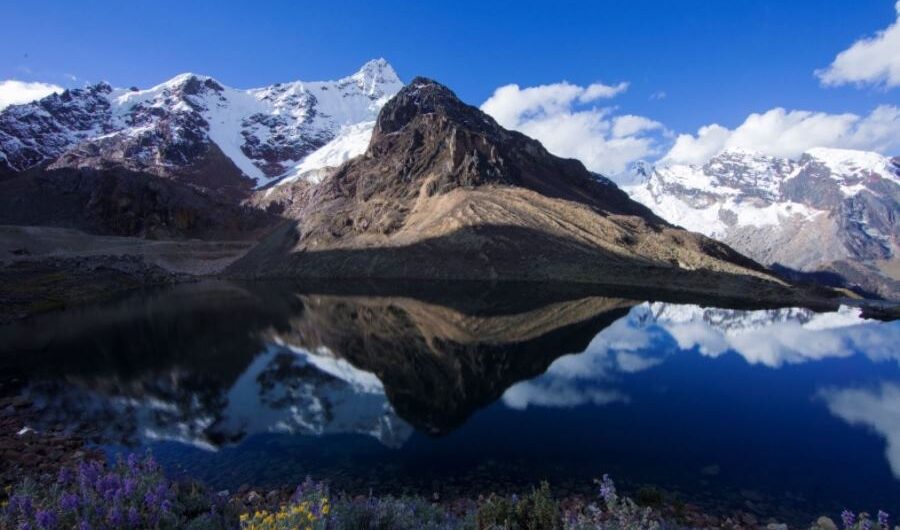
Discover Northern Peru
Northern Peru has much to discover, and all kinds of untapped treasures right at your fingertips. It has so much to offer but is relatively unknown and untouched. Northern Peru’s natural wonders an untold story of South American history is well worth exploring. Here are some of the top highlights.
Caral is a breathtaking archaeological site that was built between 3000 BC and 2100 BC, around the same time as the pyramids of Egypt . And yet, Caral is significantly less crowded than the pyramids and is still somewhat unexplored by most travelers. This pre-Inca UNESCO World Heritage Site was home to the oldest civilization in the Southern Hemisphere. It’s also wildly complex: research has found that the buildings in Caral were built with careful knowledge of astronomy, music, and natural surroundings.
Another fantastic UNESCO World Heritage site , Chavin de Huantar is a fascinating pre-Columbian pilgrimage destination you won’t want to miss. This ancient space was home to the first Pan-Andean religion. The extinct Chavin society once lived in the Andean highlands, and traces of the Chavin influence can still be found along the coast.
The Chavin were one of the first Andean cultures to leave behind records in the forms of carvings, buildings, ceramics, and textiles . At the site, you’ll find round, sunken courtyards and intricate walkways beneath the structures. You’ll also note an intricate drainage system that nods to the Chavins’ engineering skills, as well stunning artistry on the ruins.
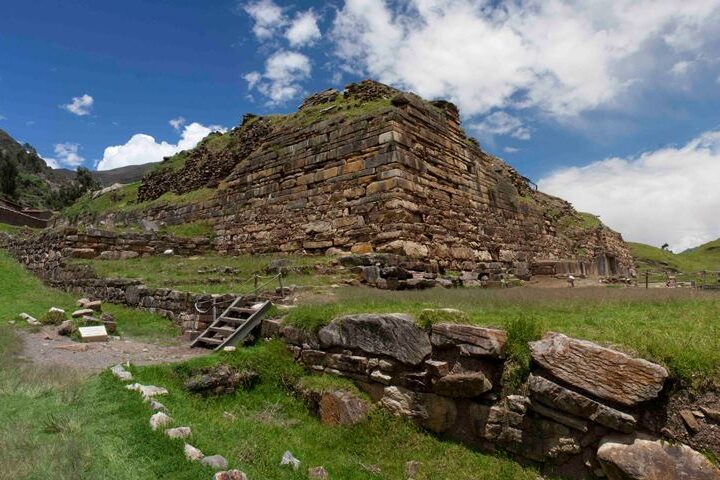
3. Huascarán National Park
Huascarán is home to the world’s highest tropical mountain range, the Cordillera Blanca . The park is also the site of Huascarán mountain, the highest mountain in Peru at 6768 m (22,204 ft.) This UNESCO biosphere reserve is unlike any other place on the planet. Huascarán is a fantastic area to hike or simply take in the natural beauty. Since Huascarán’s climbing season extends beyond that of the Himalayas but equally breathtaking views, you’ll have a larger window to fit in a bucket list climbing experience . As you journey through the mountain range, you’ll spot stunning glacial lagoons and snow-covered mountain peaks as far as the eye can see.
4. Cañon del Pato
This unpaved route is carved directly into the mountains on the Rio Santa River at the north end of the Callejón de Huaylas. Its steep canyon walls aren’t flat enough for much to grow, so you’ll see a fascinating juxtaposition as you make your away along its jagged surface. Along the way, you’ll journey through 35 one-way tunnels and be rewarded with mountain scenery unlike anything else.
5. The Moche Route
The Moche Route is one of the most underrated gems of Peru – and of South America in general. Along the Moche Route, you’ll find fascinating archaeological sites created by the Moche people, who were brilliant experts in metalwork as well as excellent irrigation . You’ll explore slices of history that existed long before the Inca came along. The metals and pottery the Moche left behind tell a story of a fascinating culture. The Moche had an efficient and widespread community structure in place, which enabled its people to expand across wide swaths of land.
The Moche Route includes the cities of Trujillo and Chiclayo, as well as many lauded archaeological treasures and fascinating museums along the way. You’ll especially want to see the pyramids of Tucume, and Huaca de la Luna, a 1000-year-old Moche Temple.
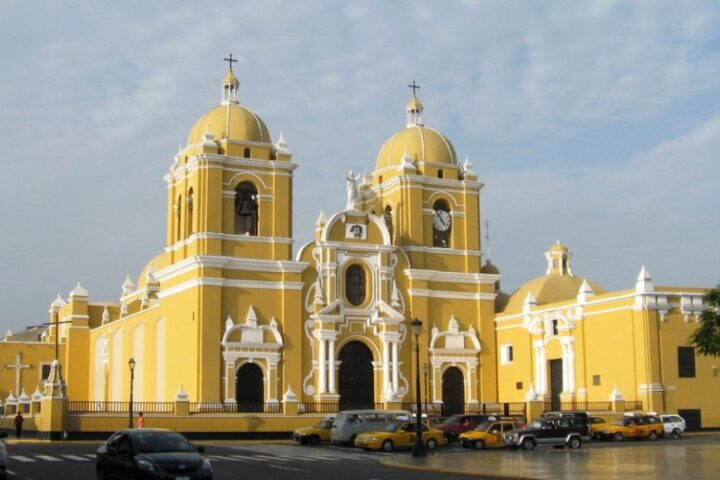
6. Chan Chan
This massive ancient city, near the modern-day city of Trujillo, is another UNESCO World Heritage Site . From around 900 AD to 1400 AD, Chan Chan served as the center of one of the largest societies captured by the Inca: the Chimú. The Chimú thrived in Northern Peru, and Chan Chan is their crown jewel. It consists of ten citadels where people once lived, worked, and worshipped. You’ll discover beautiful Chimú pottery, intricate city systems, and fantastic metalwork. The city’s architectural features will take your breath away, and the stunning works carved into
the city’s adobe structures make for excellent photo opps.
This ancient city was once home to the Chachapoyas (known as the cloud people), a pre-Inca culture that built their masterpiece atop a mountain. Known as the Machu Picchu of the north, Kuelap is the biggest ancient stone archaeological site on the continent and is known as one of the most impressive ruin sites in the nation.
Kuelap was built long before Machu Picchu, and the fortified city stands tall at 3,200m (10,500 ft) into the air, surrounded by cloud forest. Kuelap’s intricacy is a testament to Chachapoyan ingenuity and talent. The city’s 40 million cubic feet of stone was somehow cut, rounded, and moved. That’s no small feat, even today. When you arrive, you’ll want to be sure to check out El Tintero, which is thought to have been a solar observatory.
Also be sure to take in the city’s massive granite wa
lls, stunning ceremonial spaces, striking pottery, and geometric art.
If you love the outdoors, you’ll adore Gocta , one of the tallest waterfalls in the world . Hidden in the Chachapoyas cloud forest, this lesser-known waterfall is a world-class experience. You can enjoy a light hike through the cloud forest to reach Gocta, and pause to feel the waterfall’s mist on your face. If you find yourself feeling tired at the end of the hike, you can even hire a horse to take you back home.
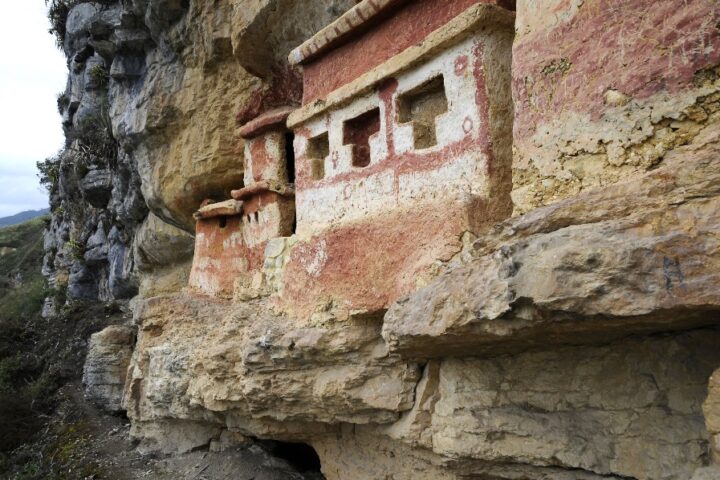
9. Leymebamba
The town of Leymebamba is a treasure trove of historic sites and natural beauty. Its major highlight is the world-class Leymebamba Museum , which is home to a renowned collection of more than 200 mummies and gorgeous surrounding gardens . Here, you will be able to get close up views of the endemic Marvelous Spatueletail Hummingbird, a magnificent sight!
10. Amazon River
The illustrious Amazon Rive r is a once-in-a-lifetime experience, but not everyone realizes it can be experienced in Peru. People don’t always know that Peru’s diverse ecosystems include much more than the Andes. In Peru, you’ll find deserts, highlands, flatlands – and the Amazon Basin. Northern Peru is home to one of the most lovely stretches of the Amazon River. Here, the river passes through Pacaya Samiria National Reserve, a home to a whole host of biodiverse species. Peru’s Amazon basin is one of the country’s final frontiers, and it’s just begging to be explored.
Contact us today to join Aracari’s upcoming Founder’s Trip to Northern Peru ! Or Explore our many itineraries that cover Northern Peru.
Related Post
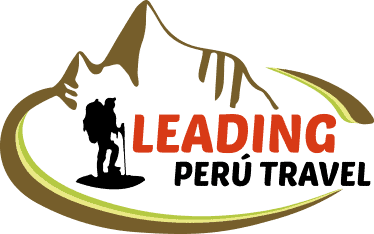
Tripadvisor
+51 984509207
16 January, 2024
Discover the Best Tourist Circuits of Northern Peru
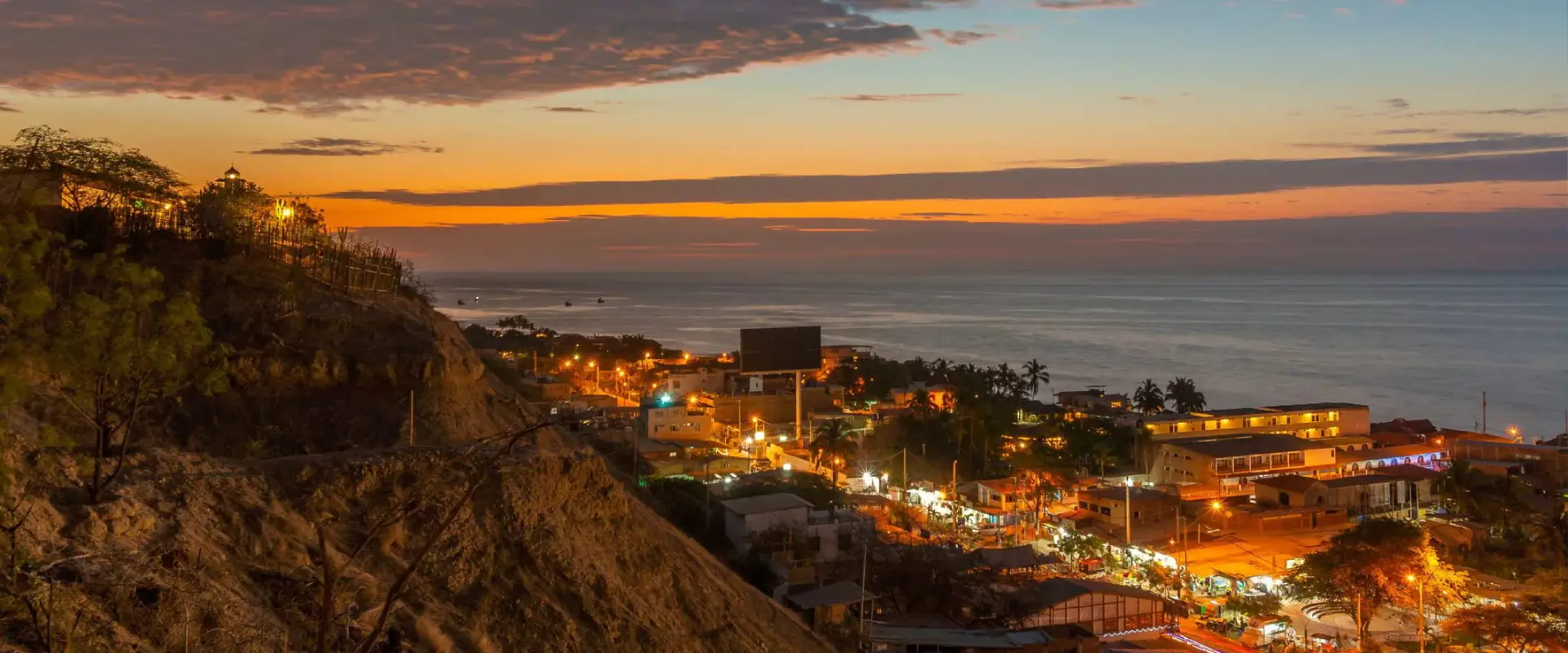
Are you ready for an unforgettable adventure? The tourist circuits of Northern Peru await you with breathtaking landscapes and fascinating cultures. From ancient ruins to dazzling beaches, every step on this journey will be a revelation. Get ready to uncover hidden treasures and live unique experiences with Peru travel !
INDICE DEL ARTICULO

The Best Tourist Circuits in Northern Peru
Exploring the tourist circuits of Northern Peru is embarking on a journey full of discoveries and adventures. From majestic ruins to dreamy beaches, here we present the best circuits that you cannot miss exploring.
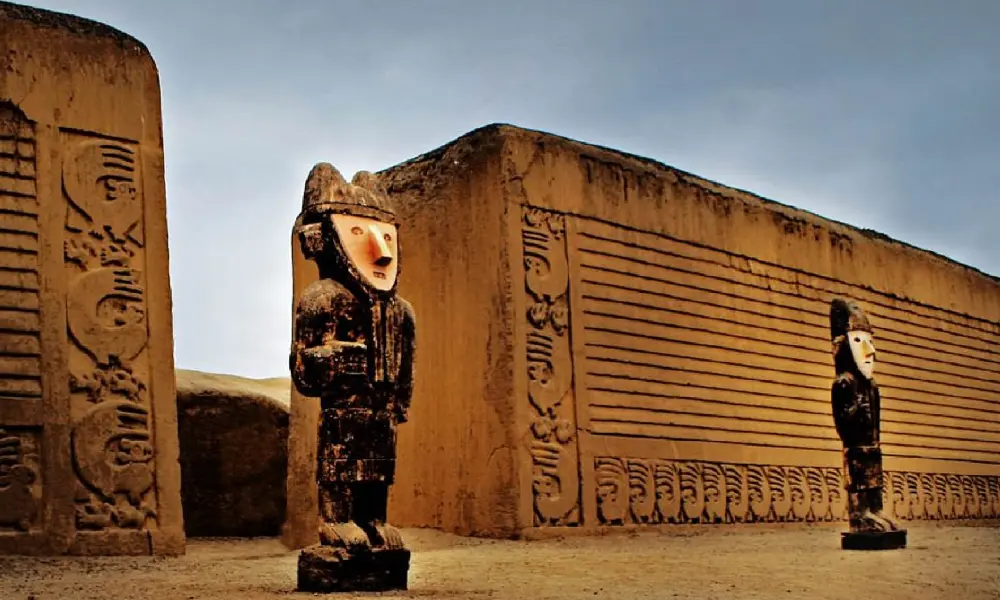
The Moche Route: A Journey to the Pre-Columbian Past
This circuit is a deep immersion into ancient history. After visiting the Huacas del Sol and de la Luna, and the fortress of Chan Chan, you can explore the Royal Tombs of Sipán Museum, with its jewels and artifacts. At Huaca Rajada, the site of the Lord of Sipán, you will learn more about Moche ceremonies and rituals. Don’t miss the museum in Lambayeque, which houses an impressive collection of Moche and Chimú artifacts.
Máncora Beaches: Sun and Sea in its Purest State
Máncora is a paradise for surfers and beach lovers. Besides its vibrant nightlife and exquisite marine cuisine, you can enjoy activities such as kitesurfing, horseback riding, and whale watching between July and October. The surroundings offer peaceful beaches like Punta Sal and Vichayito, ideal for a day of relaxation.
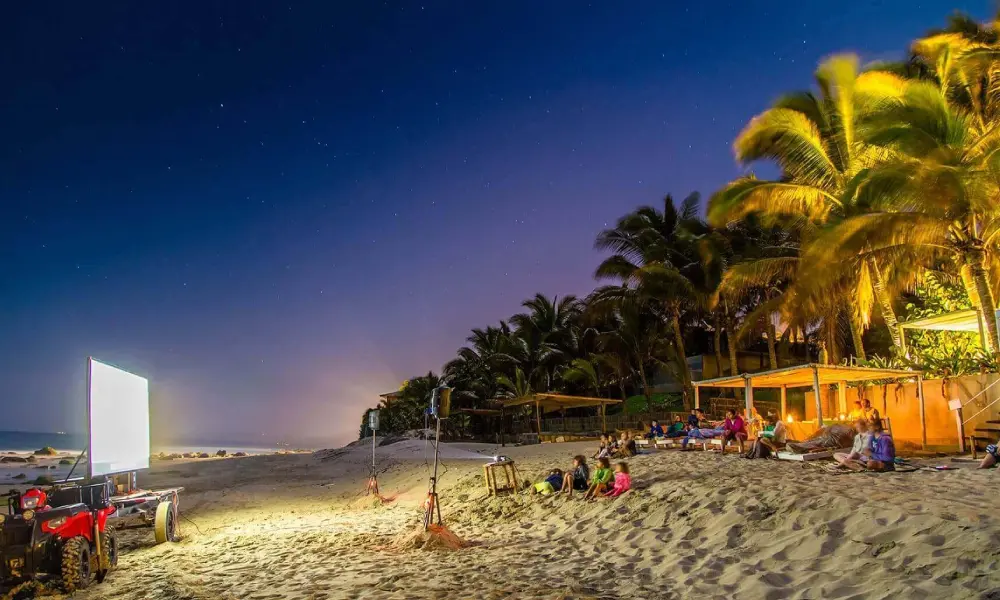
Paracas National Reserve and the Ballestas Islands: Diversity and Wildlife
Paracas National Reserve is a place of stunning natural beauty, where the desert meets the sea. Here, you can explore secret beaches and rock formations like the Cathedral. On the Ballestas Islands, enjoy a boat ride to get up close to its diverse fauna. Also, don’t forget to explore the mysterious geoglyph El Candelabro.
Trujillo and the Chimú Culture: History on Every Corner
Trujillo, with its charming colonial architecture and vibrant culture, is a significant historical center. Visit the Dragon’s Huaca, colorful and well-preserved, and the Archaeology Museum for a complete view of pre-Columbian cultures. The city is also known for its traditional marinera dance, which you can witness in local shows.
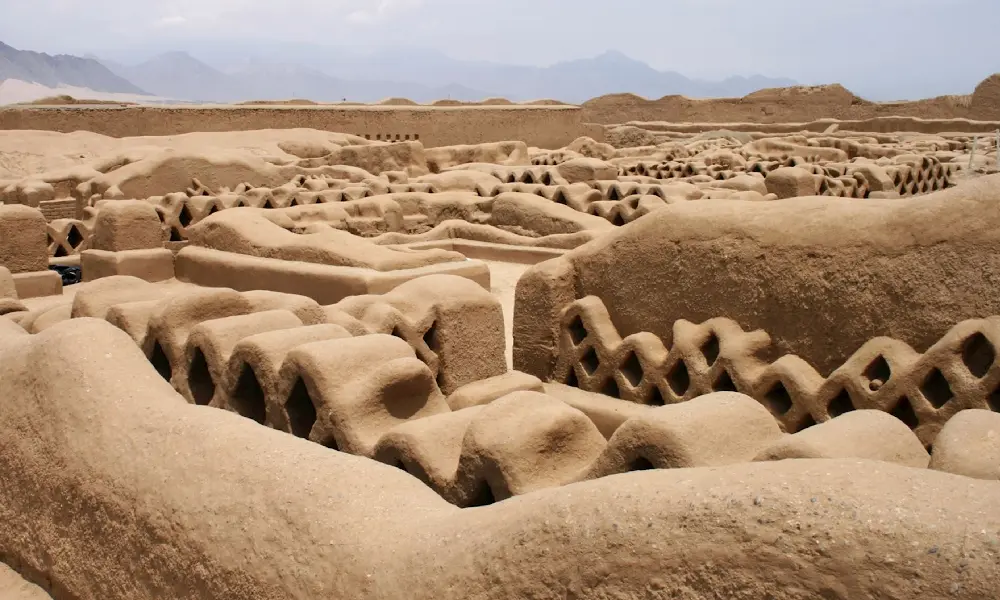
Chachapoyas and the Kuélap Fortress: Adventure at Heights
Kuélap, known as the “Machu Picchu of the North,” is a pre-Inca fortress located in the Andes heights. The cable car to Kuélap offers stunning panoramic views. Additionally, the Chachapoyas region is home to the Gocta Waterfalls and the fascinating Leymebamba museum, showcasing Chachapoyas mummies and artifacts recovered from the Laguna de los Cóndores.
Tips for Choosing the Ideal Time for Tourist Circuits in Northern Peru
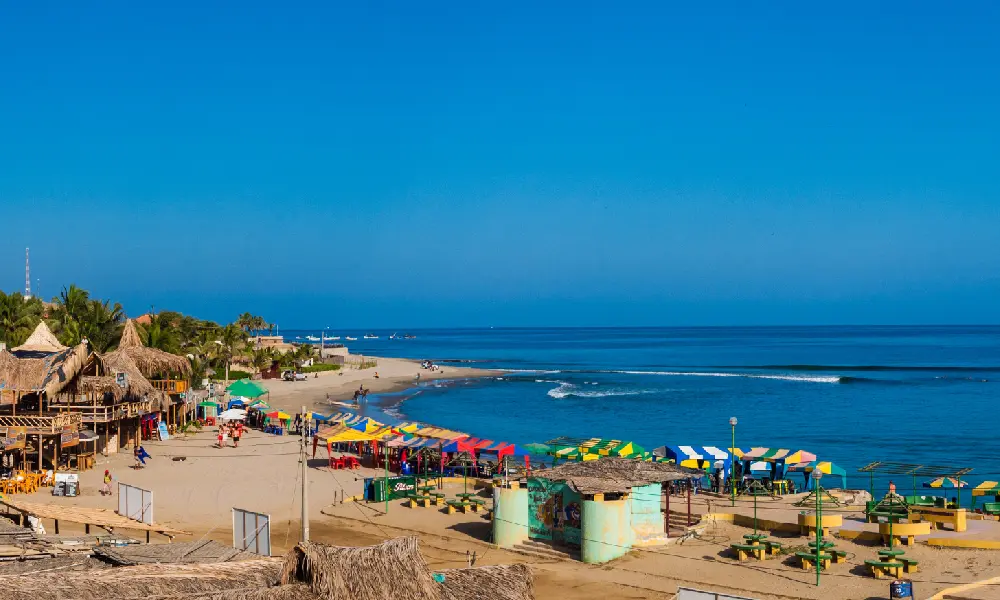
Choosing the right time to enjoy the tourist circuits of Northern Peru is key to an unforgettable experience.
Consider the Climate
Northern Peru has a varied climate. To visit the coast, such as Máncora beaches, the best months are from December to March when the weather is warm and sunny. However, for exploring archaeological sites like the Moche Route, the dry months from May to September are ideal, allowing you to enjoy the sites without worrying about rains.
Local Festivities
The tourist circuits of Northern Peru are enriched with local festivities. For example, if you visit in February, you can experience Carnival, full of music, dances, and colorful parades. These celebrations are a unique opportunity to immerse yourself in the local culture.
Avoid Crowds
If you prefer to explore more tranquilly, avoid the months of July and August, which are usually the busiest in the tourist circuits of Northern Peru, especially in popular places like Trujillo and Chachapoyas. Visiting during transition months like April, May, September, or October can offer a more personal and less hectic experience.
Budget and Travel Costs
Consider your budget when planning your trip to the tourist circuits of Northern Peru. The high season, from June to August, coincides with higher rates in flights, hotels, and tourist services due to demand. On the other hand, during the low season, from November to March, you may find deals and more affordable prices.
The Best Months to Explore Tourist Circuits in Northern Peru
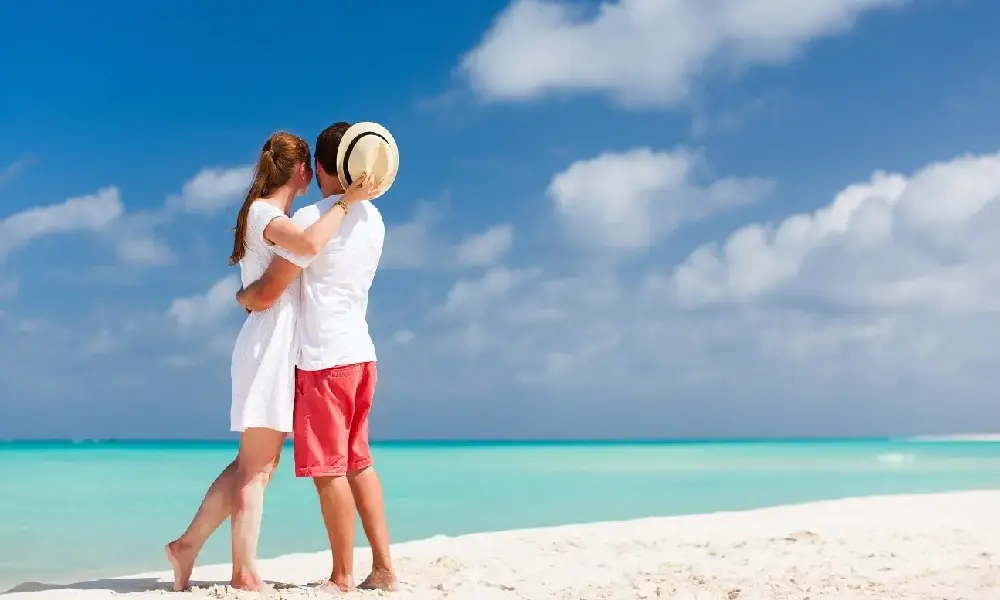
Wondering about the optimal time to immerse yourself in the tourist circuits of Northern Peru? Choosing the right month is crucial to fully enjoy this unique experience.
May to September: Ideal Weather
During these months, the climate in northern Peru is simply perfect. With clear skies and pleasant temperatures, it’s the ideal time to explore the tourist circuits of Northern Peru. From the beaches of Máncora to the ruins of Chan Chan, you’ll enjoy optimal conditions for every adventure during your tour 15 day .
October and November: Fewer Tourists, More Charm
If you prefer to avoid crowds, these months are ideal. Although there’s a higher chance of rain, the tourist circuits of Northern Peru offer a quieter and more personal experience. It’s an excellent time to visit the Paracas National Reserve or the city of Trujillo, savoring their beauty at a more leisurely pace.
December to April: Festivals and Local Life
Despite being the rainy season, these months are full of life and color, thanks to numerous local festivals. It’s a unique opportunity to see Northern Peru in its full cultural expression.
Tourism Seasons in Northern Peru: When to Go?
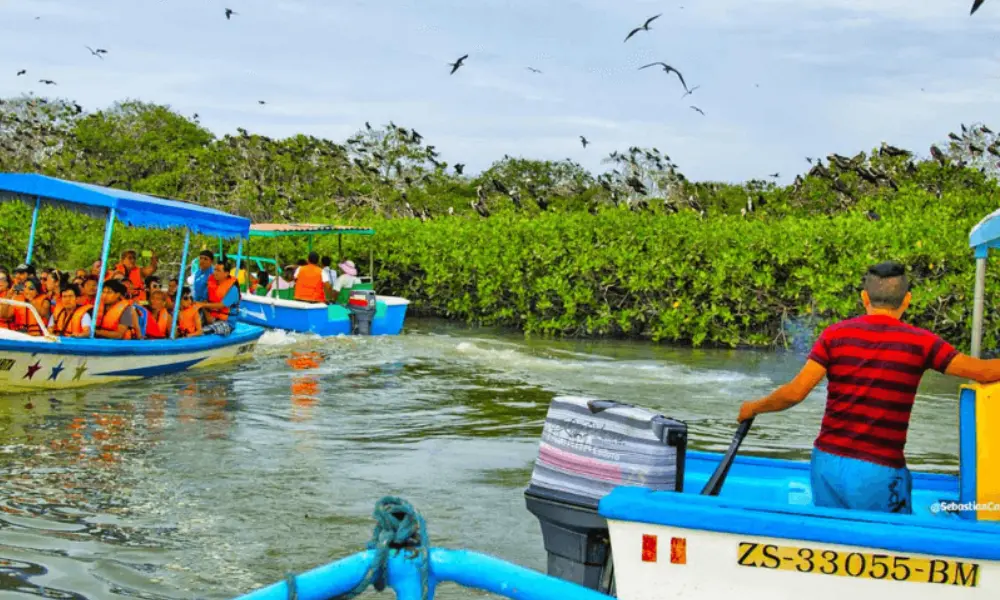
Planning your trip to explore the tourist circuits of Northern Peru involves understanding the different tourism seasons and what each offers. Here, we guide you to choose the perfect time for your adventure.
High Season: June to August
This is the most popular time to visit the tourist circuits of Northern Peru. The weather is dry and sunny, ideal for exploring the beaches of Máncora or the ancient ruins of Sipán. However, be prepared for more tourists and higher prices in accommodation and services.
Mid-Season: April to May and September to October
If you seek a balance between good weather and fewer crowds, these months are ideal. You can still enjoy good weather but with fewer people at popular destinations. It’s a fantastic time to visit places like the Paracas National Reserve and explore more peacefully.
Low Season: November to March
Despite being the rainy season, don’t dismiss these months. You can find lower prices and experience the tourist circuits of Northern Peru in a more authentic way. It’s the perfect time to immerse yourself in local festivals and discover the true essence of Peruvian culture.
CONTACT US: We are a Travel Agency specialized in tourist packages , if you need any information, do not hesitate to write to us. We offer tours in Peru and Bolivia.
Read more Blogs ->
PERÚ TRAVEL PACKAGES

exploring the treasures of the andes, coast and jungle of peru
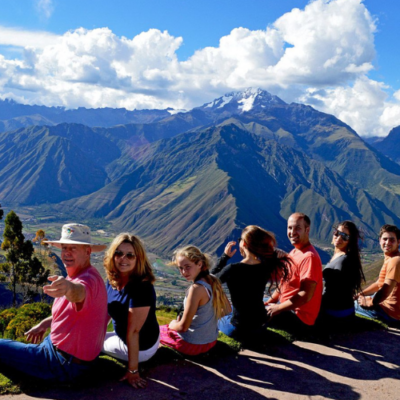
expedition through peruvian wonders

discovering the enigmatic south peruvian
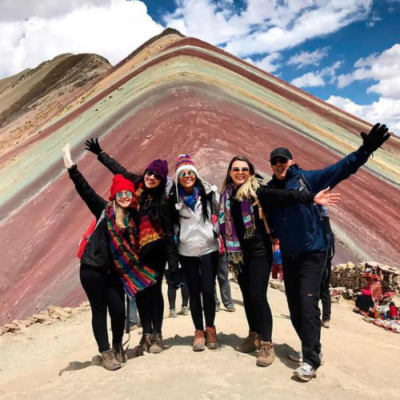
grand peruvian expedition for hidden treasures

know the route of the andean civilization
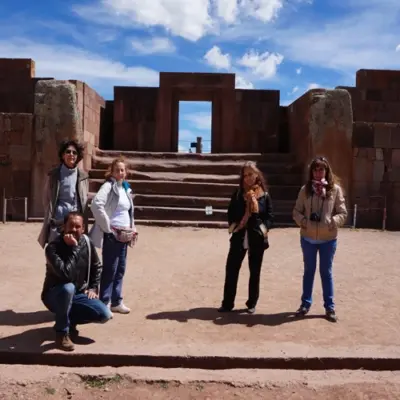
exploring the cultural and natural diversity of peru
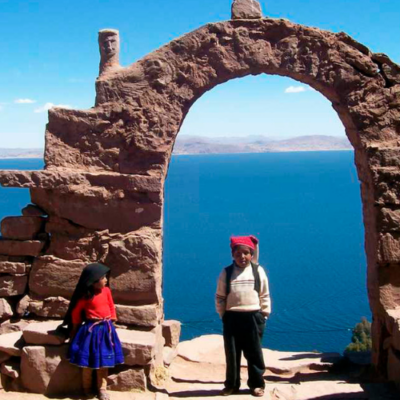
knowing culture and enjoying peruvian gastronomy

peruvian radiance sun, sand, and ancient wonders
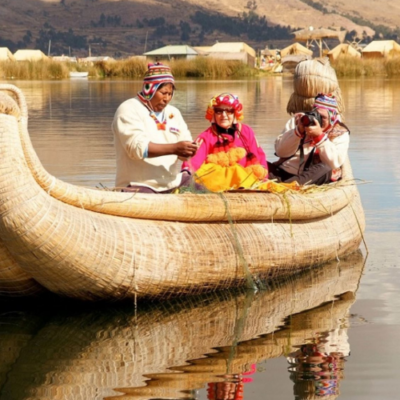
discovering peruvian wonders machupicchu, puno and lima

peruvian wonders lima, cusco and machu picchu
Copyright© 2023 Leading Peru Travel
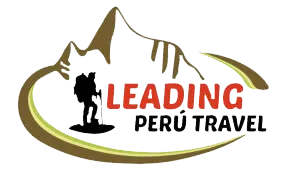

Top 10 of the Must-See-Places in Northern Peru
Please be aware that all the archaeological sites presented in this article in Northern Peru are very old. Much older than the Machu Picchu and the Inca history that you probably know already very well.
But Peru is not only Inca. There existed many other cultures before them and they lived in the Northern Regions of Peru and in Ecuador. We are lucky today, as they have left us an incredible wealth of ruins and archaeological mysteries.
Apart from these important visits, I propose you as well my personal selection of places. I am sure there will be something for everybody : Birdwatching in Huembo, Canoe-Tour in a Nature Reserve in Tingana, Culture with indigenous Quechua-Lamistas in Lamas or some rest at a Fisher Village. The possibilities of travels in Northern Peru are just infinite !
1) The adobe city of Chan Chan
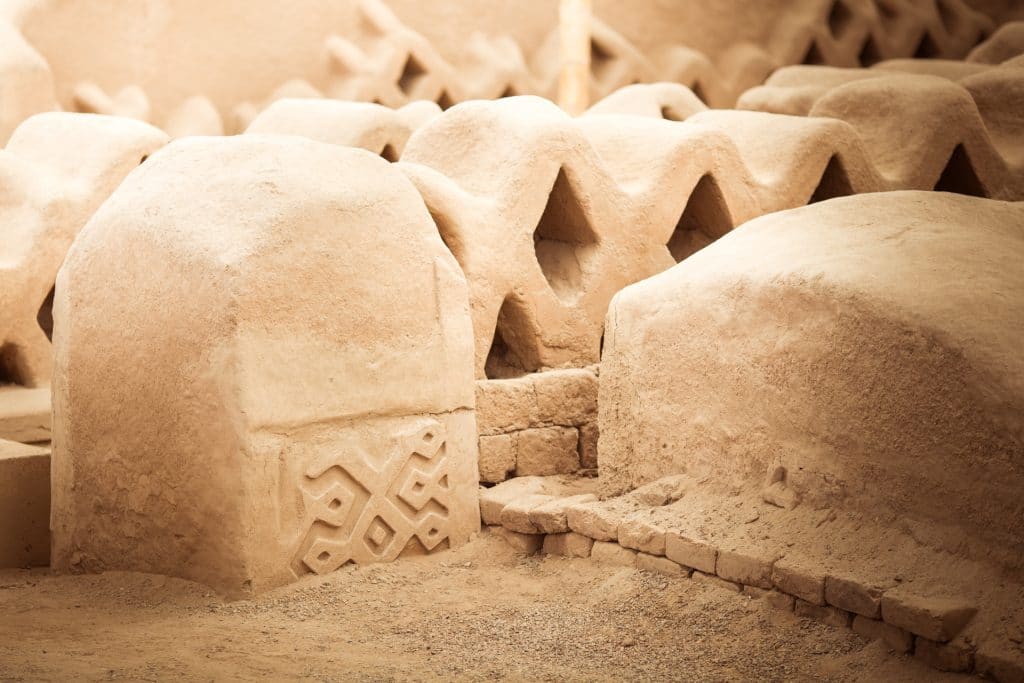
This impressive archaeological site is situated close to Trujillo, on the coast of Northern Peru . It was built from 850 after JC onwards by the Chimu culture. With over 24 ha surface, it is the biggest city ever built in Adobe bricks. Today there are only 14 ha left and from these you can only visit a small part. But the visit is fascinating. The Chimu culture was very sophisticated, they even managed to prosper in this arid and dry region.
The Chan Chan site was named Cultural Heritage of Humanity by UNESCO in 1986.
2) Chachapoya citadel of Kuelap, the Machu Picchu of Northern Peru
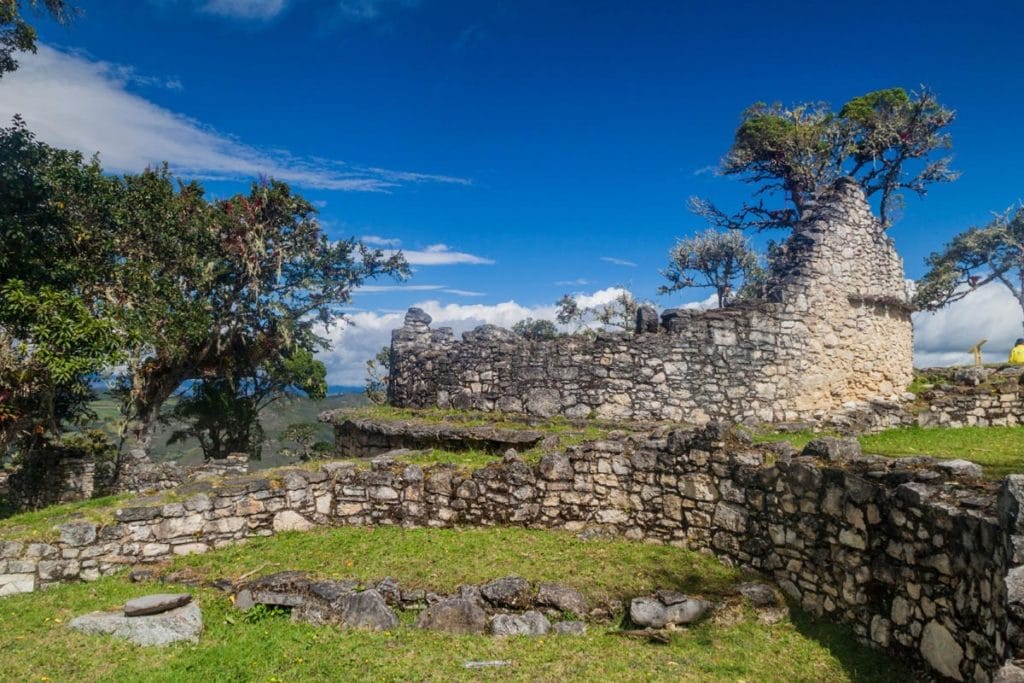
The fortress of the Chachapoya culture is in the current region of Amazonas. This is in Northern Peru in the Andes mountains at an altitud of 3 000 m. It was built between 500 and 800 after JC. Archaeologists believe that at its peak up to 3 000 people lived there. The fortress of Kuelap is surrounded by up to 20 m high walls. Over 450 ruins of round houses were found in its interior on the two levels. It was a highly religious and administratif place for these Cloud Warriors, as the Chachapoya people were also called.
Kuelap was abandoned by its inhabitants so that they would not get conquered by the Incas. The Chachapoya joined the Spanish in order not to surrender to the Incas.
3) Conservation area of Huembo
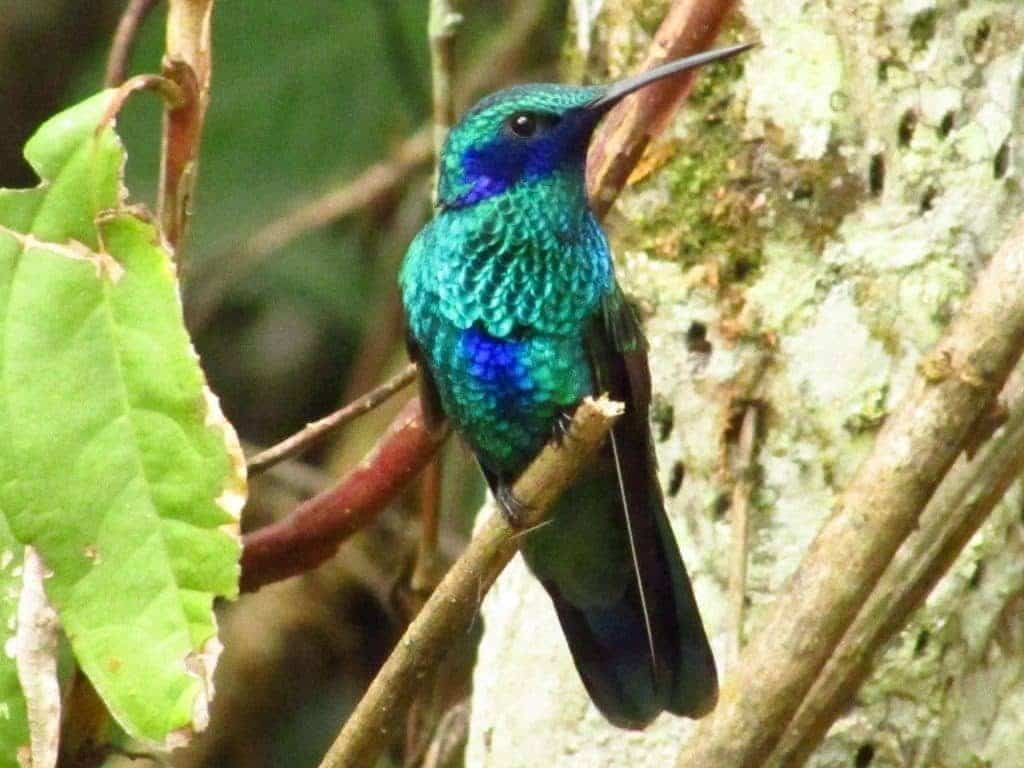
Huembo is an ecological reserve close to the Pomacochas Lagoon in the Amazonas region. It is situated on the birding road of Northern Peru. In this beautiful reserve you are most likely to see the famous Spatuletail Hummingbird, one of the most spectacular ones in the world.
With its spatules, the male makes a huge effort to impress his “chosen-one”. To see this mating dance will be certainly one of your best souvenirs from your trip to the North of Peru . Also keep in mind that the Amazonas region is the only place in the world where you can see the Spatuletail Hummingbird. This is thanks to its unique ecosystem between dry forest and humid mountain forest.
4) Huaca de la Luna y del Sol
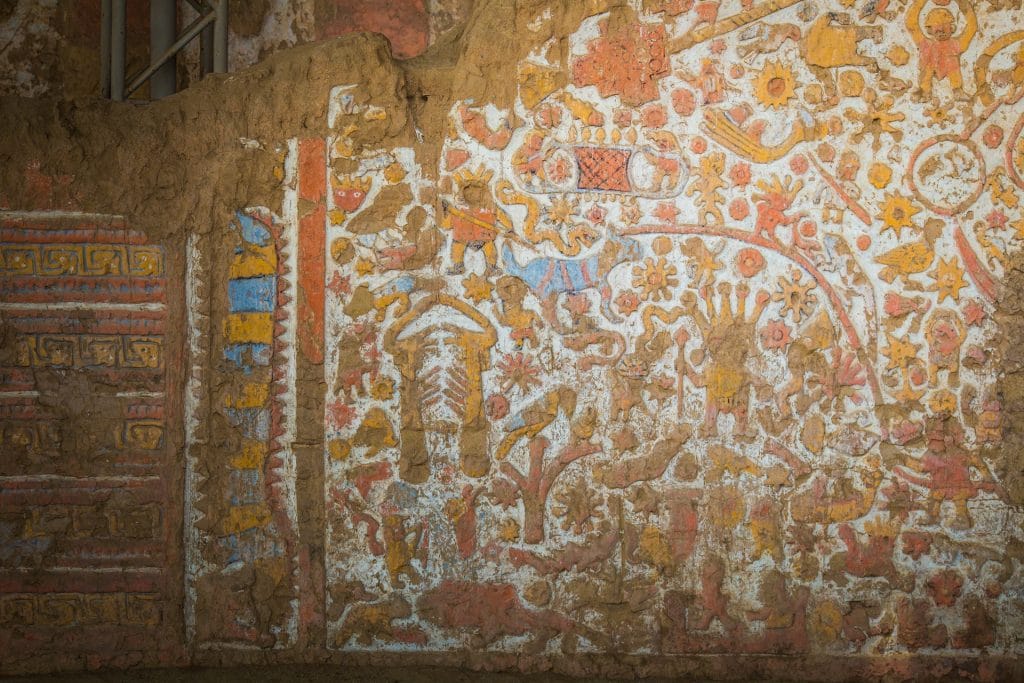
The Sun and Moon Temples are close to Trujillo on the Northern Coast of Peru and can be easily visited with a local guide. This exceptional archaeological site was built by the Moche civilisation that lived in this dry region between 100 and 800 our time. The Sun Temple (that can’t be visited) is supposed to be the biggest adobe (mud bricks) building of South America. Its construction used more than 140 millons of bricks for a size of 345 m long, 160 m wide and 30 m high.
5) Museum of Tumbas Reales
This museum is situated close to Chiclayo and is one of the best museums in Peru. It contains the excavations of the archaeological site of Sipan since 2002. The Museum of Tumbas Reales is known for the many gold, silver and copper pieces that are worked extremely fine. The Lord of Sipan lived around the years 300 as the Supreme Lord of the Moche population. His grave was found in one of the Truncated Pyramids, that are so typical for the Moche architecture in this period.
6) Waterfalls of Gocta
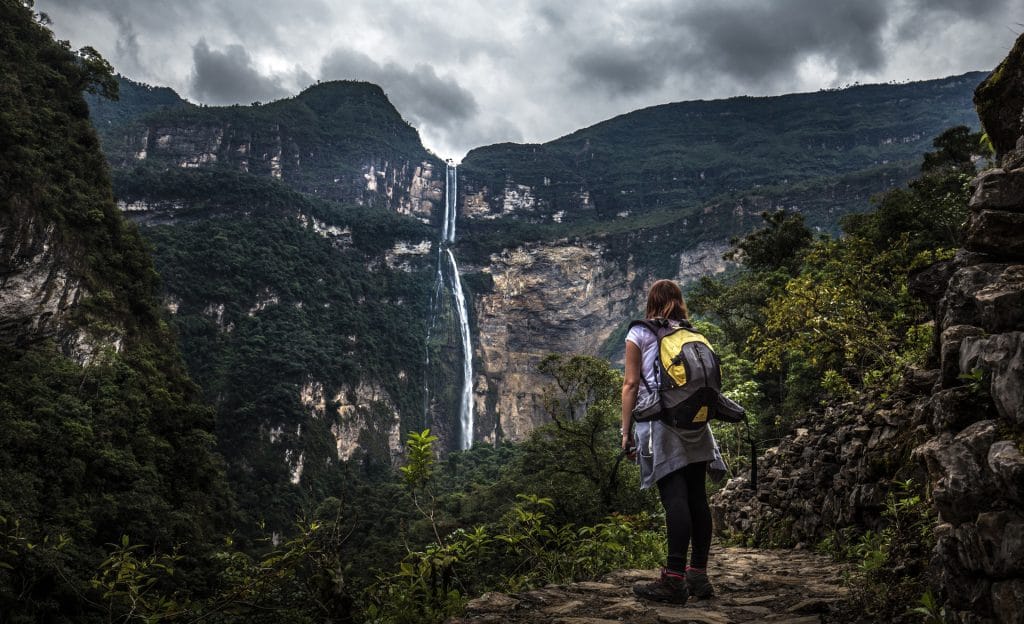
The waterfalls of Gocta in the Amazonas region in Northern Peru were shown to the world in 2002 when the German Stefan Ziemendorff realised the impressive height of this waterfalls in two parts ! After measuring, it turns out that the Gocta waterfalls have a total height of 711 m and they are under the highest waterfalls in the world ! The hiking to the waterfalls takes around three hours through fields and cloud forest where you can see colorful butterflies, wild orchids and, if you are lucky, the famous Spatuletail Hummingbird or a Gallito de las Rocas, the Peruvian national bird.
7) Moyobamba – the nature reserve of Tingana
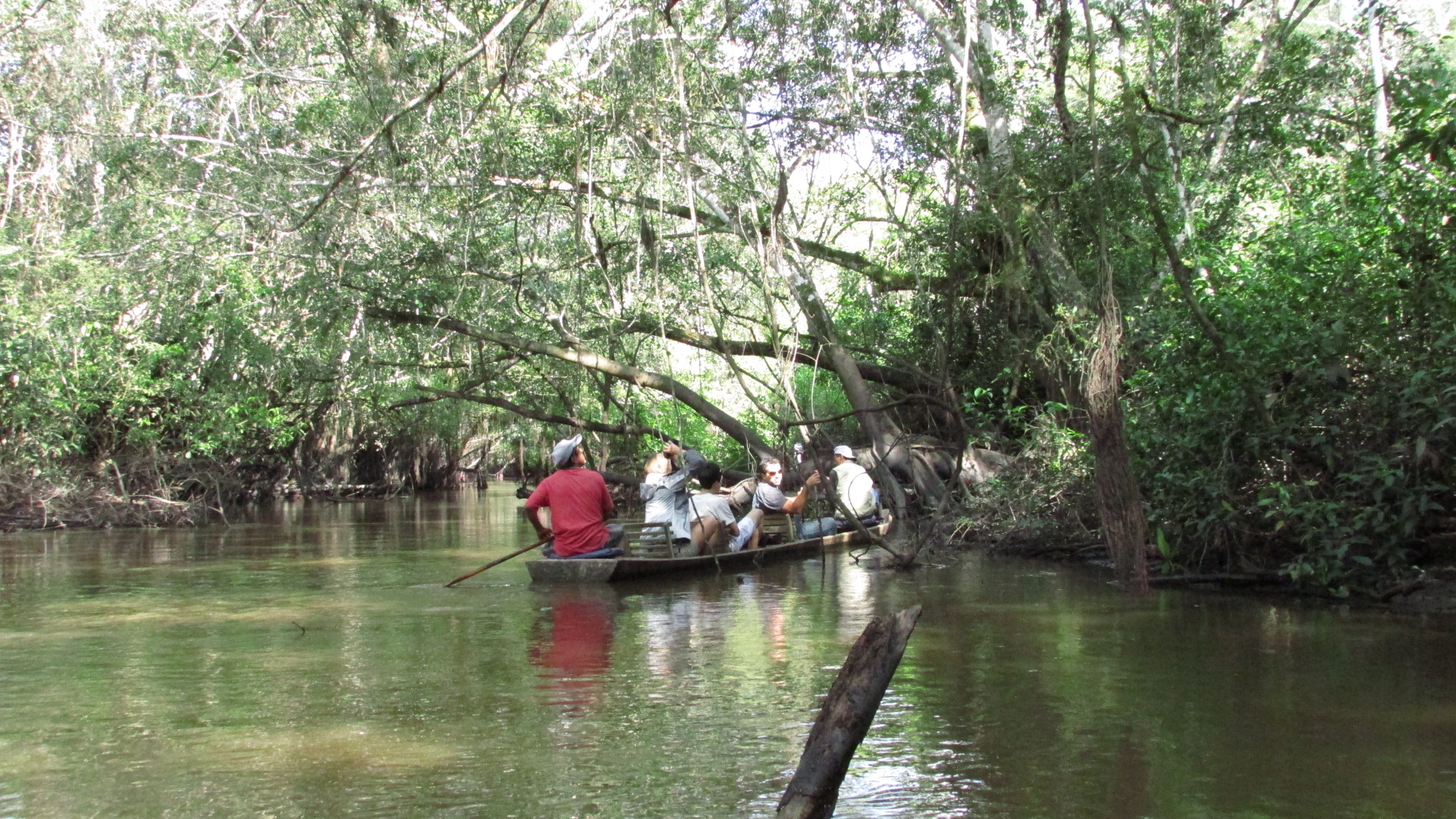
The ecotourist reserve of Tingana in the region of Moyobamba in Northern Peru is a completely different world. After a 45-minute drive, and another 45-minute by speed boat, you will arrive at the reserve, which is a net of waterways that can only be used by canoe. The tour is magique, without any noise, with only the wind in the leaves, the flying insects and the whispering of the guides as they show you monkeys and birds in their natural environment. A place to see and to preserve !
8) Fishermen village of Huanchaco
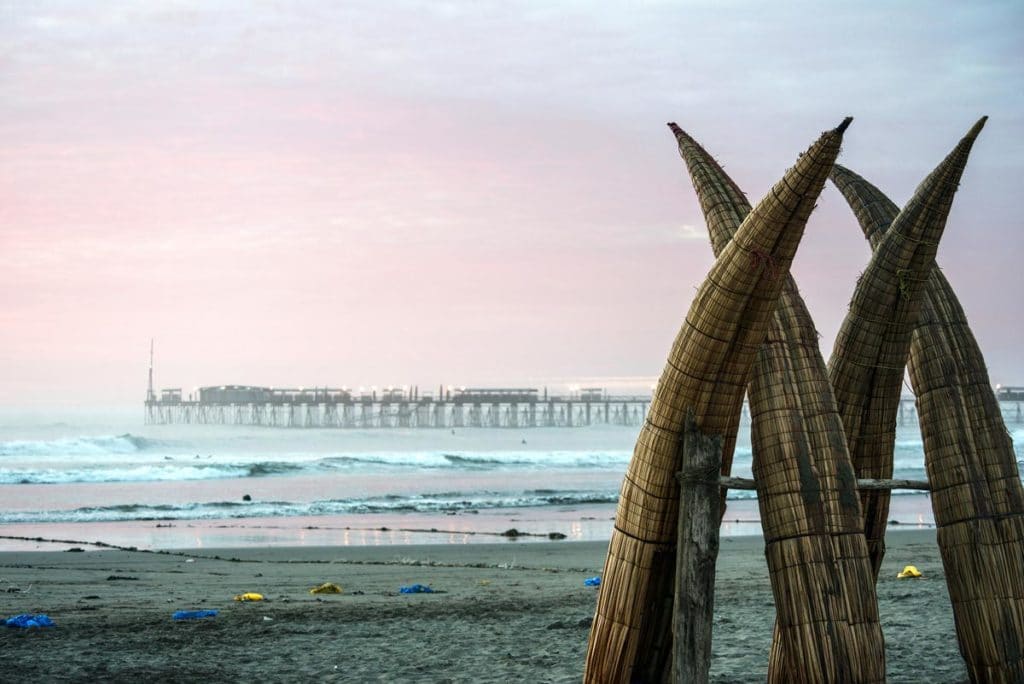
This fisher village close to Trujillo on the Northern coast of Peru still has all its charme. In the morning you can walk on the quiet beach and even see the fishermen come back from their daily work. Later on, locals and Peruvian tourists enjoy the beach to relax and get a nice sun tan, as the water is rather cold to have a swim.
The relaxed ambiance and the good food at the Coast (Peruvian Ceviche and fresh fish) will make you love Huanchaco before continuing your trip to other exceptional sites.
9) The community of Lamas, close to Tarapoto
Another village, but different assets. L amas is in the region of San Martin in Northern Peru, at about 15 km from the town of Tarapoto , on a hill with a great view of the surrounding valley. In the village you can learn about the history of the indigenous Quechua-Lamistas in the Museum Chanka before meeting them personnally in their part of the village.
This is where you can see their handicraft shops or take a tour at the association Warmi Wasi where you learn the different technics of producing bracelets out of grains, pottery or weaving. Another curiosity in Lamas is its medieval castle on the third level of the village. And for chocolat lovers , have a stop at the Fundo Ecoperlacha , just at the entrance of Lamas on your left. Here you will get all the explanations about cacao production and you can taste some as well ! (reservations only).
10) Beaches of Northern Peru
I can’t finish this Top 10 without talking about the beaches where you can swim ! For this you have to go as far North as possible, because otherwise the water is too cold. But around the towns of Mancora, Zorritos or Punta del Sal, you can find kilometers of sand, little villages on the sea (tourist, but with charme) and a summer ambiance: Swim, Surf, relaxing, the ideal destination to have a rest between two archaeological visits !
You would like to know more about it ?
- Sustainability report 2023
- Pacaya Samiria – Peruvian Amazonia
- What to do in Oxapampa and Pozuzo ?
- What to do in Nazca (apart from the flight over the Nazca lines)
- A day at Canyon de los Perdidos, Ica

Our free Peru guide
Receive our best tips to organize your trip to Peru.
DON'T LEAVE JUST LIKE THAT !
Sign up to receive your free guide together with
precious information about your travel destination!
Zero Spam, your email is safe.
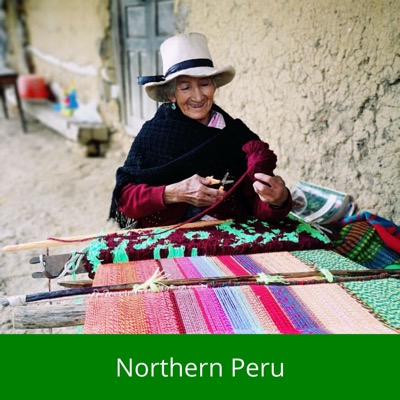
You are using an outdated browser. Please upgrade your browser or activate Google Chrome Frame to improve your experience.

- Select Language English French
- Destinations
- South America Tours Calendar
- South America Tour Finder
- Late Availability
- Inspirational Journeys
- Argentina Travel Highlights
- Bolivia Travel Highlights
- Chile Travel Highlights
- Colombia Travel Highlights
- Ecuador Travel Highlights
- Galapagos Islands Guide
- Patagonia Travel Highlights
- Peru Travel Highlights
- Peru Trekking Highlights
- Peru Amazon Rainforest
- Useful Links & Resources
- Books & Guides
- Health & Safety Travel Advice
- Meet the Team
- Our Partners in South America
- Andean Trails Background
- Community Projects
- Paramo Clothing Discount
- Testimonials
- South America Flight Advice
- Make a Payment
- Booking Conditions
- How to Book with Us
- Travel Insurance
- Why Book with Us?
Northern Peru Travel Guide

- Peru
- Top 10 things to do
- Travel Advice
- Travel Planning
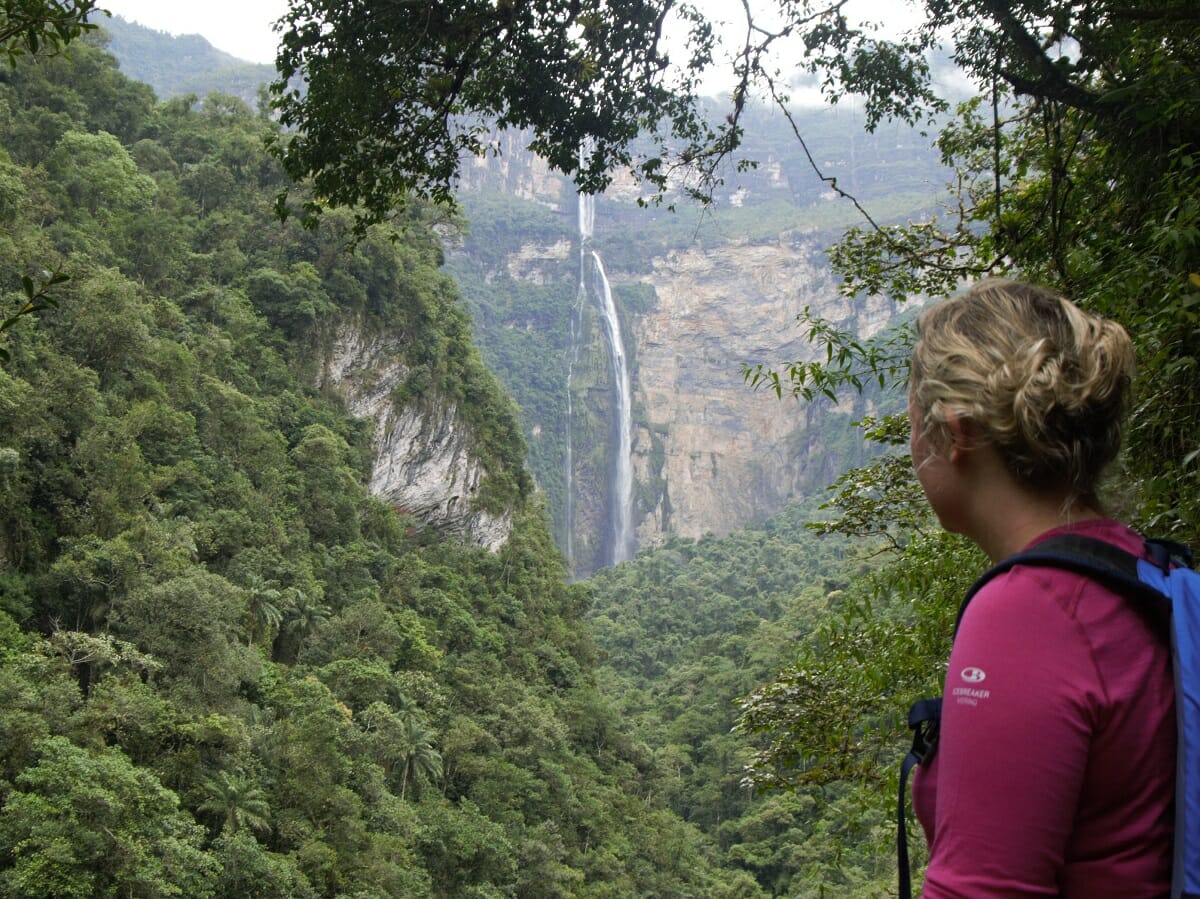
THE NORTH OF PERU
The north of Peru is brimming with treasures and it is much less travelled than the southern hot spots of Cusco and Machu Picchu.
Northern Peru travel never fails to surprise and impress, it is a fascinating part of this wonderful country well worth exploring.
There is masses to see and do here so I would recommend a good amount of time. If you can I would dedicate a week as a minimum and ideally two weeks to a tour to the north of Peru.
Have a read of “Our Travel Guide to Northern Peru – Best Places to Visit” to get some insight into who should go, when to go, where to go and what to see.
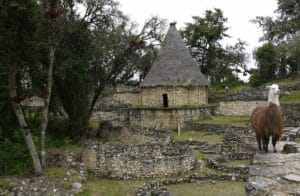
Northern Peru Travel Guide – Top Places to Visit
Who should go to the north of Peru?
For anyone with an interest in history and culture the coastal desert towns and pre-Inca sites are a must. The north of Peru was host to several widespread important pre-Inca cultures such as t he Moche, Chachapoyas, Chimu and Sican.
Just some of the archaeological highlights are t he ancient pyramids of Tucume , the Huacas of Sol y Luna, the adobe ruins at Chan Chan plus the exceptional Museo de Tumbes Reales where the Lord of Sipan and his treasures are housed.
Jewel in the crown of northern Peru has to be the ridgetop site of Kuelap , home of the Chachapoya culture.
For birders and nature lovers the vast wilderness area of cloud forest is biodiverse and home to plentiful wildlife. Peru’s north is also home to tropical dry forest and vast swathes of Amazon rainforest.
For relaxation, rest and respite take to the northern Pacific coast for warm waters, surfing and some beach life at Mancora or Punta de Sal.
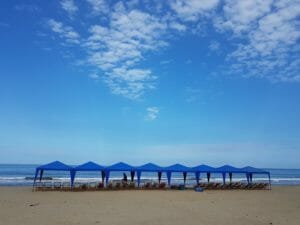
When is good to go to Peru’s north?
The north of Peru can be visited at any time of year. On the coast the days are warm and sunny (25C), with a gentle breeze off the sea. December to March are the warmest months.
Inland it can be wet from November to March. Chachapoyas has 800mm a year. If you want to do some walking then it would be best to avoid February and March. It is generally pleasantly warm throughout the year.
Highlights of the coast of the north of Peru
Trujillo – what to see
The lively colonial city of Trujillo or the nearby beach resort of Huanchaco is the best place to stay for exploratory forays to visit the Moche sites, the Huaca del Sol and the Huaca de La Luna. The Moche culture dominated on the northern Peruvian coast from AD200 to AD900. Trujillo is also close to the pre-Colombian site of Chan Chan , the vast adobe city of the Chimu culture.
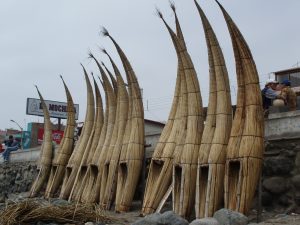
Huanchaco
Huanchaco is a small fishing village with excellent sea food and where you can see totora reed fishing boats. known as caballitos or little horses. These rather precarious looking boats are similar to those you see on lake Titicaca. They are used by local fisherman, who ride them back to the beach through the surf after they have been out fishing, an impressive sight. Some 2500 year old ceramics depict these reed fishing boats and they seem remarkably unchanged.
Chan Chan
This huge pre-Hispanic city made of millions of adobe bricks is just a few kilometres from the centre of Trujillo. It was the capital of the Chimú culture. The site was occupied from AD1100 to AD 1470, consists of houses, store rooms, decorated walls, pathways and pyramidal temples. There were probably around 40,000 people living here at its peak. The city was built on the coast because of the dependency of the Chimú people on the sea. You will see that sea birds, fish and sea weed figure in their decorations.
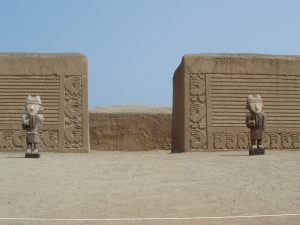
Huaca del Sol and Huaca de la Luna
Just 5km south of the city of Trujillo next to the River Moche you will find two impressive Moche temples, the Huacas of the sun and the moon. This was the Moche culture’s principal administrative and religious centre . The huacas are pyramidal and stepped construction of multiple levels, giant structures made of innumerable adobe bricks. The construction of such huge temples was only possible because of the control over water and labour , held by the Moche leaders.
Chiclayo – what to see
Chiclayo, 700km north of Lima and 209km north of Trujillo is one of Peru’s largest cities. The city itself is not attractive, but is a good base for visits to the archaeological and historical gems of Lambayeque (12km north), Túcume , Sicán and Sipán . For food lovers try the typical dishes of coastal Peru such as Arroz con Pato, Seco de Cabrito and the very best of Peru’s ceviches .
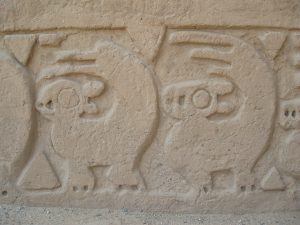
Museum of Royal Tombs – Sipán
Over the years unscrupulous collectors and grave robbers have unearthed and stolen invaluable objects from Peru’s sites before archaeologists have been able to get. In 1987 archaeologists were alerted to a range of artifacts appearing on the black market that indicated a robbery on a grand scale. This led to the exciting discovery of the intact tomb of the Señor de Sipán . Sipán is just southeast of Chiclayo. A tomb was found, a soldier , whose feet had been cut off, carrying a shield and wearing a gold helmet. Further down they found w
a small figure of gold and turquoise, amazing ornaments, and the deteriorated body of the Señor de Sipán . Subsequently the tombs of thirteen others were unearthed at Sipán . His death has been carbon dated to AD290.
The Museo Tumbes Reales de Sipán in Lambayeque, near Chiclayo, is the superbly put together museum that houses the fascinating Señor de Sipán collection. This vast museum, which contains by far the greatest intact discovery of gold artifacts in the Americas, is shaped like the pre-Columbian pyramid under which this amazing tomb was found in 1987.
Bruning Museum – Lambayeque
The Bruning Museum, also in Lambayeque, is home to an interesting collection of artifacts spanning the Chimú, Moche, Chavín and Vicus cultures.
Túcume – Sican
The desert site of Túcume is South America’s largest accumulation of pyramids, 26 of them. Just to the north of Chiclayo, this was one of the main cities of the Sicán or Lambayeque culture (AD700 to1400), successor to the Moche. Started in AD1000, the impressive site continued to expand under successive waves of conquest, first the Chimú and then the Incas, until finally falling into ruins within a few years of the Spanish conquest. The plains of Túcume are part of the Lambayeque Valley, the largest valley of the north coast of Peru. The valley boats scores of natural and man-made canals and waterways and Túcume is surrounded by fertile agricultural land.
Thor Heyerdahl, the well known Norwegian sailor and explorer, become involved in excavation and protecting this site in the 1980s. Thor Heyerdahl’s interest had been sparked because of his fascination with Peruvian water-craft. In 1947 he had sailed on a balsa raft, the KonTiki , from Peru to the Polynesian Islands to prove that this could have been done by ancient Peruvian sailing vessels. He was able to secure funding that has enabled archaeologists to piece together evidence and make some educated guesses about the function of the site and about the lives of its inhabitants.
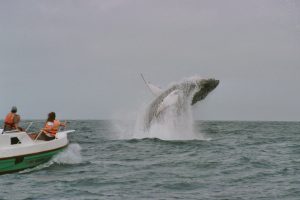
Piura / Tumbes – what to see
The city of Piura has a dry tropical climate. The Pacific fishing off Piura has broken world records for black merlin and swordfish.
Within easy reach of Piura there are some good beaches, which are becoming more and more popular. Surfers also are increasingly attracted to the warm waters of northern Peru. November to March is best for surf. The sun shines most of the year and the temperature is consistently warm.
From august to November it’s possible to go and watch humpback whales that migrate to breed nearby. There are boats trips also to see dolphins, rays, and snorkel with turtles.
Cabo Blanco, Mancora and Punta Sal are the best know and popular amongst Peruvians and Ecuadorians as well as a few international tourists. Accommodation ranges from luxury ecolodges, bungalows to back packer hostels.
For birders and wildlife lovers there are several parks nearby excellent for interesting species. The Cerros de Amotape has transitional forest from dry to tropical and pre-montane and is great for birds, crocodile and otter.
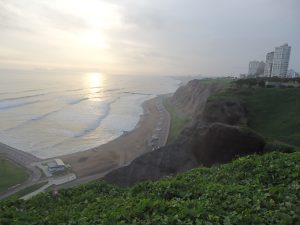
Highlights of northern Peru, inland.
C ajamarca – what to see
Cajamarca is a lovely colonial town similar in many ways to Cuzco, though smaller and much less touristy. Wander the town centre to see 17 th and 18 th century colonial buildings with red rooves, wooden balconies, doorways and white painted facades. The Plaza, with the imposing San Francisco Cathedral is well cared for and a relaxing place to sit and watch life go by. It’s lively in the evenings with lots of people wandering around and plenty of shops, bars and restaurants.
Cajamarca was key to one of the most momentous events in Peru’s history, the beginning of the end for the Incas. Here Atahualpa was captured, ransomed then put to death, in July 1533, at the hands of the Spanish conquistador Francisco Pizarro. Evidence shows early settlement and strong cultural influences from many other regional cultures. Today Cajamarca is a rich agricultural area producing huge quantities of milk and dairy products for the national market. It is well known for its craft work in wool, leather, wood, clay, straw and stone. Cajamarca has dozens of festivals, Carnival in February, Easter week and Corpus Christi in May or June are especially fun to see. The largest gold mine in Peru is nearby.
Baños del Inca
Near to Cajamarca are some fabulous hot springs. Communal pools or private, of varying standard, generally clean and fun.
Cumbemayo
This forest of stones ( bosque de piedras ) “Los Frailones ” is an amazing rock outcrop dramatically located high above the town on the ichu grass covered windy moorland. The rocks have been shaped by erosion forces into weird contorted figures. There are also some pre-Inca remains, including a very 8km long impressive aqueduct carved out into stone and cave paintings. The canal carries water from the Pacific side to the Atlantic side of the mountains. There is some lovely trekking here too, 4 days through cultivated valleys, small adobe villages, surrounded by lofty mountains, well off the beaten track.
Ventanillas de Otuzco
A pre-Inca funerary site 7km from the city that has dozens of niches thought to have been for burying mummies, carved out of the solid rock.
Cuarto del Rescate Right in the centre of Cajamarca is the room where Atahuallpa was held hostage while gold was collected for a ransom.
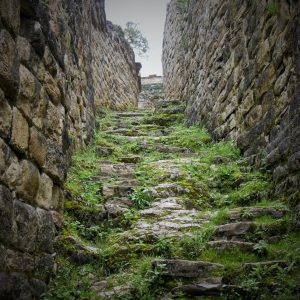
Chachapoyas – what to see
Chachapoyas is a small market town in northeast Peru. It is a remote area with vegetation typical of ceja de selva (eyebrow of the jungle) full of wildlife especially humming birds. This is home to the pre-Hispanic Chachapoya culture, from AD 800. There are several Chachapoya sites to visit with expert local guides.

The Chachapoya culture dominated in this area around AD800. A guided tour of the sites left by this culture gives some indication of the way the people lived, in villages of up to several hundred people, in circular houses. Typical here are tombs on inaccessible cliffs, agricultural terraces and cities on ridges in the cloud forest. The site of Kuélap, an almost impregnable fortress, is situated at an altitude of 3,100m, overlooking the river Utcubamba. This is a beautiful site to spend some time exploring. The unusual maze of round stone houses, watch towers and stairs, now crumbling are overgrown with ever advancing cloud forest.
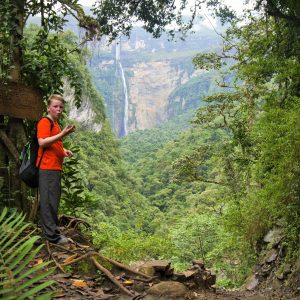
Gocta Falls
Also in this area are the beautiful Gocta Falls, a half day walk takes you through verdant cloud forest to this long drop fall.
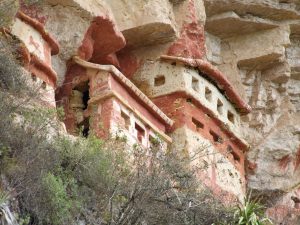
Sarcophagi of Karajia
The Sarcophagi of Karajia are coffins of the Chachapoya people, high up on the cliff side. There are just a few left now, the rest looted by graverobbers.
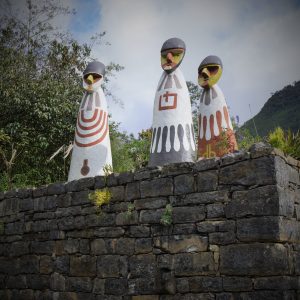
Leymebamba
The excellent Museum of Leymebamba houses a collection of mummies, wooden sarcophagi, Inca quipus and other artefacts. The mummies were found in nearby Laguna de los Condores in 1997 (a full day’s hike away). The Chachapoya buried their dead inside wooden sarcophagi, wrapped in cloth and with a face sewn on.
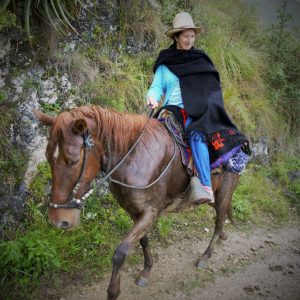
Andean Trails suggested tours to northern Peru
Our Northern Peru Special Adventure holiday takes you to the highlights on a 14-day adventure tour. If you love wilderness, adventure, archaeology and culture this could be just the holiday for you:
A shorter tour suitable for all ages seeing adventure is our Gocta Waterfall & Kuelap Tour. This seven day trip takes in the long drop Gocta waterfall in north Peru, pre -Inca ruins of Kuelap , cliff side burial chambers of Revash , the Mallqui museum and town of Leymebamba . You drive through vast wilderness areas of superb wildlife rich forest covered mountains. We see coffee and cacao plantations and keen birders may even be able to spot the Spatula Tail hummingbird.
Ask us for details of any of our tours or a bespoke tailored made itinerary to suit your travel plan.
Leave a Reply Cancel reply
Your email address will not be published. Required fields are marked *
You may use these HTML tags and attributes: <a href="" title=""> <abbr title=""> <acronym title=""> <b> <blockquote cite=""> <cite> <code> <del datetime=""> <em> <i> <q cite=""> <s> <strike> <strong>
Save my name, email, and website in this browser for the next time I comment.
Quick Request New
- Latest Twitter Follow Us on Twitter
- Facebook Like Us on Facebook
- Pinterest Follow Us on Pinterest
Ecuador’s best lodge-to-lodge hiking tour
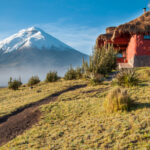
Our lodge-to-lodge hiking tour offers the best trekking in Ecuador in comfort. Ecuador is one of the best Andean countries for trekking and day walks. On this lodge-to-lodge hiking tour, you experience fabulous expansive mountain vistas and volcanoes wherever you look. Enjoy views over deeply carved valleys, vast plains and a picturesque patchwork of fields. You’ll also enjoy diverse wildlife and flora, rich cultures, and interactions with friendly local people. The tour takes you through three of Ecuador’s most beautiful mountain regions: Cotopaxi, Quilotoa and Chimborazo. Full details of our Lodge-to-Lodge 13-day Trekking Tour, Ecuador. Lodges and Guesthouses Used …
Read More
- Name This field is for validation purposes and should be left unchanged.
Sign up here to receive the latest news and info from Andean Trails

- Ecuador & The Galapagos
- NEW: Costa Rica!
- Multi-Destination Custom Trips
- Highlight Tours
- Cultural Travel
- Community-Based
- Culinary Trips
- Adventure Tours
- Hiking Tours
- Family-Friendly
- Off-the-Beaten-Path
- Day Tours in Peru
- Multi-Day Tours in Peru
- Build Your Trip in Peru
- Day Tours in Ecuador
- Multi-Day Tours in Ecuador
- Multi-Day Tours on the Galapagos
- Build Your Trip in Ecuador & The Galapagos
- Build your Trip in Costa Rica
- Cultural travel
- Community-Based Tourism
- Off the Beaten Path
Northern Peru Multi-Day Tours
Welcome to the Multi-Day Northern Peru Tours, by Impactful Travel. This is where our story began, back in 2009, as RESPONSible Travel Peru. As we expand our horizons under our new name, Impactful Travel, our love for this area remains steadfast.
As you embark on this journey with us, prepare to be inspired by the authenticity of this off-the-beaten-path destination. We are here to connect you with the local communities, inviting you to partake in a travel experience that goes beyond sightseeing, promoting sustainable tourism and creating lasting impact.
Our Northern Peru Tours offer an array of possibilities, each designed to feed your adventurous spirit. From exploring the Amazon Rainforest to scaling the Andes Mountains (using ancient trails!), every trip is a unique experience. Discover archaeological wonders, engage with endemic flora and fauna, and immerse yourself in the vibrant local culture. Each tour is a testament to our commitment to responsible travel practices and community-based tourism.
Custom Trips to Northern Peru
We understand that every traveler is unique, and so should be their journey. That’s why at Impactful Travel, we offer the option to craft custom itineraries . Whether you’re drawn to specific activities, places, or communities in Northern Peru, we’re here to help you create your dream trip. Together, we can design a journey that’s not just about reaching a destination, but about the transformative power of travel, personal growth, and making a positive difference. With Impactful Travel, every journey matters.
Discover our Unique Northern Peru Multi-Day Tours
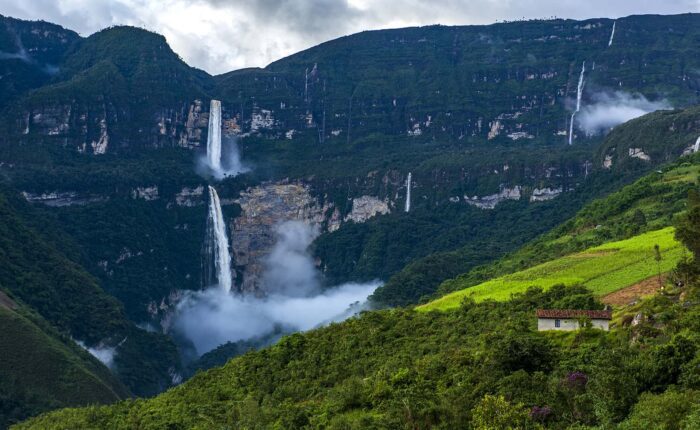
Exploring Northern Peru’s Spectacular Wonders

Cordillera Blanca Trek – Vicos to Ishinca
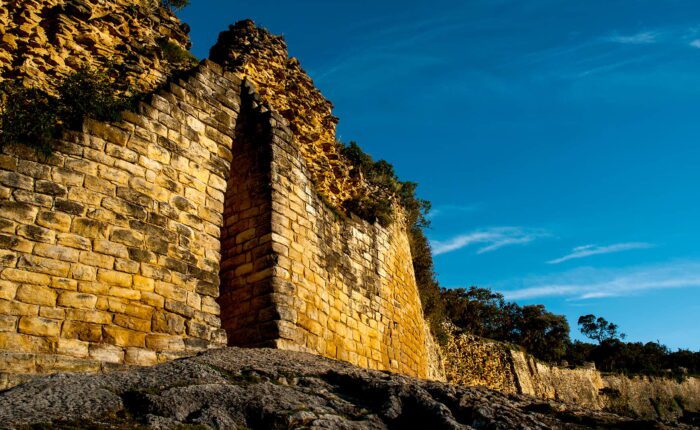
Searching for the Lost Kingdom of the Chachapoyas
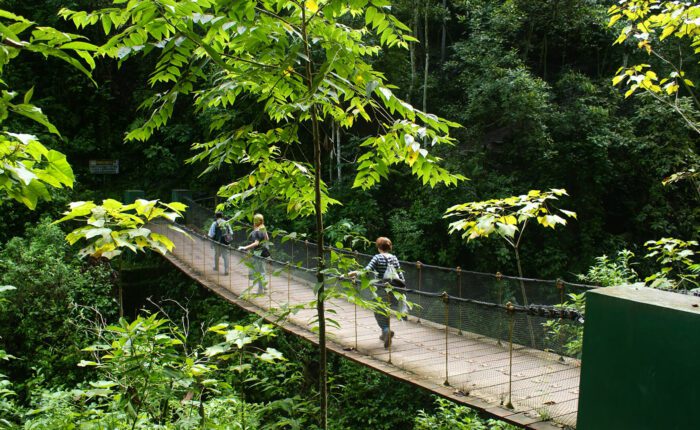
Well-being Retreat for Women in Northern Peru
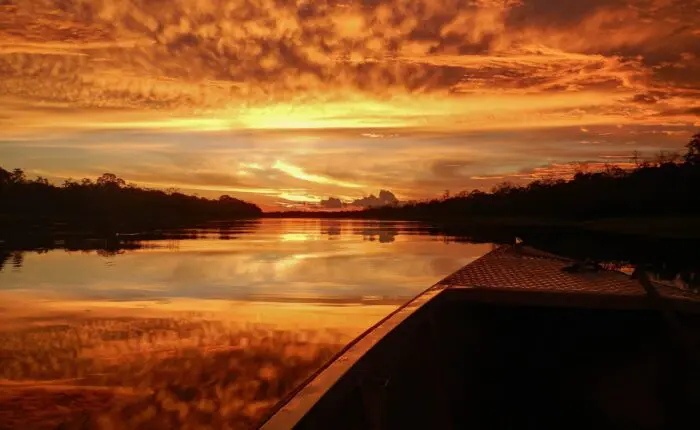
Amazon Full Adventure in Iquitos

Hike the Prettiest Stretch of Qhapaq Ñan in Huaraz
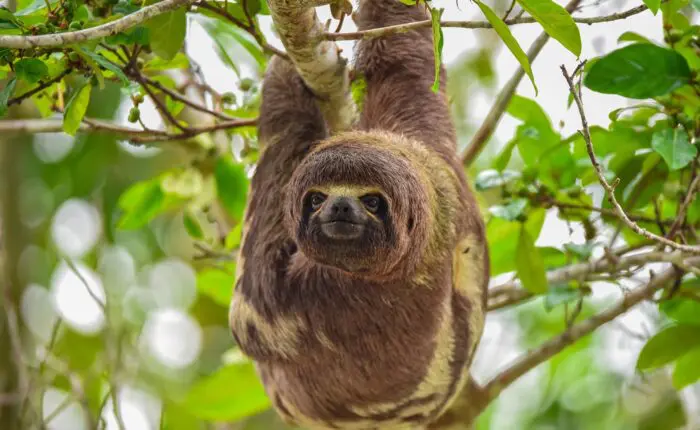
Sweet Iquitos Rainforest
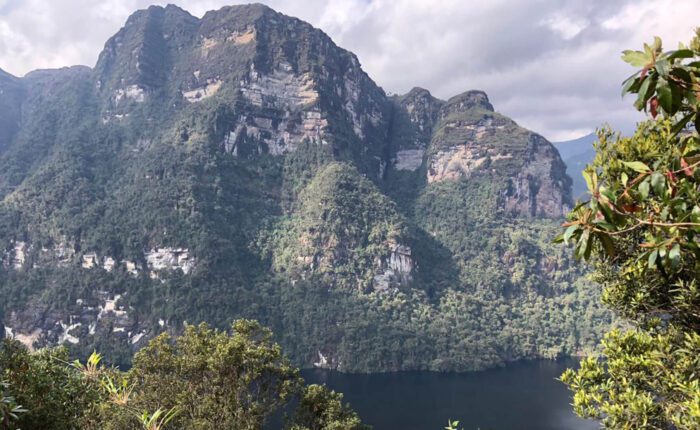
Horseback Riding to the Black Pearl of the Chachapoyas – The Condors’ Lagoon
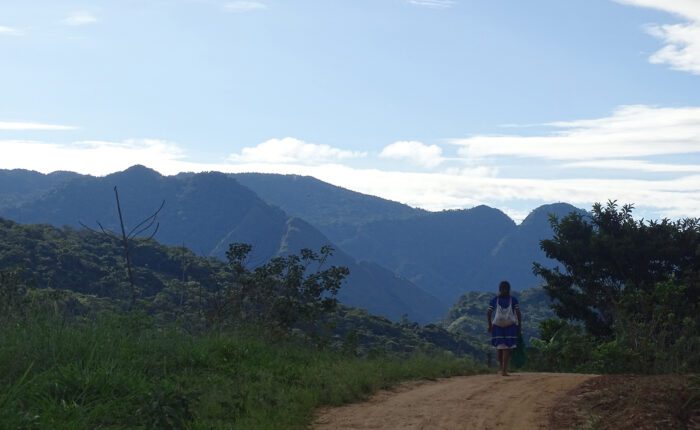
Connect with the Heart of Amazonian Culture
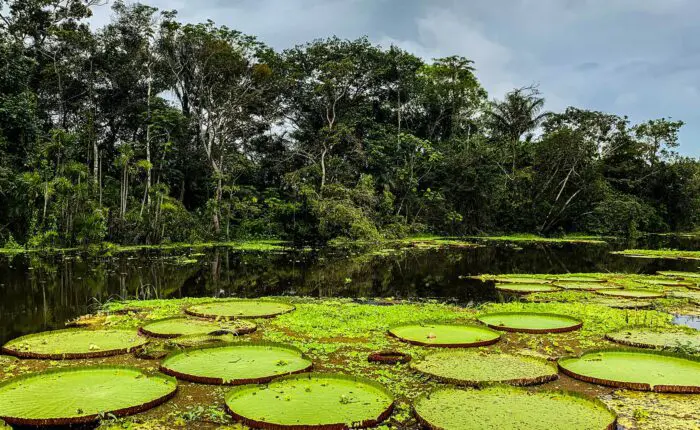
Welcome to the Jungle…of Iquitos
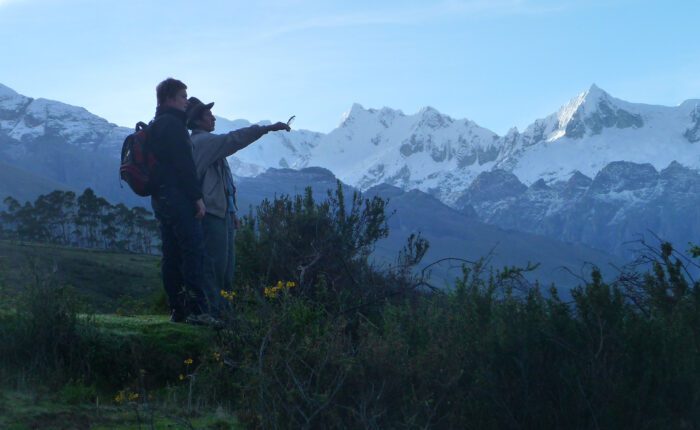
The Most Authentic Community Experience in the Cordillera Blanca
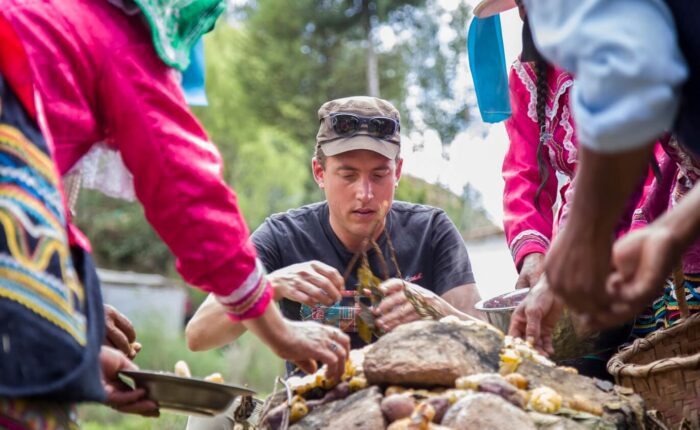
The Complete Vicos Experience with Pachamanca
Looking for something else.
Can’t quite find the adventure you’re seeking? Don’t fret! Dive into our comprehensive collection of tours. With a handy filter function, you can easily find journeys tailored to your preferred location, activities, and duration.
But our quest to bring you Impactful Travel experiences doesn’t stop there. We’re perpetually expanding our horizons, adding fresh tours and even brand new destinations. If your dream journey is still eluding you, we invite you to reach out. Share your travel aspirations with us . We might just have that transformative itinerary waiting in the wings, ready to connect you with vibrant local communities and offer personal growth. Together, let’s make travel truly matter!
What previous travelers say
See all our customers’ reviews here . (And if you wonder why you see so many mentions of “RESPONS” and “RESPONSible Travel Peru”; well, that was our name until the end of 2023! Read our story here .)
The 13 most incredible places to visit in Peru

Nov 10, 2023 • 9 min read
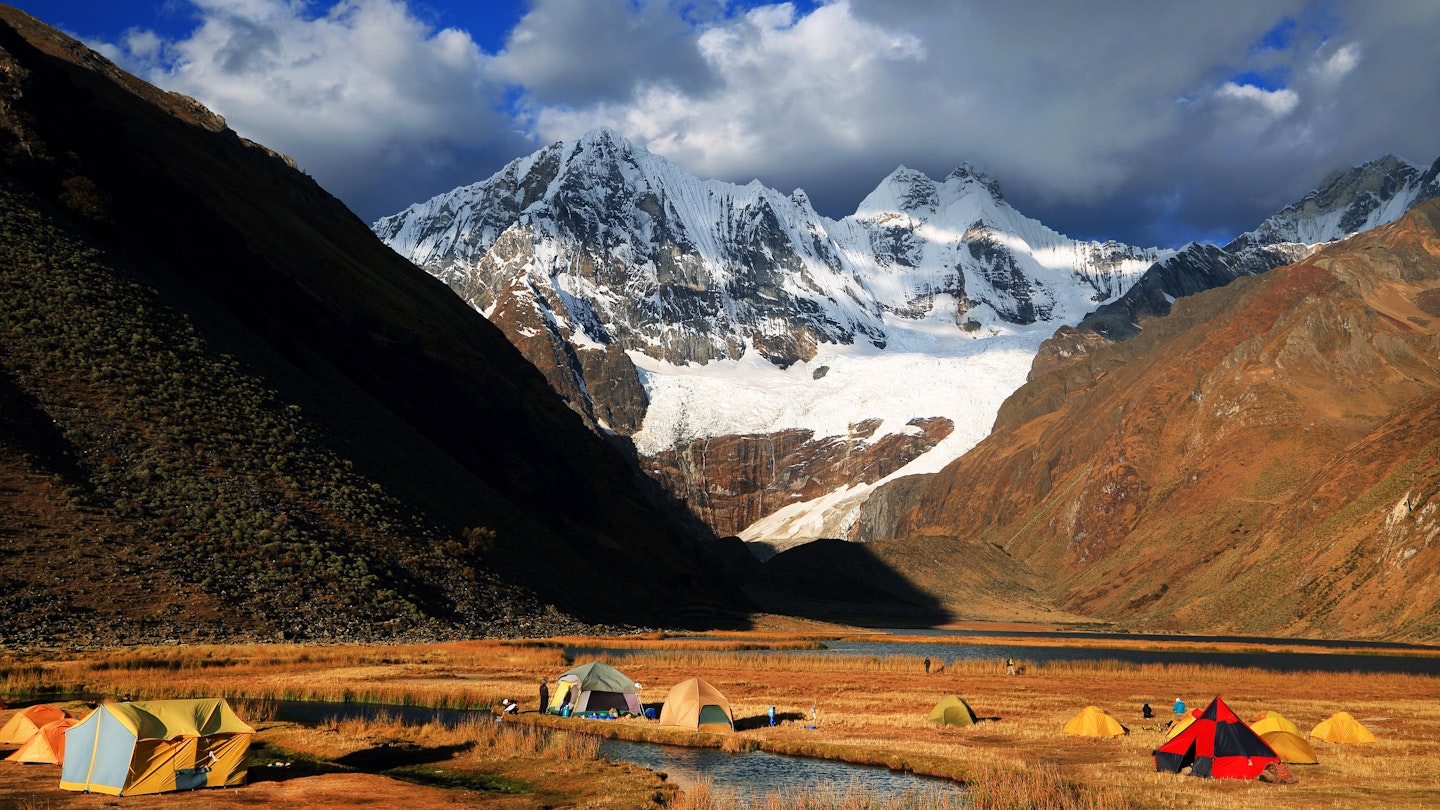
Peru packs in plenty of adventures across its varied geography © Mikadun / Shutterstock
Touted for its gastronomy, revered for its cultural legacies and marveled for its biodiversity, Peru is a land worthy of multiple visits – how else would you be able to see, taste and do it all?
With landscapes ranging from mountains and jungle to sea, Peru has activities and experiences that are as varied as its terrain. From sky-high Inca ruins to remnants of pre-Hispanic civilizations once buried beneath desert sands, these are the best places to visit in Peru .

1. Machu Picchu
Best for trekking
One of the New Seven Wonders of the World and Peru’s greatest claim to tourism fame, Machu Picchu lives up to its hype as a mystical and awe-inspiring 15th-century archaeological site. Built with incredible precision, attention to detail and at the great height of 2430m (7972ft) above sea level, Machu Picchu includes temples, private quarters and ceremonial platforms that continue to radiate sacred energy. Machu Picchu, meaning “old peak” in the Indigenous Quechua language of the Andes, can be reached by a two-hour train ride from the Sacred Valley town of Ollantaytambo, or the truly intrepid can walk in the footsteps of the Incas along the classic Inca Trail, a four- to five-day trek that traverses 42km (26 miles).
Local tip: The weather at Machu Picchu seems to have only two settings: heavy rain or bright, burning sunlight. Don’t forget rain gear and sunblock.

Best for desert explorers
It is mind-boggling how few tourists make it to the ancient city of Caral , built around 5000 years ago and impressively conserved. Located in the high desert of the Supe Valley, a 3½-hour car ride from the capital city of Lima, the Unesco World Heritage Site predates ceramic pottery and the Incas. It is the key to the beginning of Andean culture, a visible shift from separate tribes to a shared urban community. With a guide, visitors can stroll through what was once a complex city of the Norte Chico culture, consisting of mud-brick amphitheaters, ceremonial rooms, circular plazas and the remains of six pyramids: remnants of urban planning and agricultural practices that would greatly influence subsequent cultures in Peru.
Best for archaeology enthusiasts
In the Amazonas region of northern Peru, a walled settlement known as Kuélap has stood among the clouds since the 7th century. Built by the Chachapoyas culture (referred to as “Cloud Warriors”), the fortress is often called the Machu Picchu of the North, despite its higher elevation of 3000m (9842ft) above sea level and the fact that it predates the Inca citadel by at least 500 years. Hundreds of circular structures are spread across the site, making it one of the largest sites of stone ruins in the Americas.
Planning tip: Getting to Kuélap is now easy in a day trip from Chachapoyas. Cable cars drop off visitors at the top.
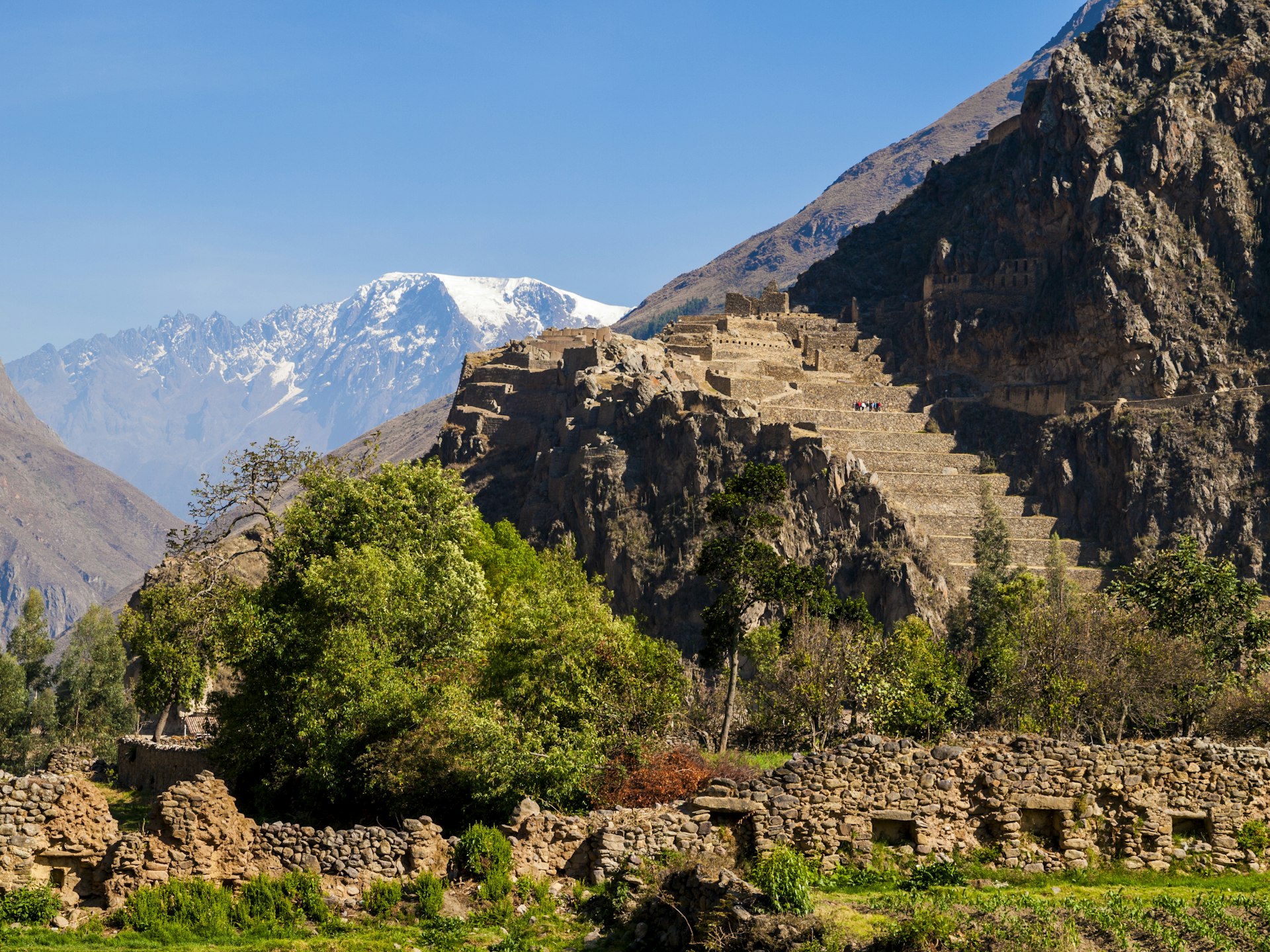
4. The Sacred Valley
Best for handicrafts
The heart of the Inca Empire, the Sacred Valley (Valle Sagrado) is indeed the gateway to Machu Picchu, but what rushed travelers often overlook are the villages cradled within the valley that are home to lesser-known archaeological sites, first-rate artisan workshops and living cultures of the Peruvian highlands. An hour's drive from Cusco, the bohemian town of Pisac boasts its own hilltop Inca citadel and one of the best handicraft markets in the region. To the northwest is Urubamba , a hub for adventure tourism, including rock climbing, trekking and downhill biking. The neighboring village of Ollantaytambo is home to the eponymous Inca fortress.
Local tip : Recent years have seen an influx of expats and New Agers to Pisac in search of an Andean Shangri-la. The local tourism industry has responded with everything from yoga retreats and cleanses to guided hallucinogenic trips.

Best for mountaineering
Defined by Cordillera Blanca, one of the most impressive mountain ranges in the world, Huaraz is Peru’s capital of mountaineering. The town itself is rather low-key, but it is home base for a number of outdoor excursions, which makes Huaraz a must-visit destination. Verdant valleys give way to the snowy summits of the Cordillera, accessorized with jade lakes and pristine springs. Experienced trekkers set their sights high to reach the 6768m (22,205ft) summit of Huascarán, a three-week journey. Meanwhile, day trips to sites like Laguna Churup are satiating for beginner or time-constrained adventurers.

6. Arequipa
Best for colonial-era architecture
Known as Peru’s White City for its unique colonial-era architecture crafted from volcanic rock ( sillar ), Arequipa is one of the most visually stunning cities in the country. Just beyond the chalky structures of the main plaza are deep-hued testaments to the city’s past, such as the blue and red Monasterio de Santa Catalina , built in 1579 and vibrant picanterías (traditional lunchtime restaurants). On the outskirts of the volcano-framed city is the Ruta del Sillar (Volcanic Rock Route), showcasing the material’s extraction, production and the lives of the workers. Witness the breathtaking flight of the giant Andean condor from the brink of Cañón Del Colca (Colca Canyon), one of the world’s deepest canyons and a top trekking destination in Peru.

7. Lake Titicaca
Best for getting out on the water
Separating Bolivia and Peru, Lake Titicaca was a sacred body of water to the Incas. In fact, Andean mythology often points to the high-altitude lake as the place of origin of the first Inca, Manco Capac, and his wife, Mama Ocllo. A geological wonder, Lake Titicaca lies at 3810m (12,500ft) above sea level, making it the highest navigable body of water in the world. Glide out to the floating reed islands that dot the lake to meet the Uros people, who live a fascinating life committed to the preservation of Indigenous handicrafts and fishing. Tourism is incredibly important for this community and some families offer homestays.
Local tip: Bring warm layers if you plan to stay out on deck. Three types of boats ply these waters. Veloz (high-speed speedboats), lancha rápida (speedboats) and embarcaciones artesanales (traditional boats) , which take twice as long as the speedboats.

8. Choquequirao
Best for intrepid hikers
Can you imagine having Machu Picchu to yourself? Full of history, challenging hikes and privileged views, Choquequirao is often described as a mini Machu Picchu, but not for its size. At least twice as large as the famed Inca citadel and similar in structure, Choquequirao can only be considered diminutive in terms of visitor numbers. A minimum four-day round-trip of steep climbs filters out many potential visitors, leaving only the most intrepid of hikers. At an elevation of 3050m (10,010ft), much of Choquequirao remains buried by thick jungle foliage. To reach this high-elevation gem with few other visitors is like stumbling upon hidden treasure, or as its name means in Quechua, a “cradle of gold.”
Planning tip: Bring a water filter – the water found along the way is not potable. Fill up when you can as water sources are infrequent.
9. Oxapampa
Best for the unexpected
A jungle town founded by Austrian and German colonists in the 19th century, Oxapampa is a unique visit with unexpected architecture and local food. Just beyond the main plaza and the Tyrolean architecture are lush mountainsides ideally explored by foot or bike. A bit farther away is Yanachaga-Chemillén National Park . A new wave of residents, largely from Lima, arrived in the past decade, resulting in new sustainable tourism ventures and greater impulse to continue Selvámonos , an annual music and culture festival.
Planning tip: An 80km (50-mile) bus ride away lies Pozuzo, Oxapampa’s smaller yet older neighboring town, which hosts its own version of Oktoberfest, called Pozuzofest .
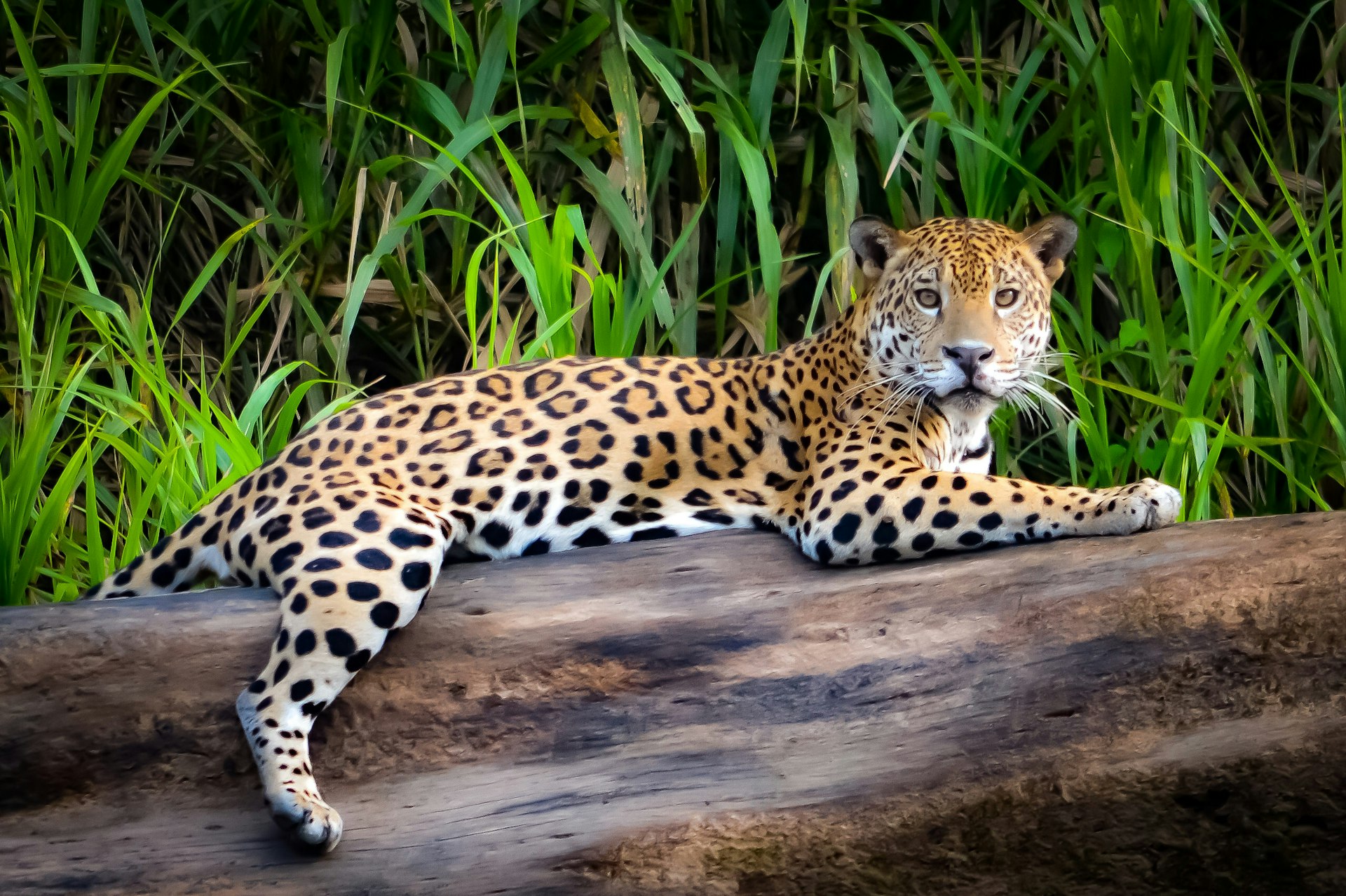
10. Puerto Maldonado
Best for wildlife
Capital of the southern Amazon rainforest, Puerto Maldonado offers easy access to prime, wildlife-rich jungles in Peru. From here, visitors can venture into the Tambopata National Reserve , one of the last few pristine areas in the rainforest. Spread over 2745 sq km (1060 sq miles) and marked by lakes, rivers and forest, the protected area is one of the most biodiverse destinations on the planet, boasting thousands of butterfly species as well as hundreds of varieties of birds, mammals and plants. Located in the Madre de Dios region, Puerto Maldonado is a 1½-hour flight from Lima. Popular with travelers of all ages, the city is far more laidback than its bustling cousin up north, Iquitos, making it more attractive for families and an extended stay.
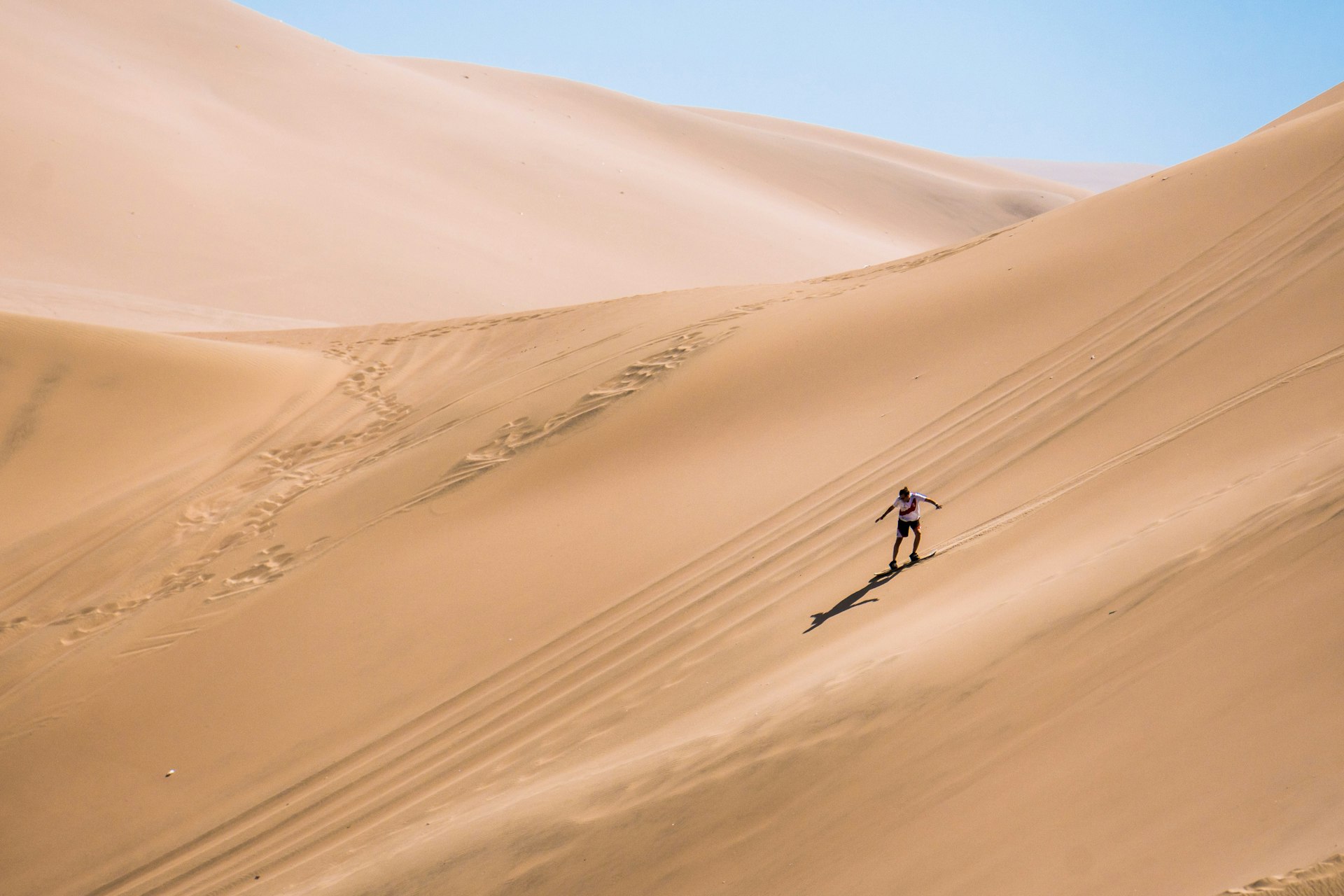
Best for sandboarding adventures
In the vast Ica desert can be found the surreal desert oasis, Huacachina . Rest your eyes upon the sparkling body of water (inhabited by mermaids, according to local legends) before plunging down the dunes upon a sandboard or in a dune buggy for an absolute adrenaline rush. Escape from the harsh desert sun at midday by looking around the impressive Regional Museum of Ica or on a tasting tour of Peru’s national spirit, pisco. With year-round sunshine and just four hours from Lima by car or bus, Ica can provide entertainment for days. If that's not enough, the famed Nazca Lines and Islas Ballestas , the so-called “poor man’s Galapagos,” are just 1½ hours away.
12. Cajamarca
Best for cheese lovers
The northern Andean town of Cajamarca was the fateful capture site of the last Inca, Atahualpa, by the Spanish conquistadors in the 16th century. Remnants of the area’s Inca history abound, including the Cuarto del Rescate (Ransom Room) that Atahualpa had filled with treasures to plead for his liberation as well as his favored thermal baths, now called Los Baños del Inca. Slow down and explore the idyllic countryside nearby: get your hands dirty on an immersive visit to the dairy farm of Granja Porcón , or visit the archaeological complex of Cumbemayo .
Local tip: Cheese is the Cajamarca specialty and is sold in numerous shops in and around the Plaza de Armas.

13. Barranco, Lima
Best for boho vibes
Bohemian, hip and creative Barranco is hands down the coolest district in the capital city of Lima . The coastal neighborhood is walkable and numerous boutique shops, bars and cafes decorate nearly every block. World-renowned restaurants such as Central , Kjolle , Isolina and Merito all call this district home. Many local artists reside in or have studios in Barranco, which means a gallery or exhibit is never far away. Duck into Jade Rivera World for street-art-inspired pieces or the sizable Museo de Arte Contemporaneo , as well as artisan shops such as Puna , Dédalo and Las Pallas .
Local tip: Join the locals sipping potent pisco cocktails at vintage bars, refurbished mansions and chic lounges around Parque Municipal, which throngs with revelers on Friday and Saturday nights.
This article was first published August 2021 and updated November 2023
Explore related stories
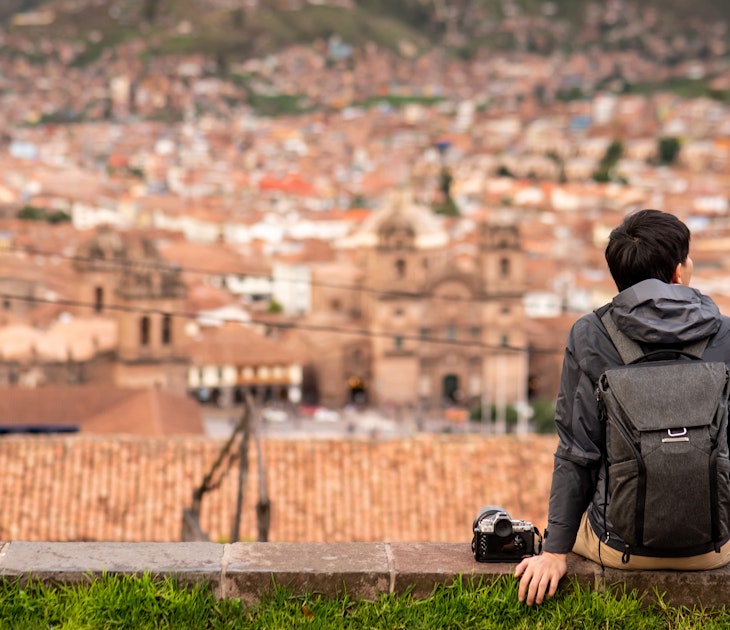
Budget Travel
Jan 10, 2024 • 6 min read
Peru has long been a destination for backpackers on a budget and now other travelers have caught on – here's how to make your money go further on the road.
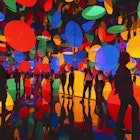
Jan 2, 2024 • 7 min read

Jan 2, 2024 • 11 min read

Dec 27, 2023 • 8 min read

Dec 14, 2023 • 3 min read
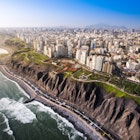
Dec 12, 2023 • 5 min read
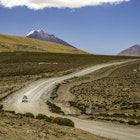
Dec 7, 2023 • 6 min read
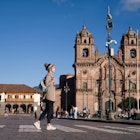
Nov 26, 2023 • 6 min read
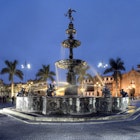
Nov 24, 2023 • 5 min read
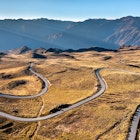
Nov 16, 2023 • 6 min read

IMAGES
COMMENTS
Overview. Peru is an immense country, yet most travelers spend the majority of their time in and around the region of Machu Picchu in the south. The many pre-Incan civilizations that thrived in the North are less known. The Peruvian government has only started to document (with international support) these cultures in the past 20 to 30 years.
Trujillo 2-3 days. A pretty colonial city, it is nice to simply walk around and enjoy the views. However, it is also a great home base for taking day trips to ancient ruins. Most people come to Trujillo to see the famous Chan Chan, which are ruins are an ancient city built from mud but with tours ranging from $5-10 I highly recommend spending a ...
4 benefits of visiting Northern Peru with Intrepid Travel. We know Peru - both north and south - like the back of our hands, but we thought it was worth clarifying exactly how we make our new Northern Peru trip just so unique and memorable: ... Northern Peru - beautiful, undiscovered and ripe for adventuring - awaits. ...
The places mentioned above represent some of the best attractions in Northern Peru, with a large variety of different things to see and do. You will experience beautiful coastal beaches, misty cloud forests, the beautiful waterfalls of the high jungle, and the steamy lowland jungle all in one amazing trip. Time Required for Northern Peru Itinerary
From left: Northern Peru's Gocta waterfall, one of the world's tallest at more than 2,500 feet; simplicity reigns at Kentitambo, a lodge in the cloud-forest town of Leymebamba. João Canziani
Northern Peru is packed with unique treasures - cultural, archeological and natural. Blessed with fewer tourists and better coastal weather than either Lima or the south (particularly in the high season - May to September), the area encompasses city oases along the coast, secluded villages in the Andes - where you may well be the first foreigner to pass through for years - and is ...
After lunch in Trujillo, we will travel to the archaeological site of El Brujo in Magdalena de Cao city. This is one of the most valuable archaeological sites on the northern coast of Peru. It has a long cultural sequence of occupation that began in the pre-ceramic period (3000 B.C.). Moche culture (0-700 A.D.) left many pieces of evidence in ...
Moyobamba. Heading east in northern Peru takes you from the surf-beaches of Máncora, via the mist enshrouded cloud forests of the Northern Highlands, to the gates to the world's largest rainforest at Moyobamba. Moyobamba is often dismissed as a glorified bus-stop for people heading deeper into the Amazon jungle, but the so-called 'city of ...
1. Exploring adobe brick pyramids in the Santuario Histórico Bosque de Pomac. Just one-hours' drive from Chiclayo in the Ferreñafe province of Peru, the Santuario Histórico Bosque de Pómac was the site of my first northern Peru tour with Better Places Travel. A protected area home to the country's most important forest of the endangered ...
The Moche Culture of Northern Peru 5 Wonderful Things to Do and See in Northern Peru #02: Huaca of the Moon and the Monsters The Moche Culture of Northern Peru was not that different from the Incas that inhabit the Eastern region of the country (check out how to get from Lima to Cuzco here), the main difference was that the Moches lived in arid zones and were based very close to the ocean.
Visit the Gocta Waterfall, the third-highest waterfall in the world, located in the Amazon rainforest near the town of Chachapoyas.; Take a boat trip on the Maranon river, which is one of the main tributaries of the Amazon, to see the diverse range of wildlife in the area.; When planning your trip to Northern Peru, remember that northern Peru can be pretty hot during the day, especially in the ...
The climate of Northern Peru varies tremendously depending on the area. On the coast, the elevation never strays far from 100 m (328 ft) above sea level, meaning the temperature tends to stay at around 30°C to 40°C (86-104°F) during the best months of November to March.
6. Chan Chan. This massive ancient city, near the modern-day city of Trujillo, is another UNESCO World Heritage Site. From around 900 AD to 1400 AD, Chan Chan served as the center of one of the largest societies captured by the Inca: the Chimú. The Chimú thrived in Northern Peru, and Chan Chan is their crown jewel.
Boutique travel agency, PeruNorth, takes you where only the discerning dare to tread. Employ the experts to help you explore northern Peru's fascinating coast & hinterland. Myriad ways to visit Peru's vast Amazon region - comprehensive range of Amazon River cruises & lodges. Fully-customisable itineraries to fit in with your timeframe & South ...
The tourist circuits of Northern Peru await you with breathtaking landscapes and fascinating cultures. From ancient ruins to dazzling beaches, every step on this journey will be a revelation. Get ready to uncover hidden treasures and live unique experiences with Peru travel!
Embark on this adventure through Northern Peru, an area filled with impressive ruins and unforgettable natural beauty. Travel back in time as you visit Kuélap, an ancient citadel built in the mountains, immerse yourself in the magic of Gocta waterfalls, and discover Chachapoyas, the capital of the Peruvian Amazonas Region. If you only have a limited time to visit this area, we can tailor this ...
1) The adobe city of Chan Chan. This impressive archaeological site is situated close to Trujillo, on the coast of Northern Peru. It was built from 850 after JC onwards by the Chimu culture. With over 24 ha surface, it is the biggest city ever built in Adobe bricks. Today there are only 14 ha left and from these you can only visit a small part.
THE NORTH OF PERU . The north of Peru is brimming with treasures and it is much less travelled than the southern hot spots of Cusco and Machu Picchu.. Northern Peru travel never fails to surprise and impress, it is a fascinating part of this wonderful country well worth exploring.
This Northern Peru itinerary is an 11-day enchanted odyssey. Experience the distinctive regional customs, traditional food and dance of Peru's northern coast, Andean highlands and cloud forest jungle. The archaeological tours encompass wondrous ancient kingdoms, including. The Chimu, who built Chan Chan, the largest mud-brick citadel in the ...
Gocta Waterfalls & Kuelap: The Chachapoyas Experience. from $1287. 6 Days. Enjoy six full days of adventure, history and natural beauty as you travel around the highlights of northern Peru in the Chachapoyas region. Visit... Chan Chan, Trujillo & Kuelap Tour. from $2591. 12 Days. ...
Well-being Retreat for Women in Northern Peru. 7 Days, 6 Nights. Availability : April through November. Embark on this well-being retreat in Northern Peru with a group of women to practice mindfullness and discover the beauty of the region. From USD$900.
5. Huaraz. Best for mountaineering. Defined by Cordillera Blanca, one of the most impressive mountain ranges in the world, Huaraz is Peru's capital of mountaineering. The town itself is rather low-key, but it is home base for a number of outdoor excursions, which makes Huaraz a must-visit destination. Verdant valleys give way to the snowy ...